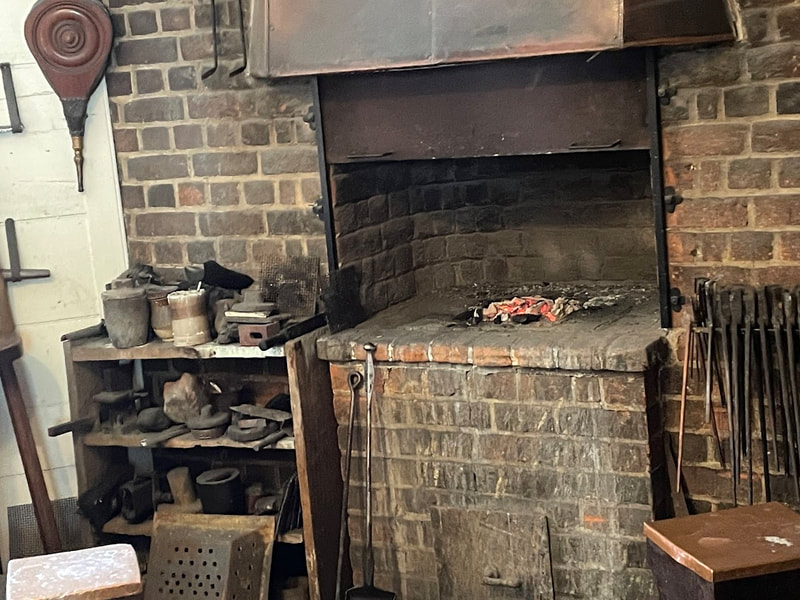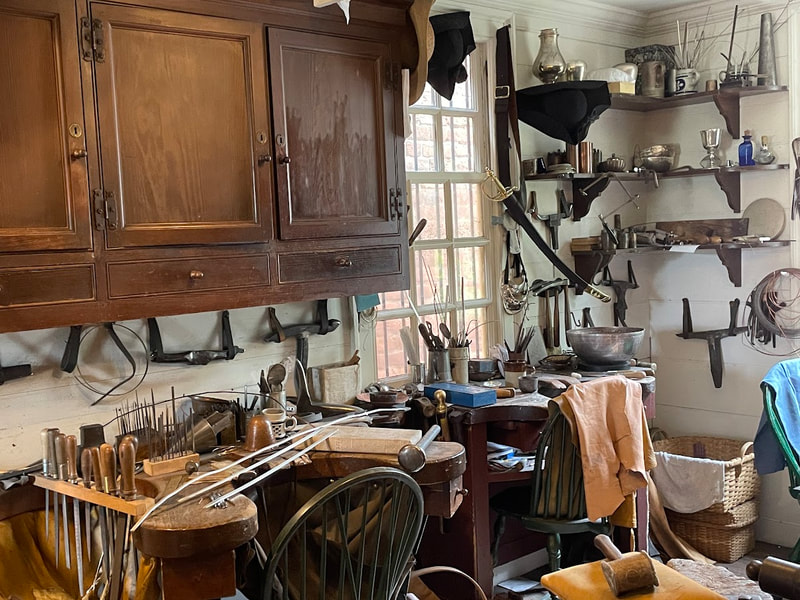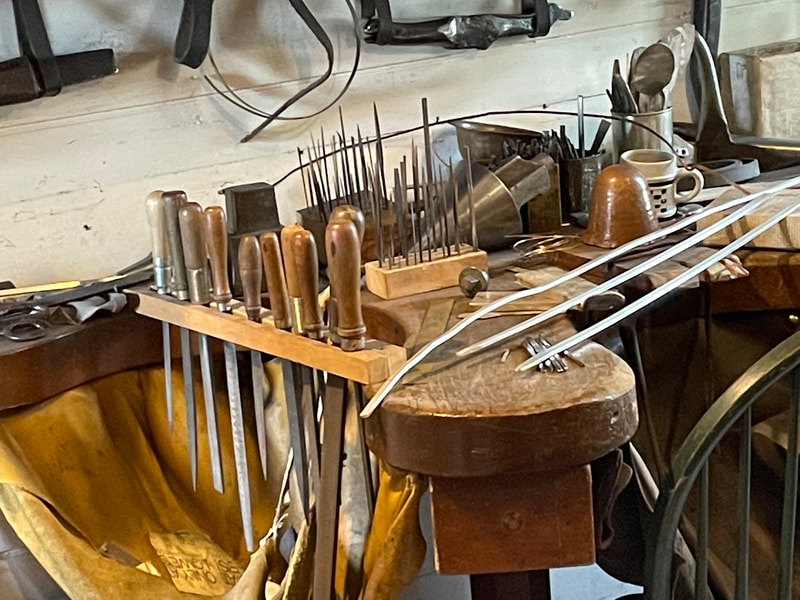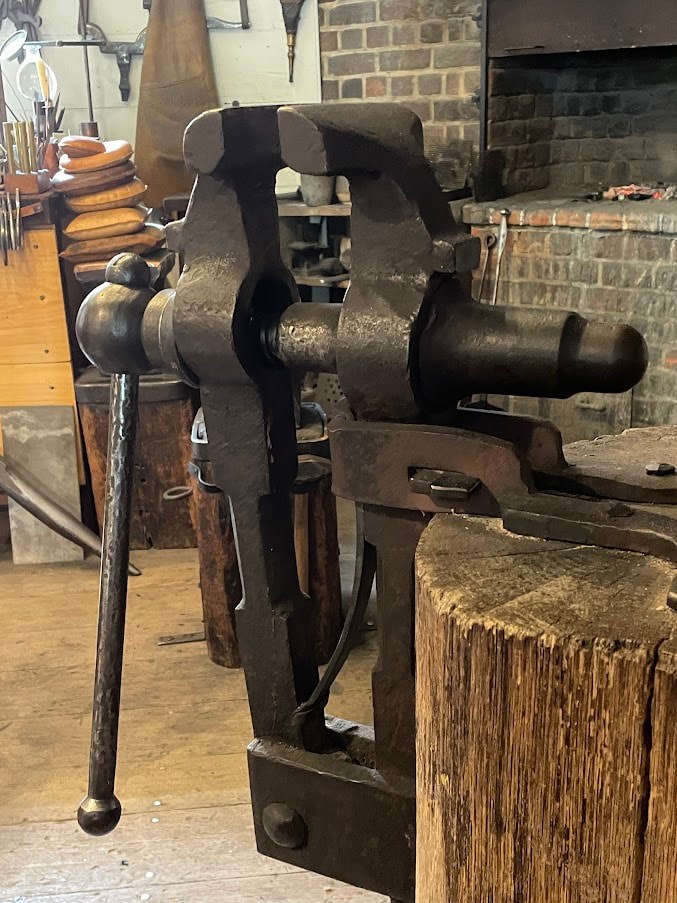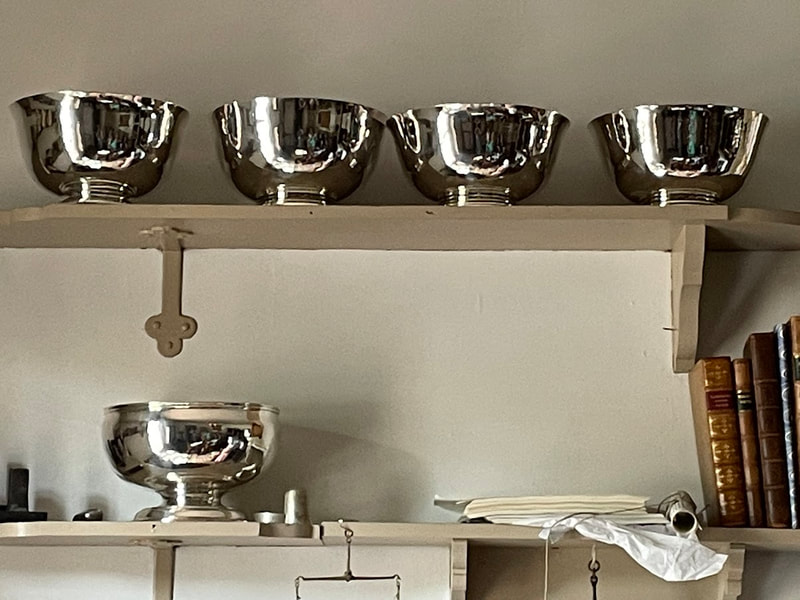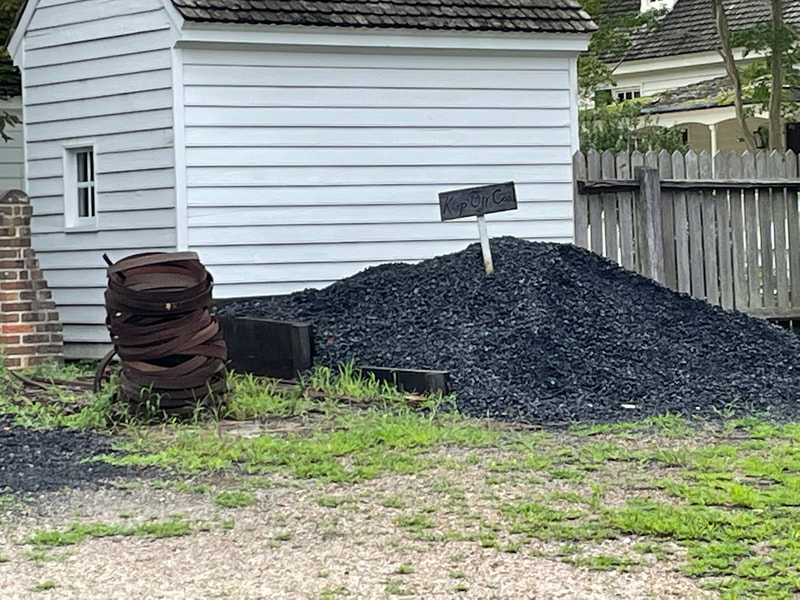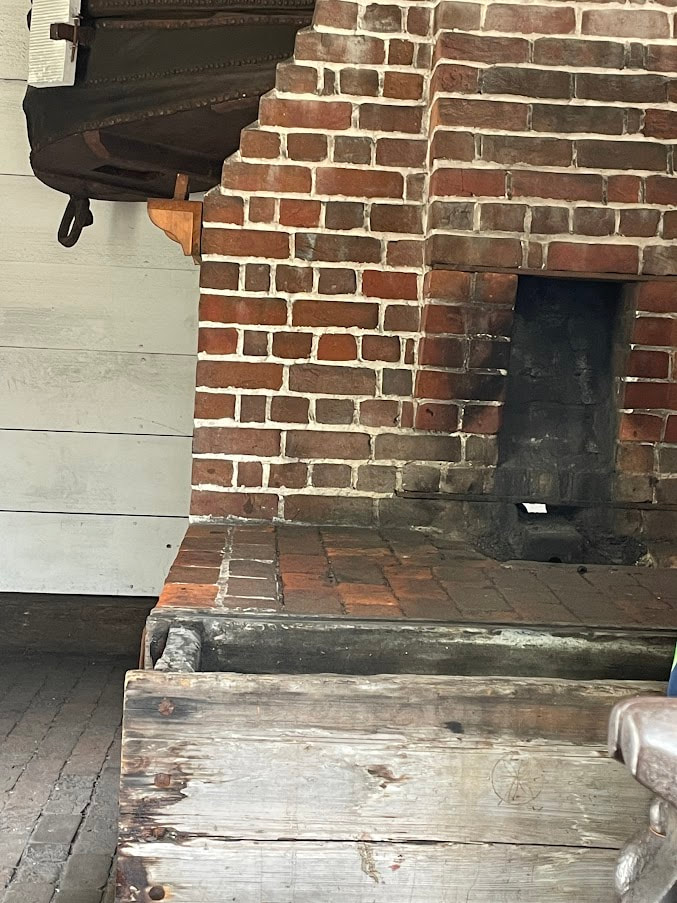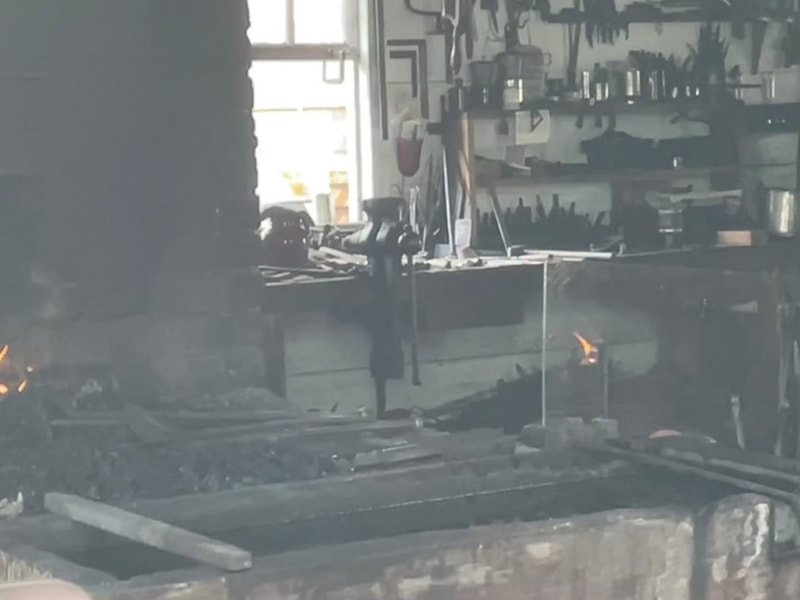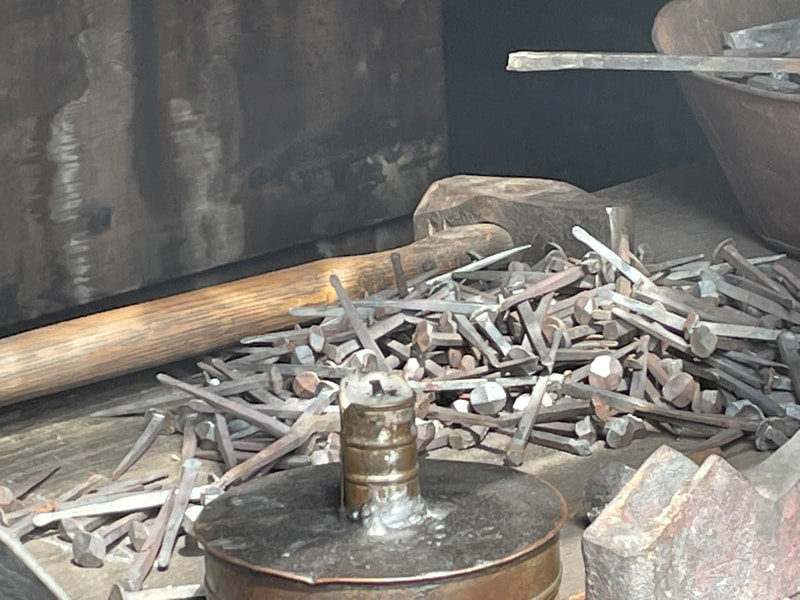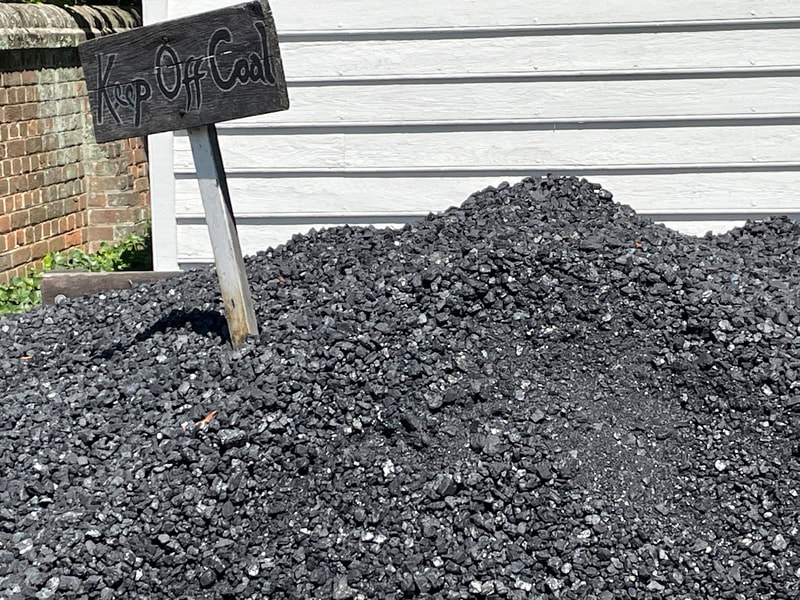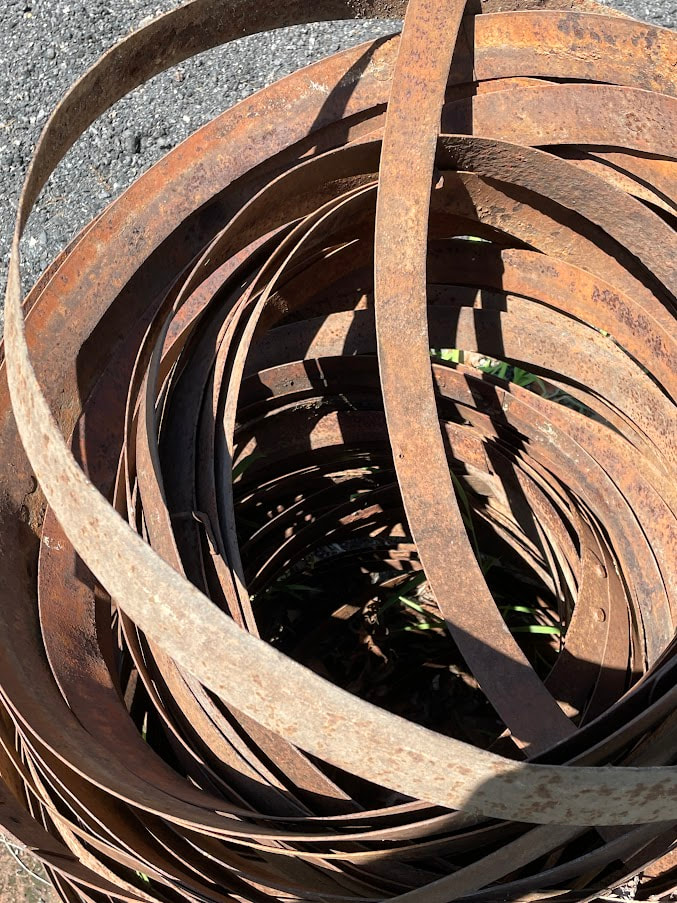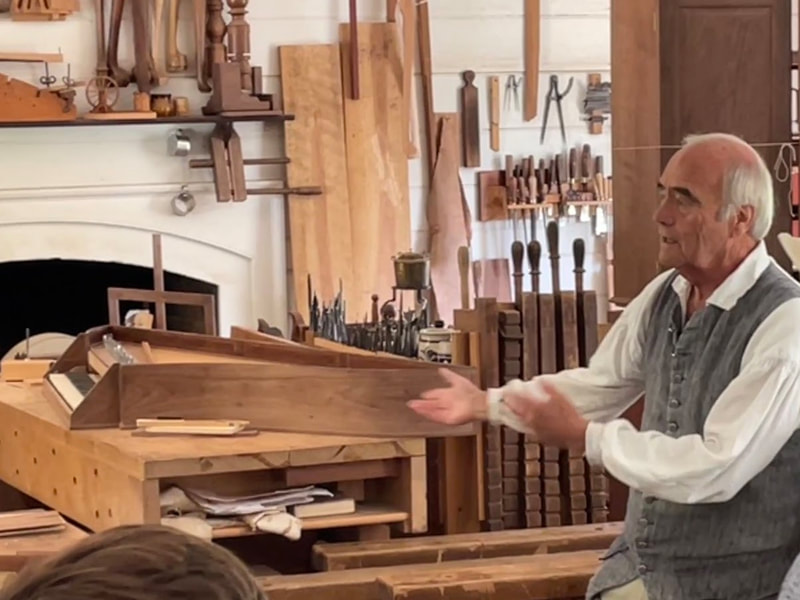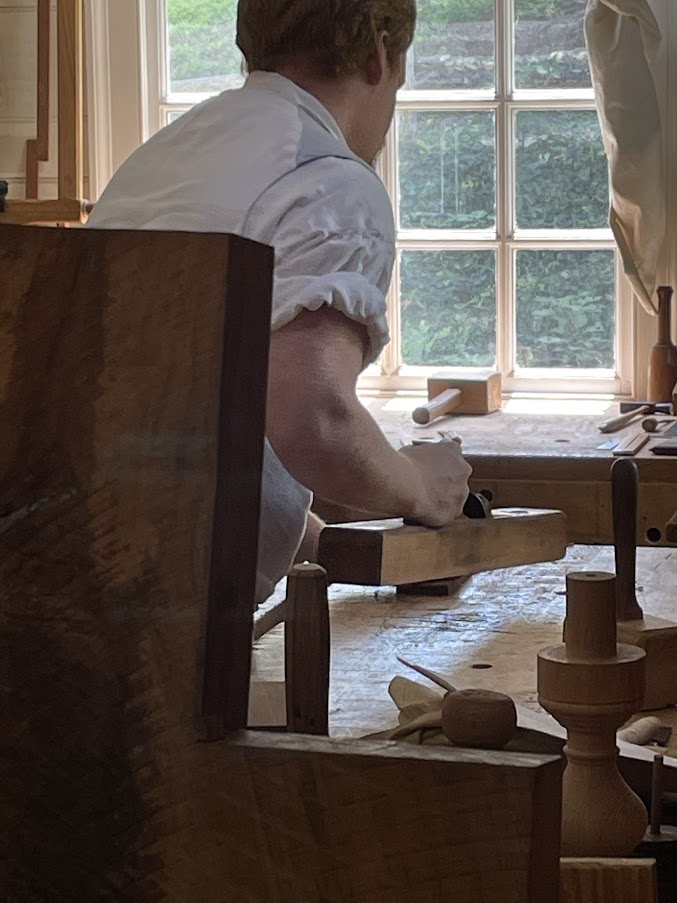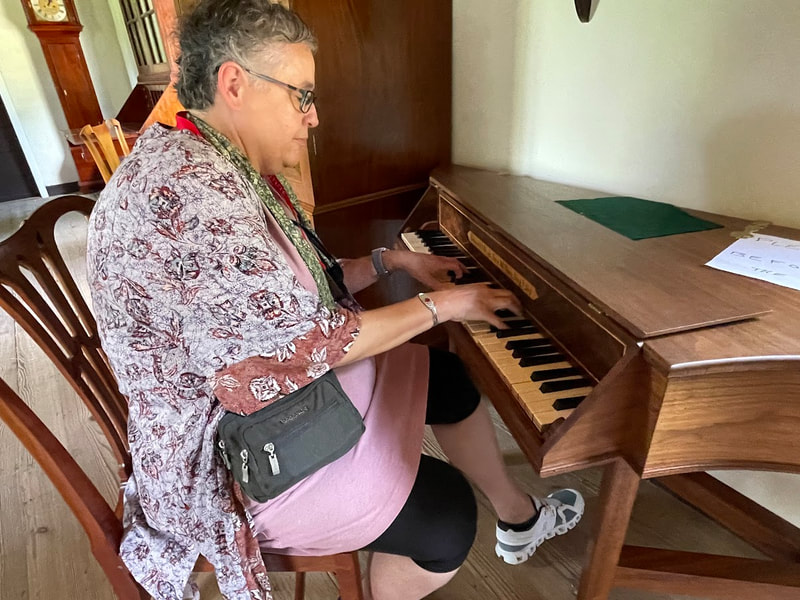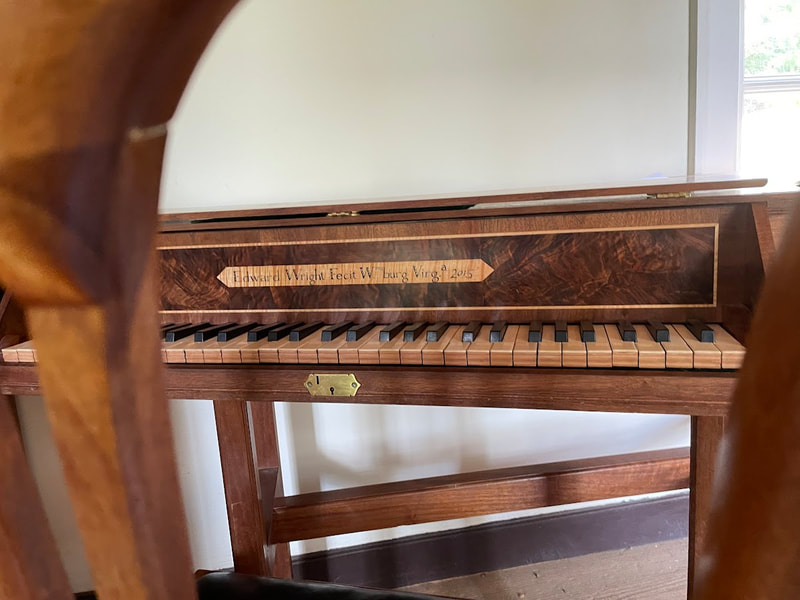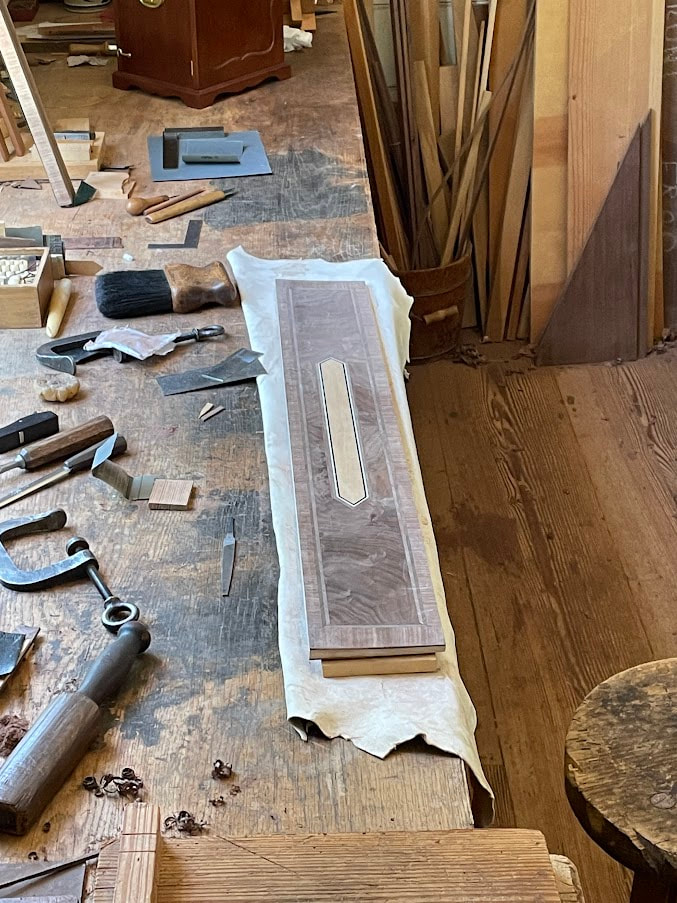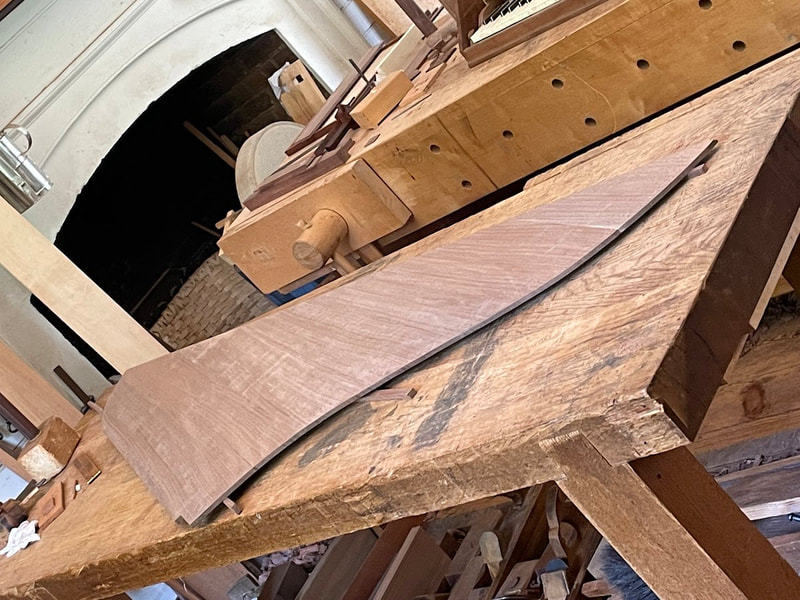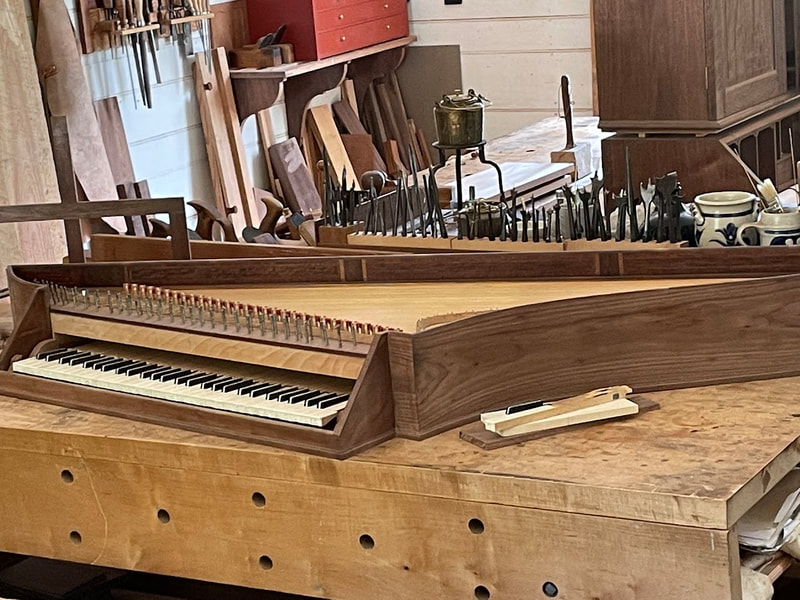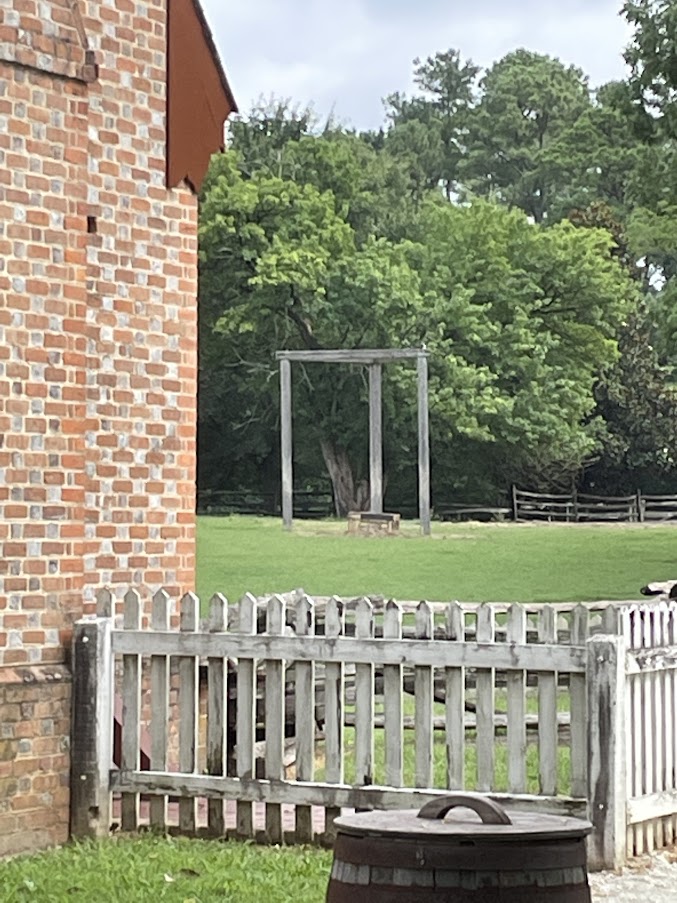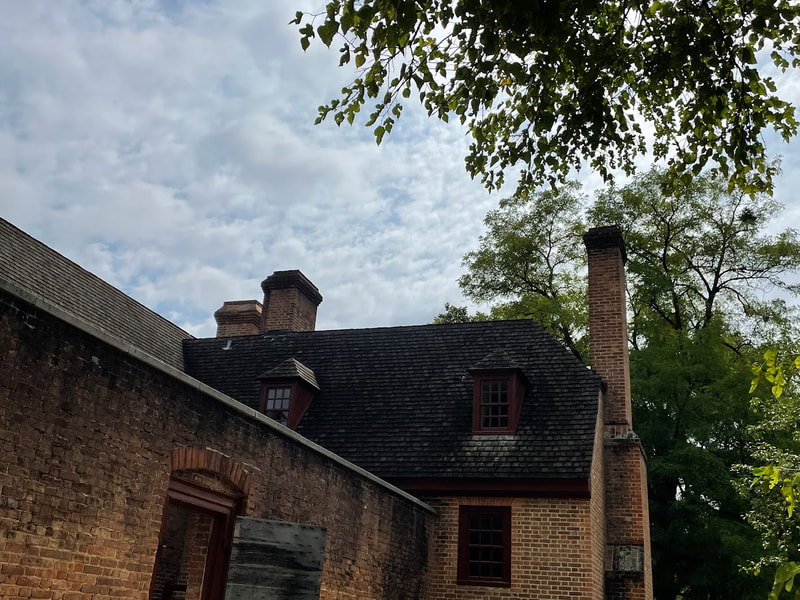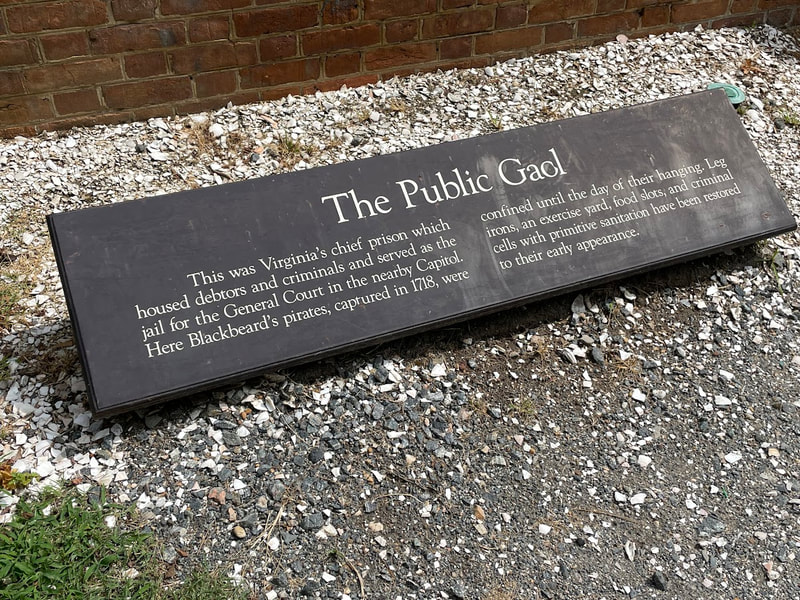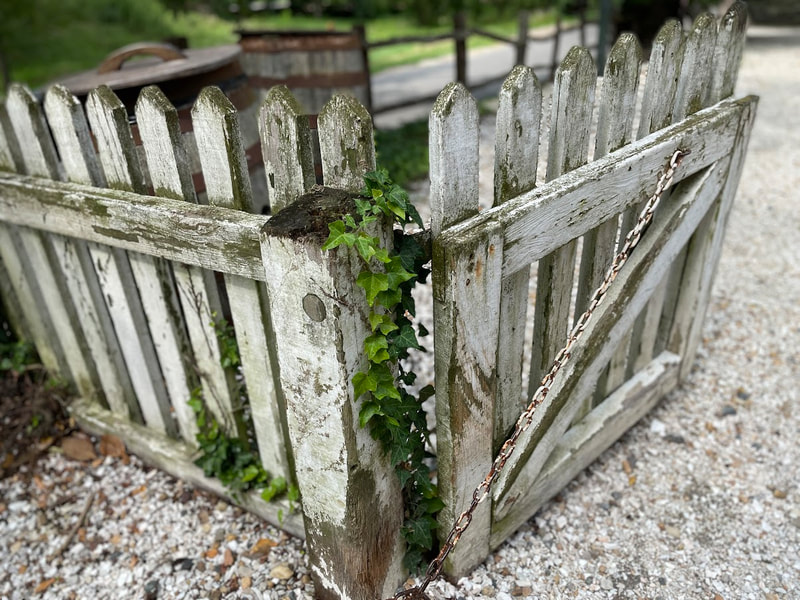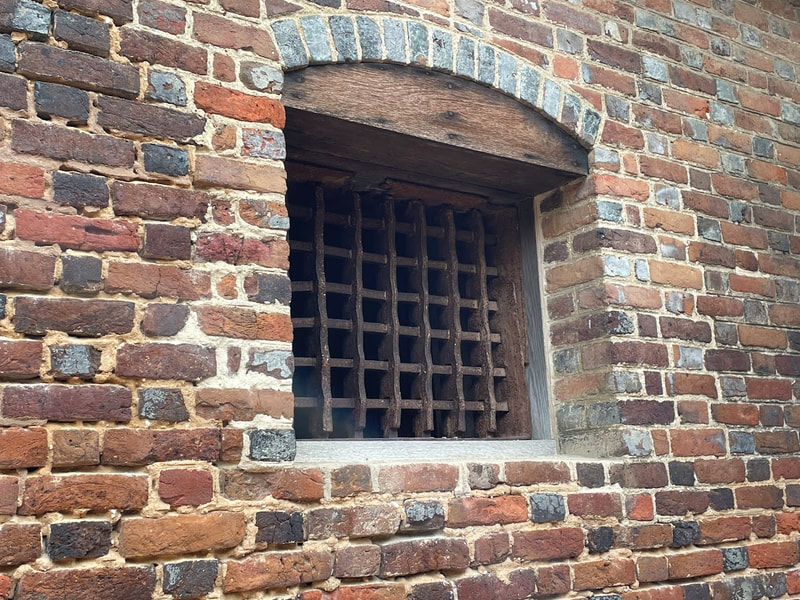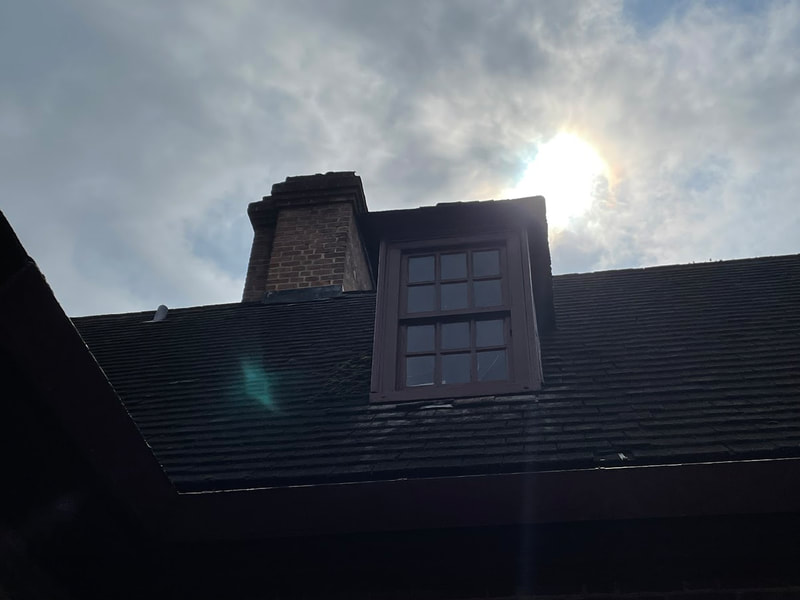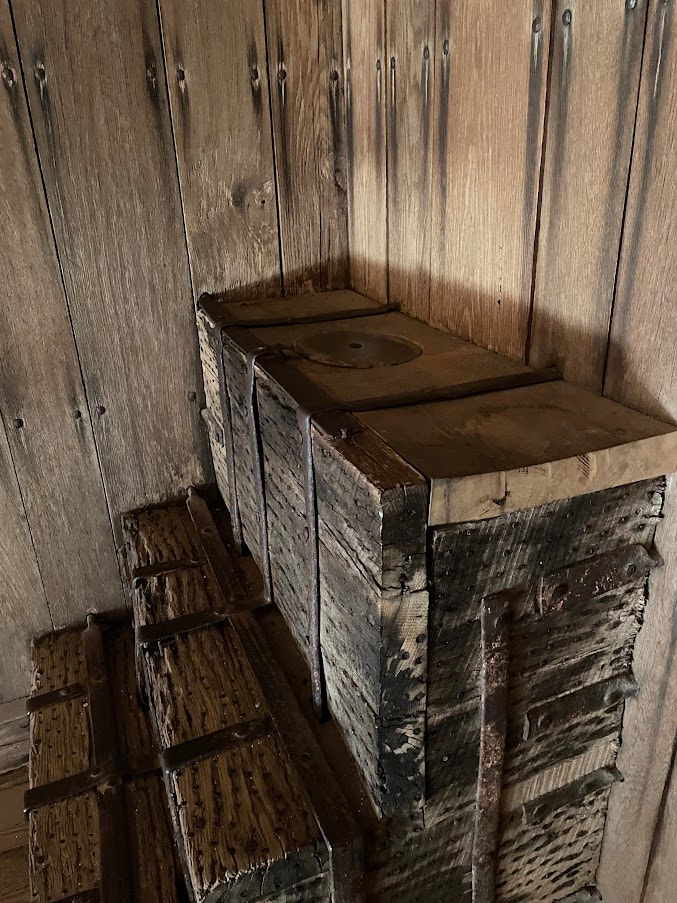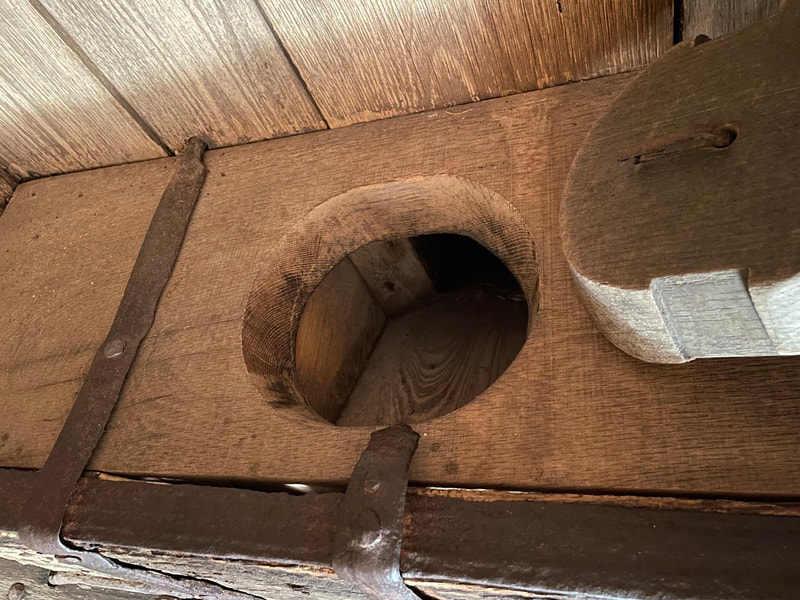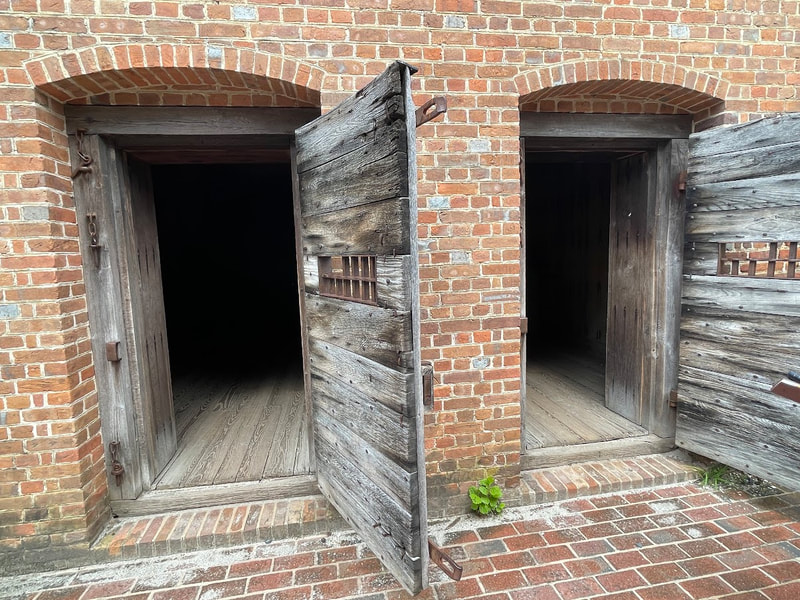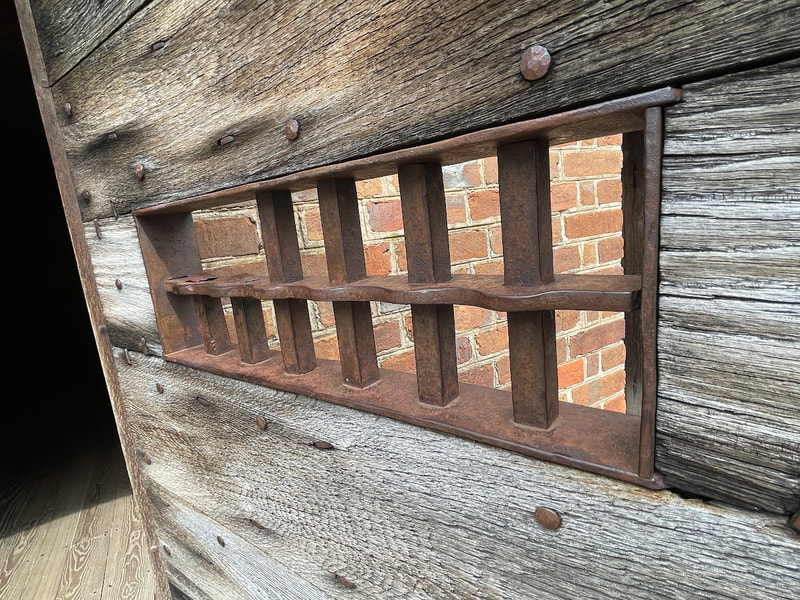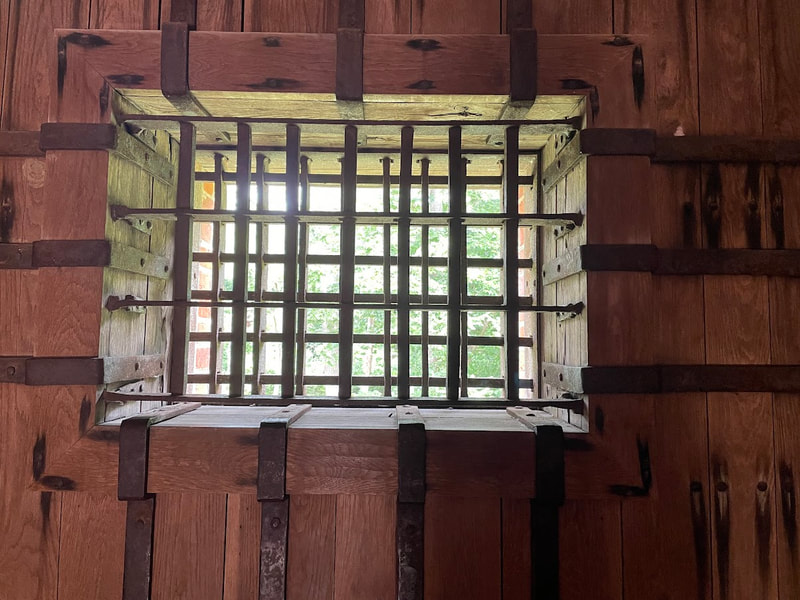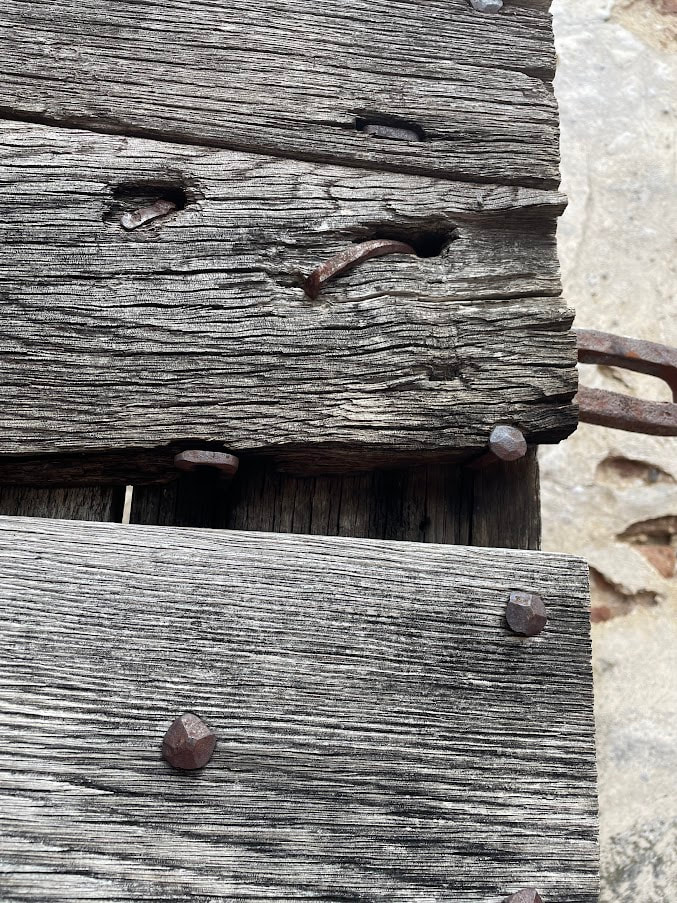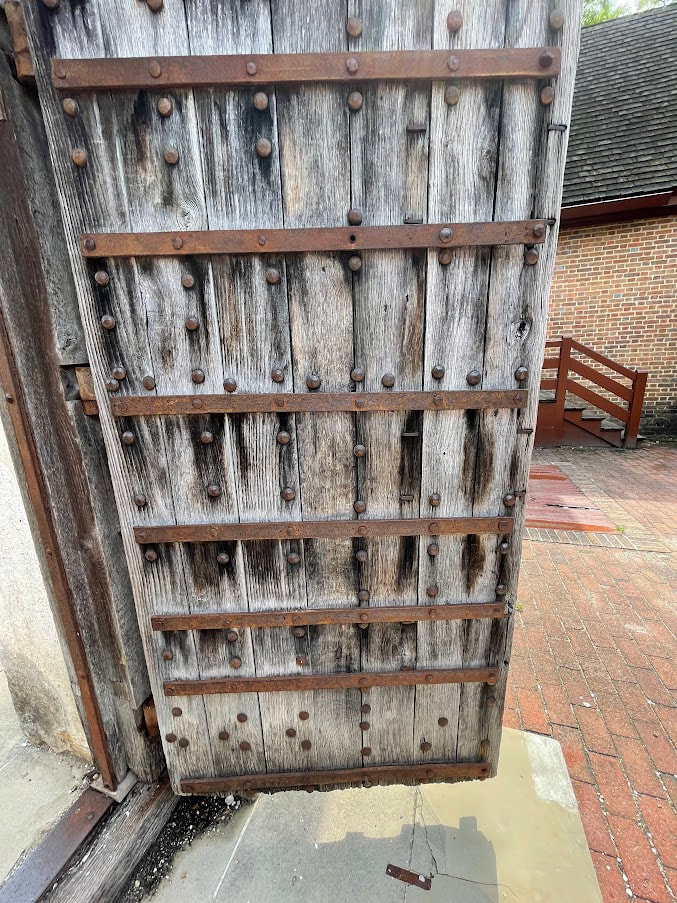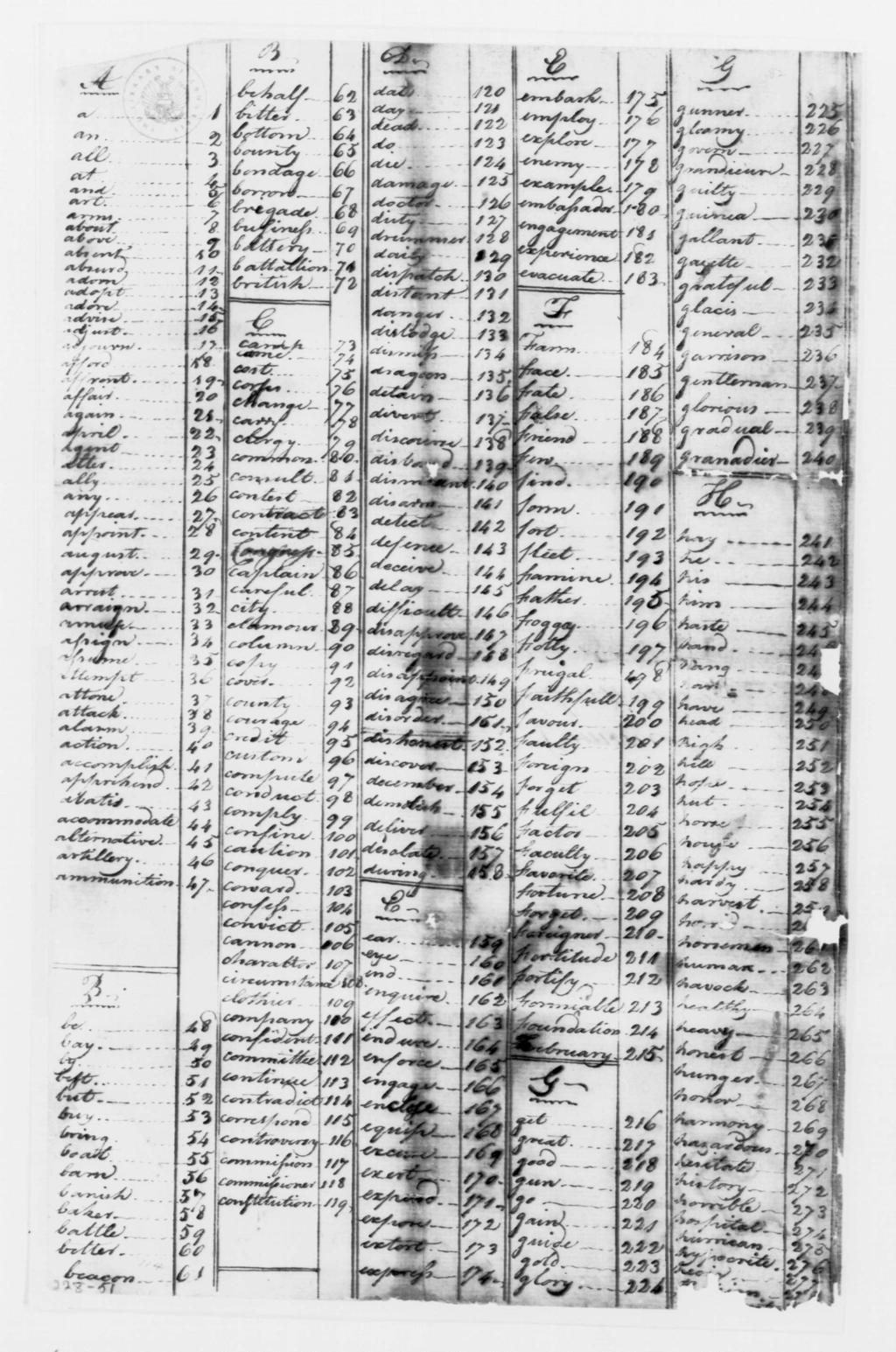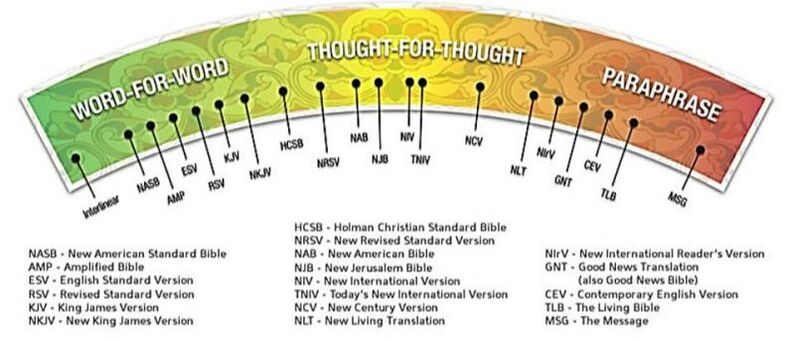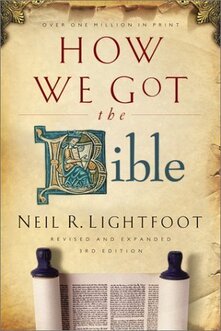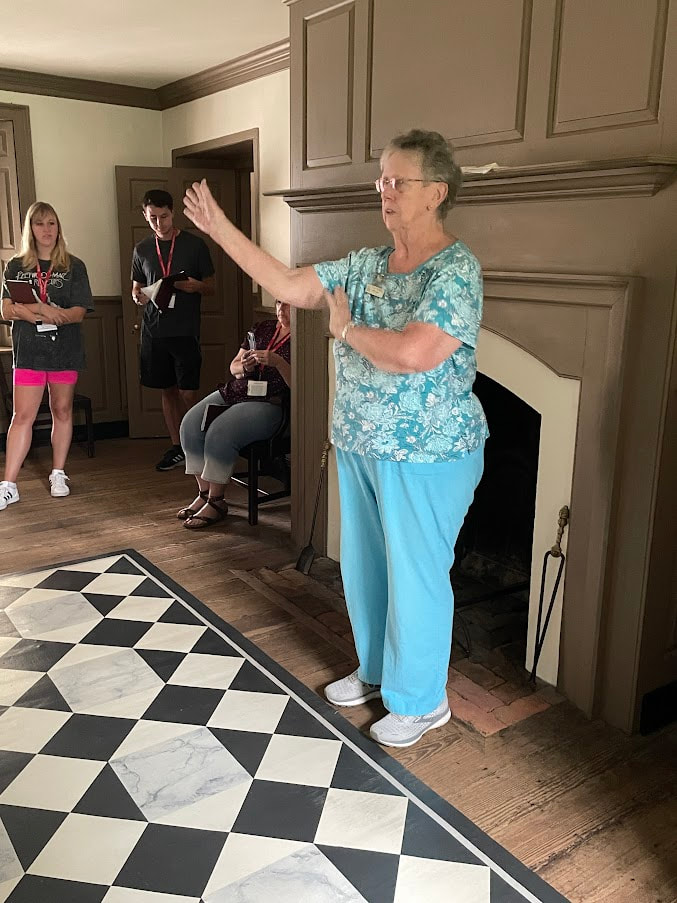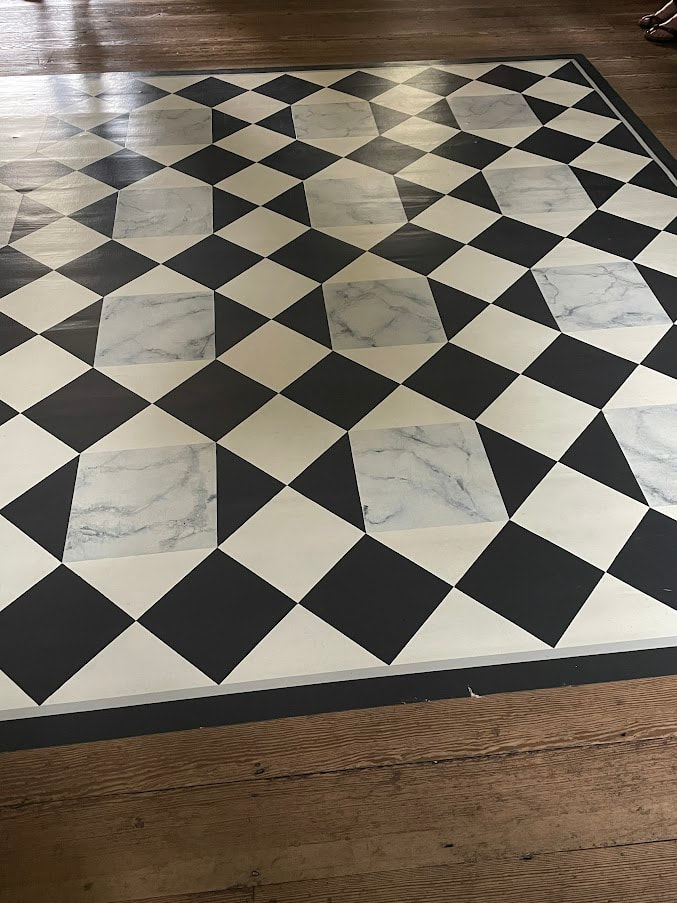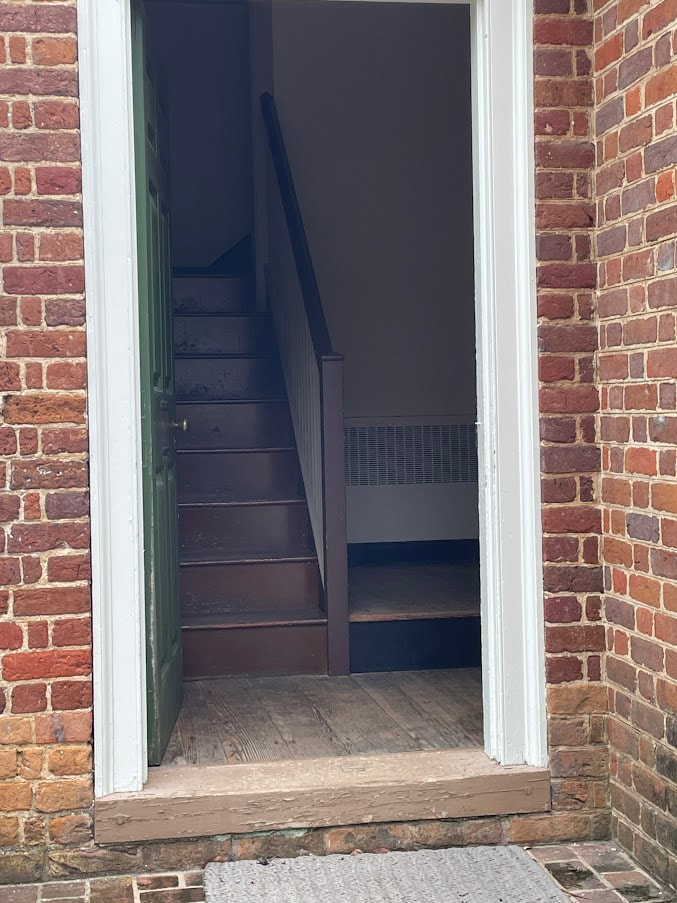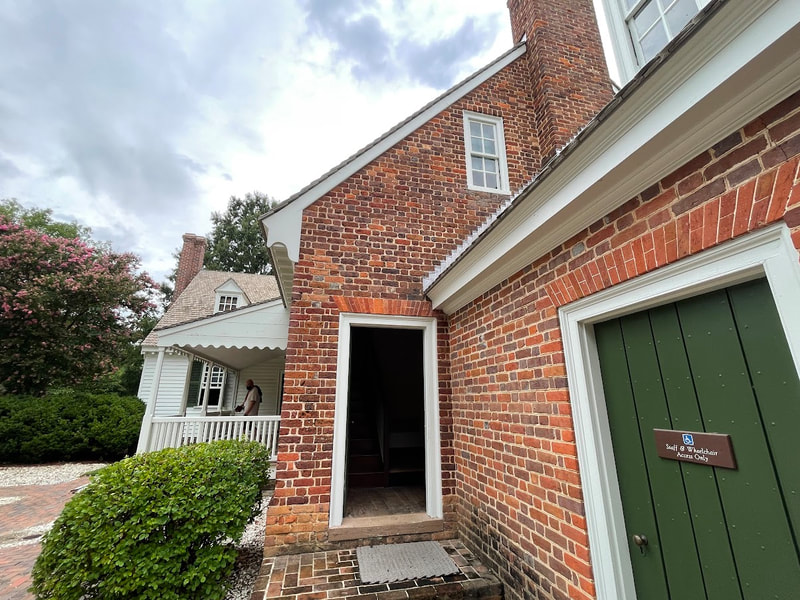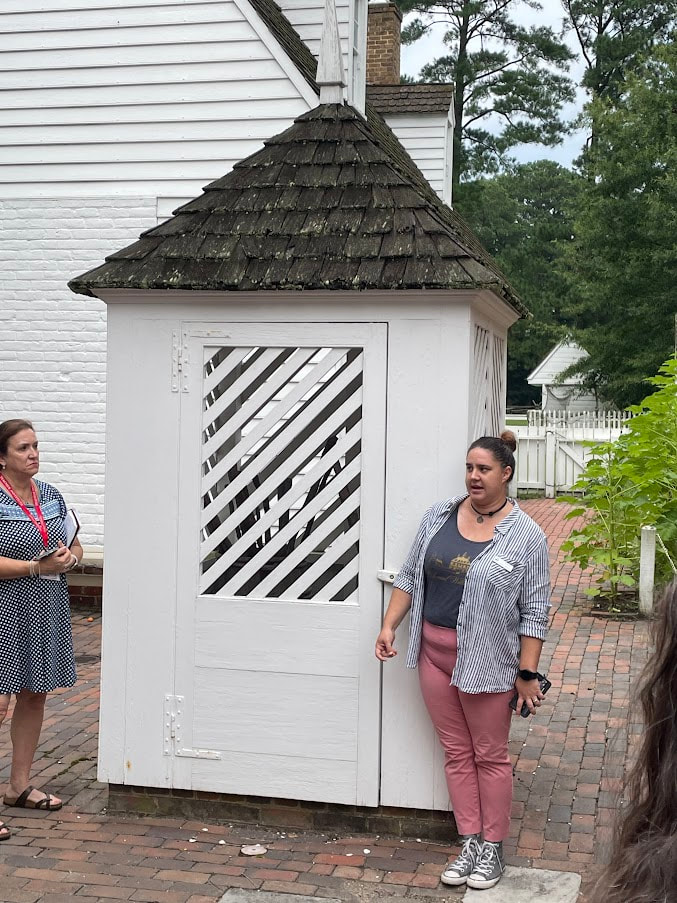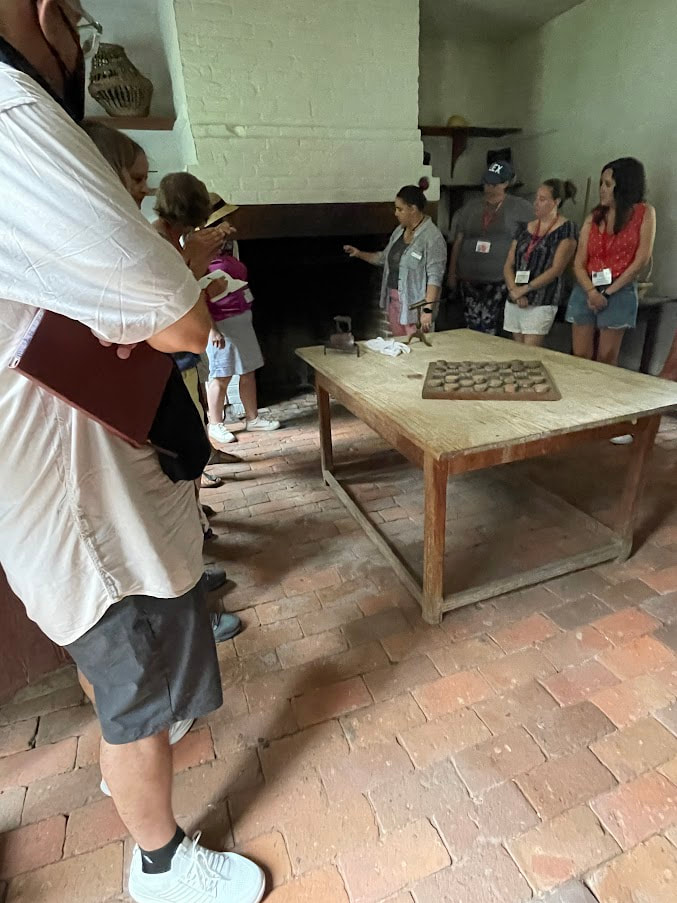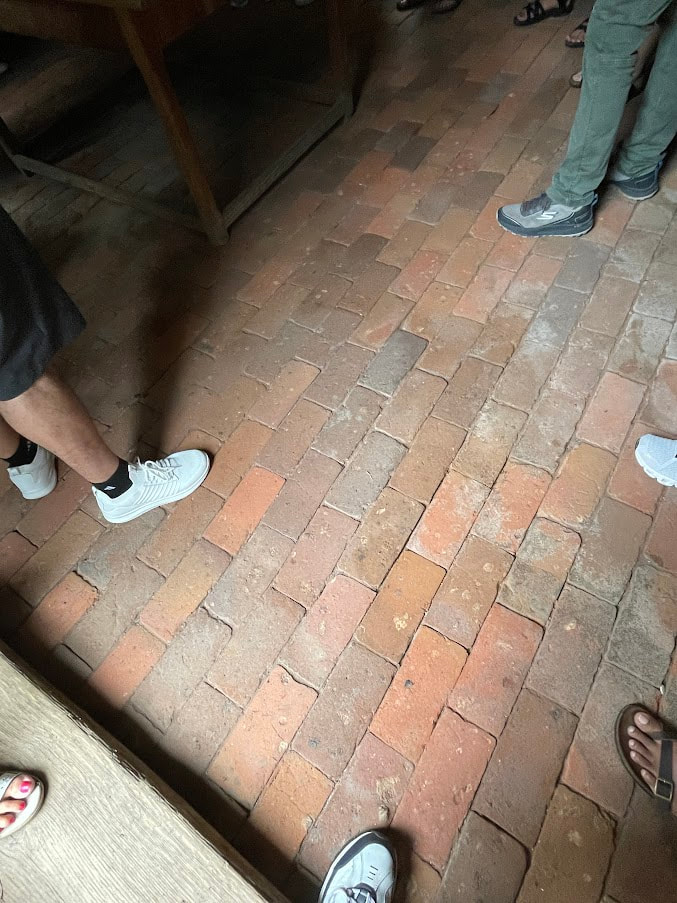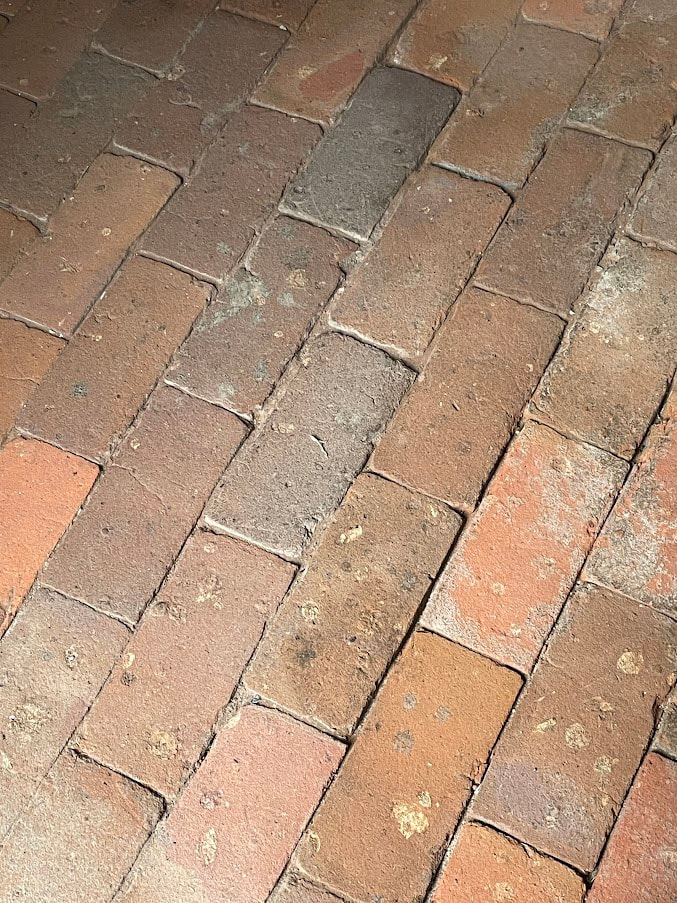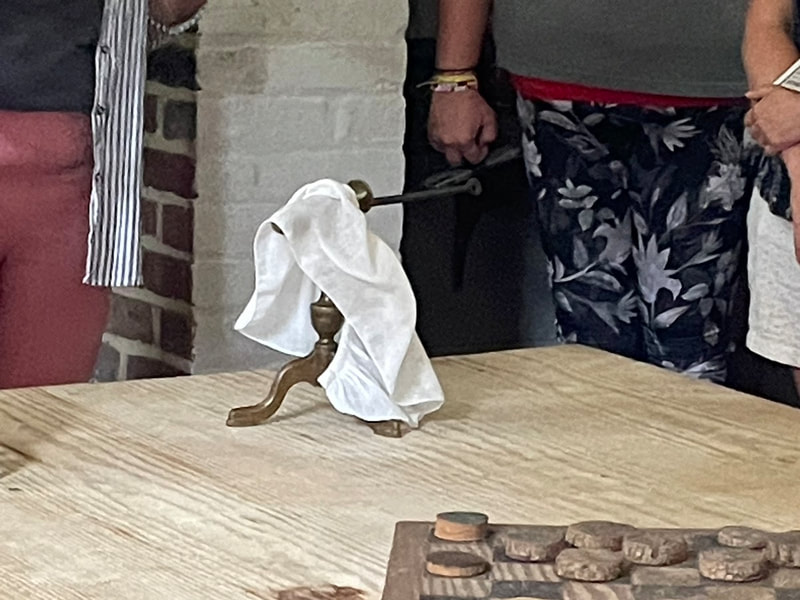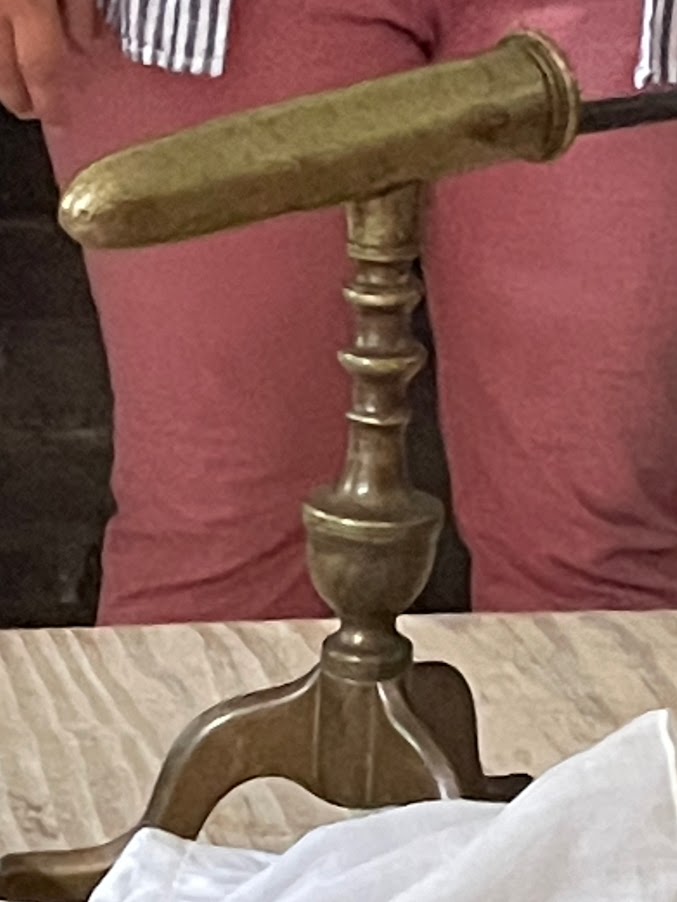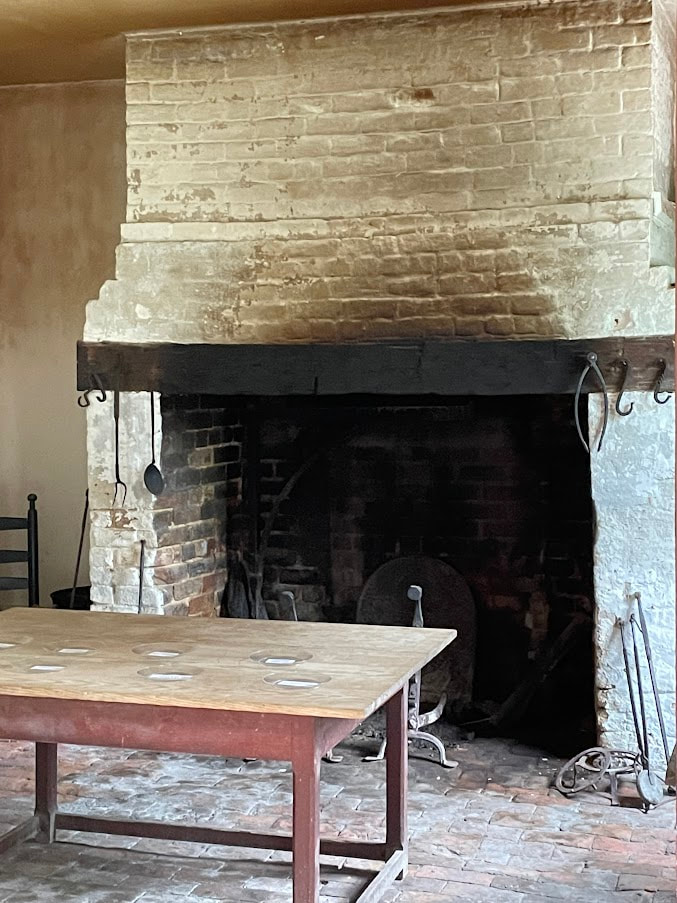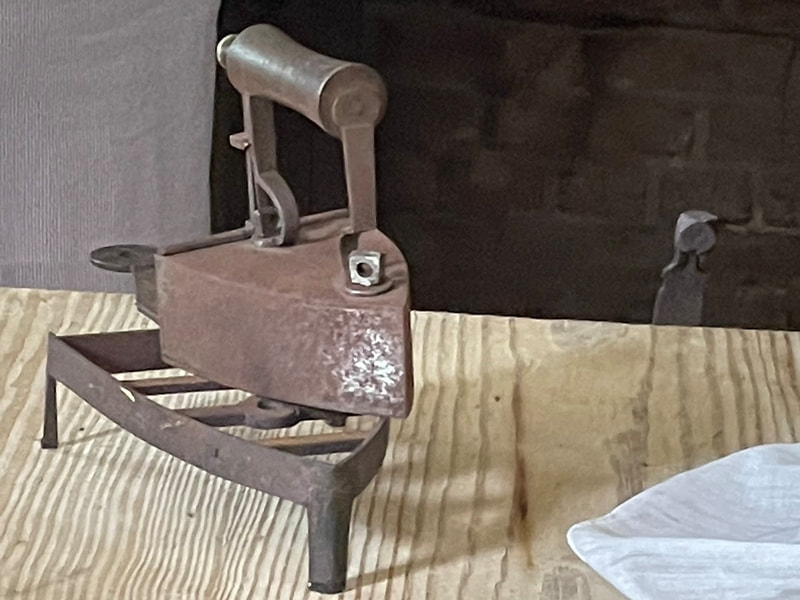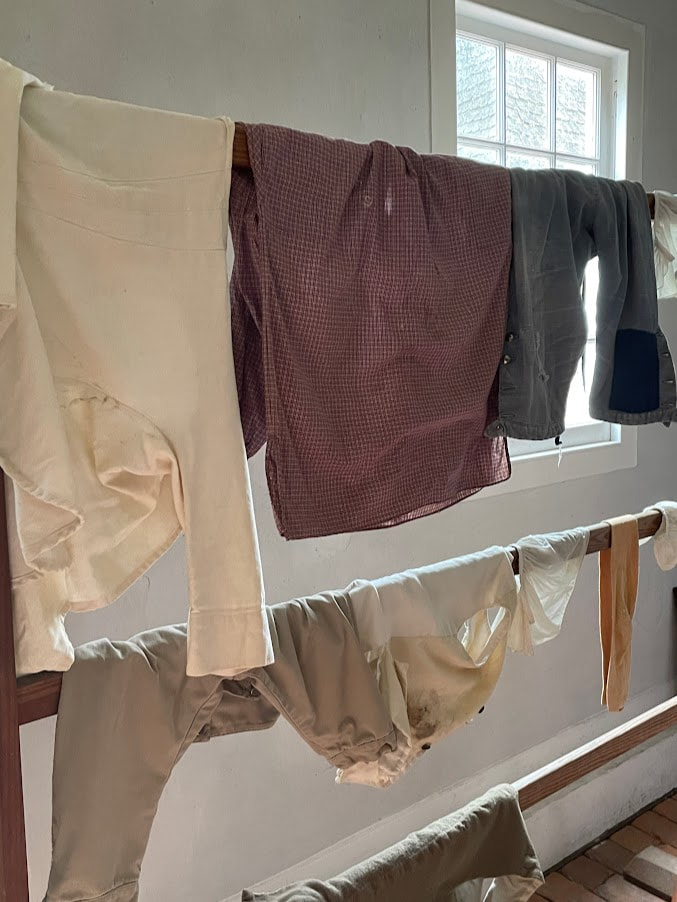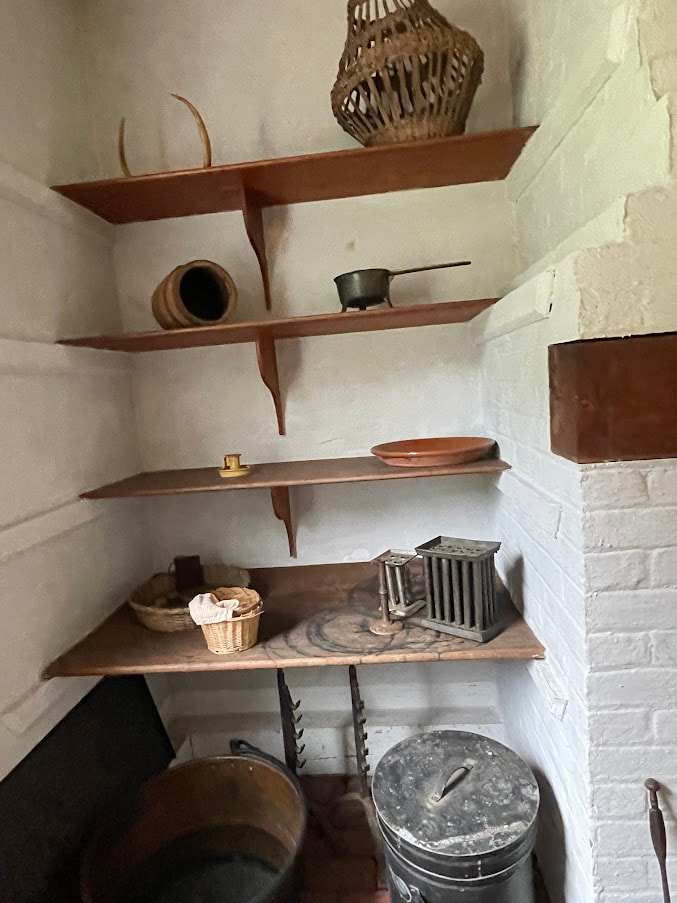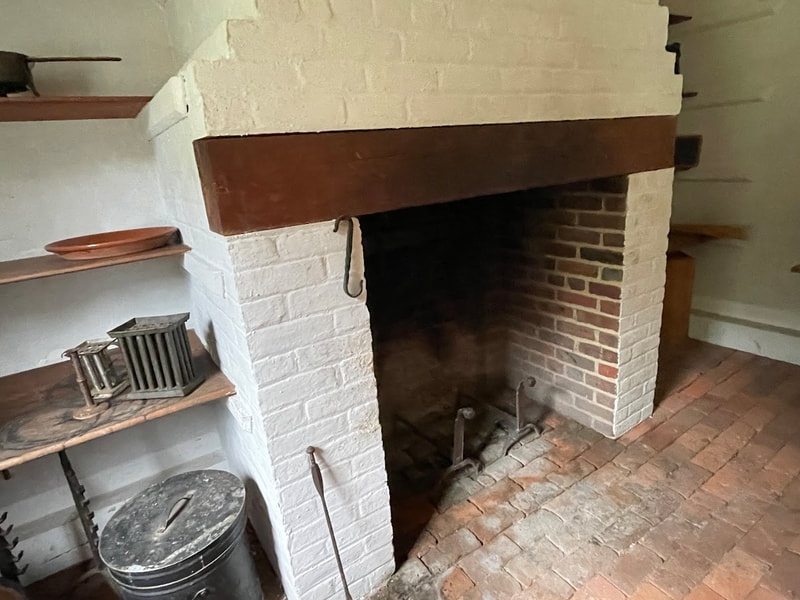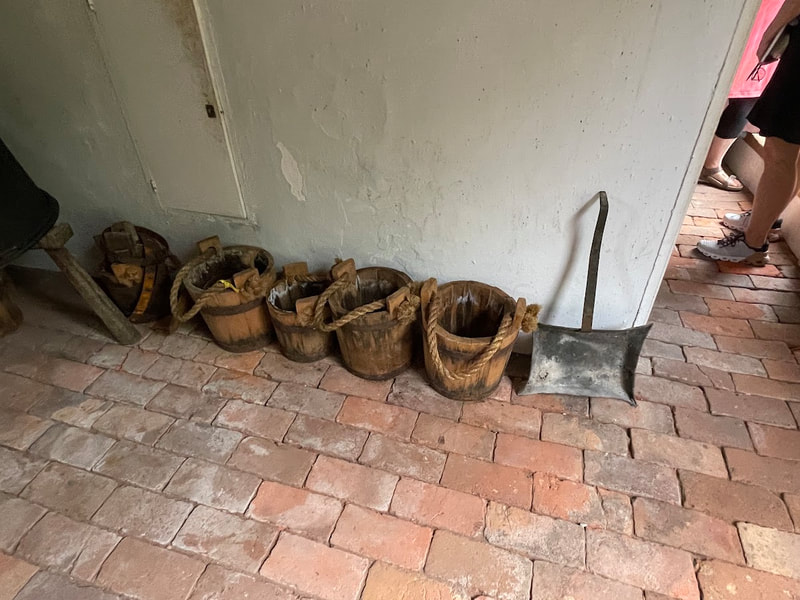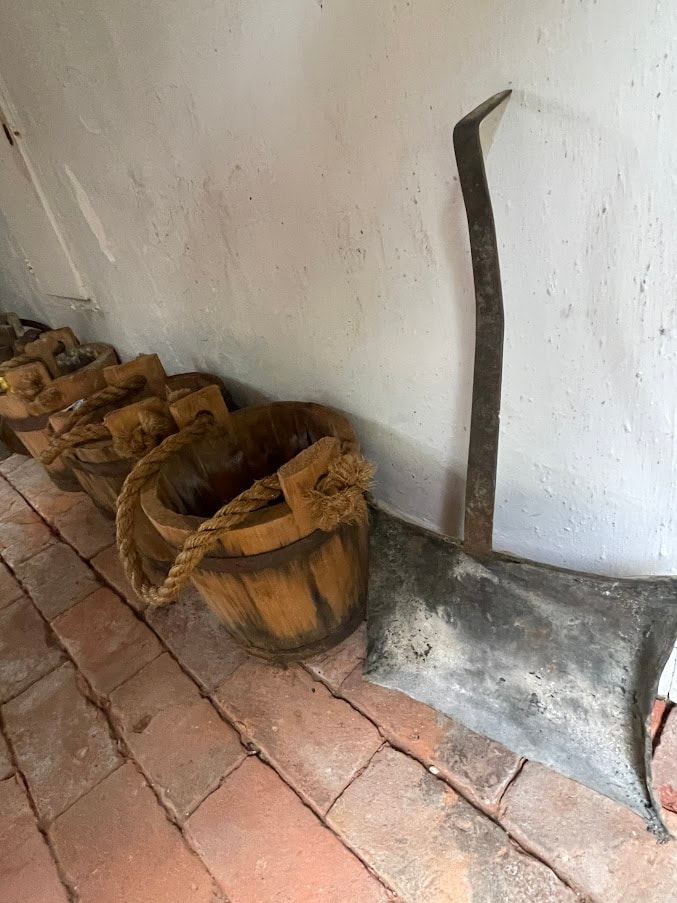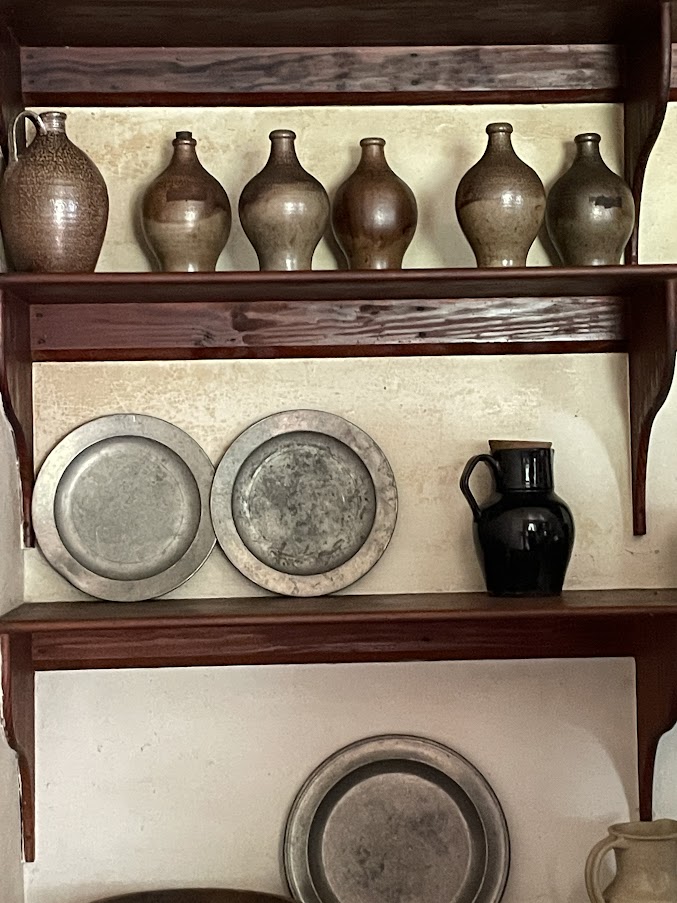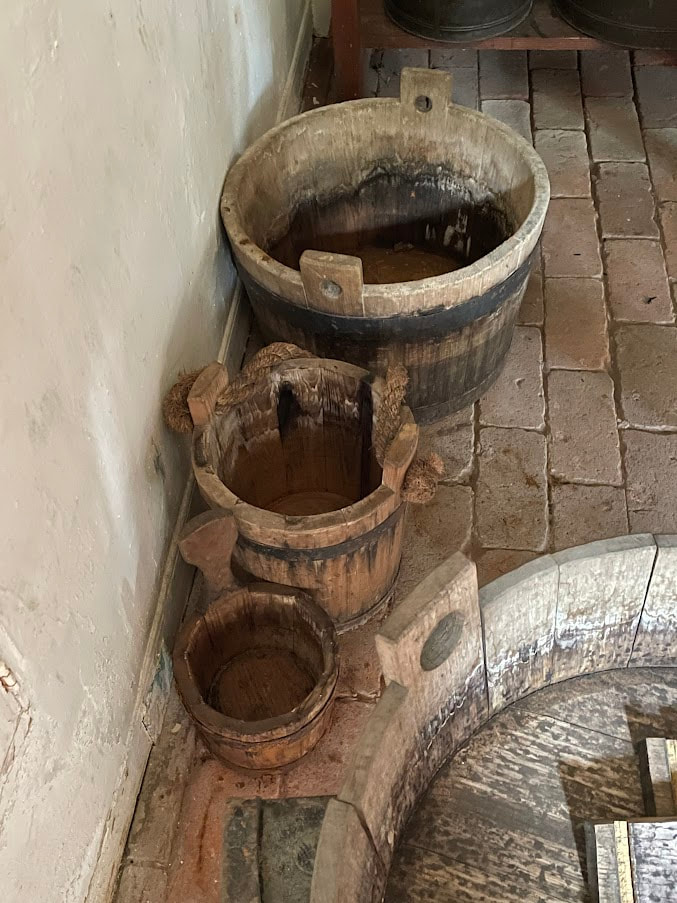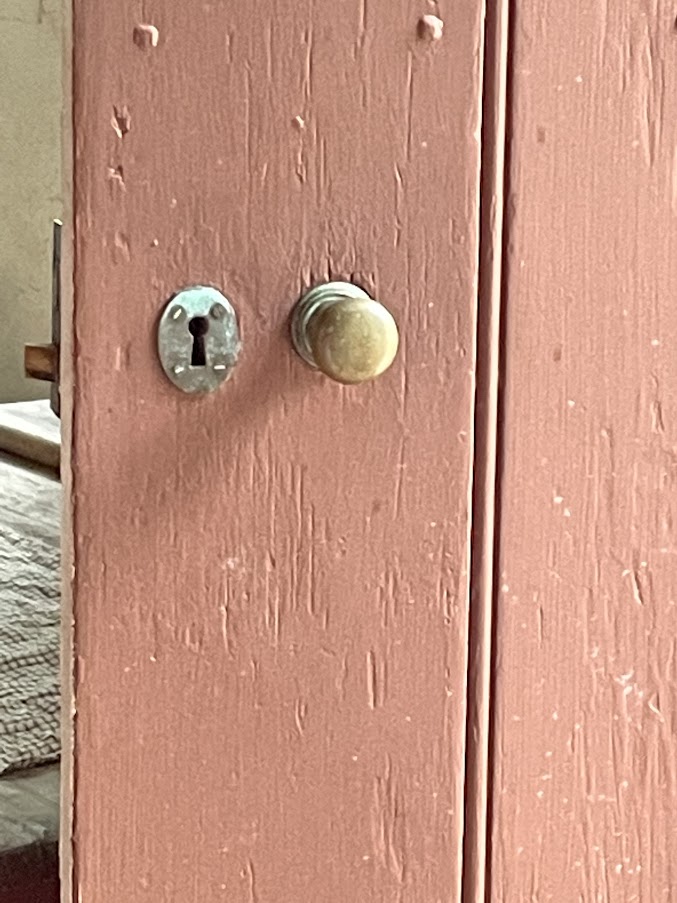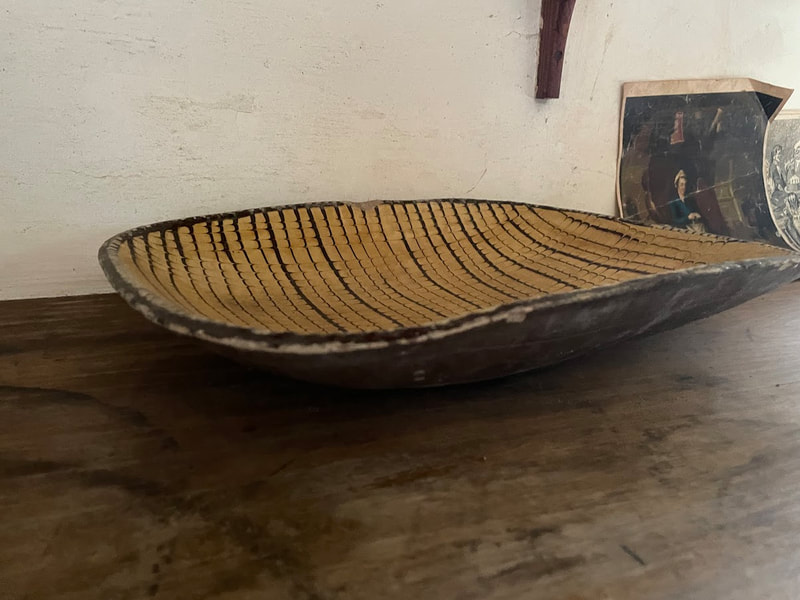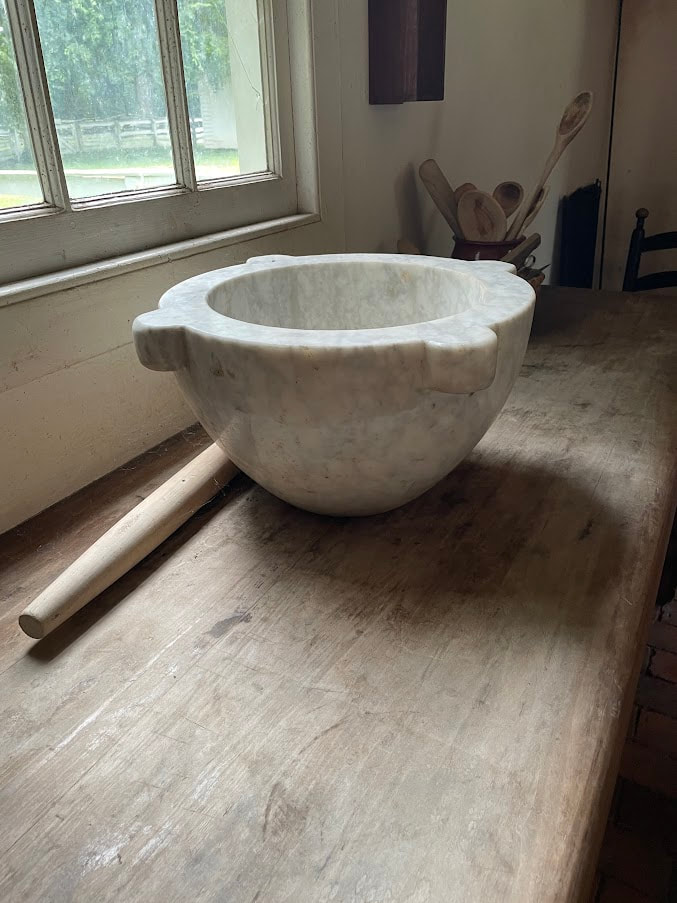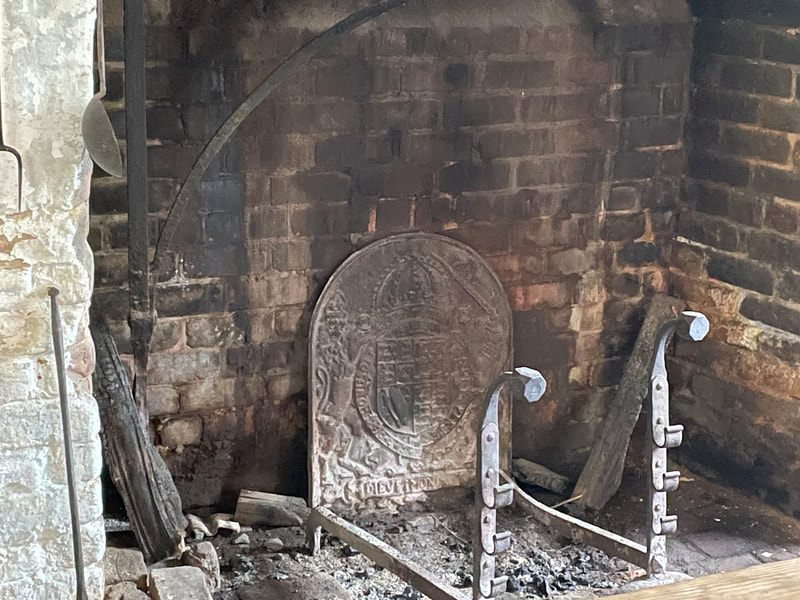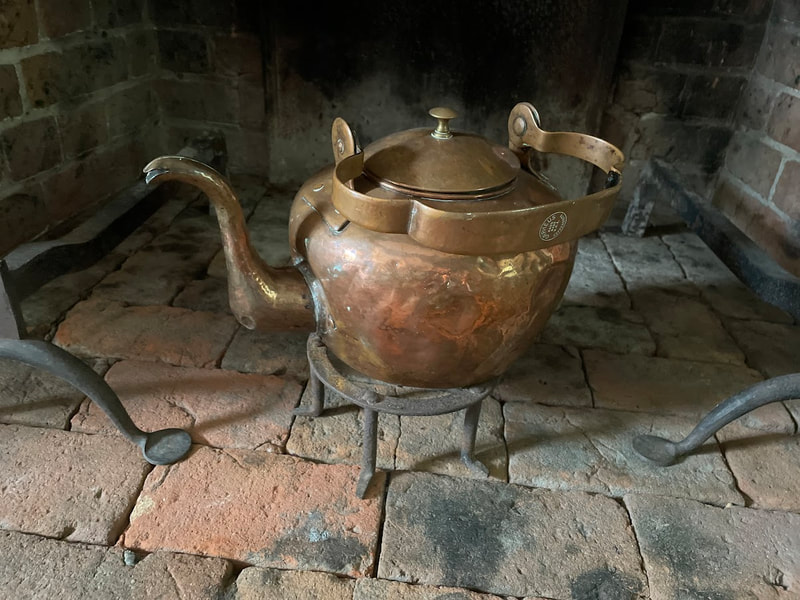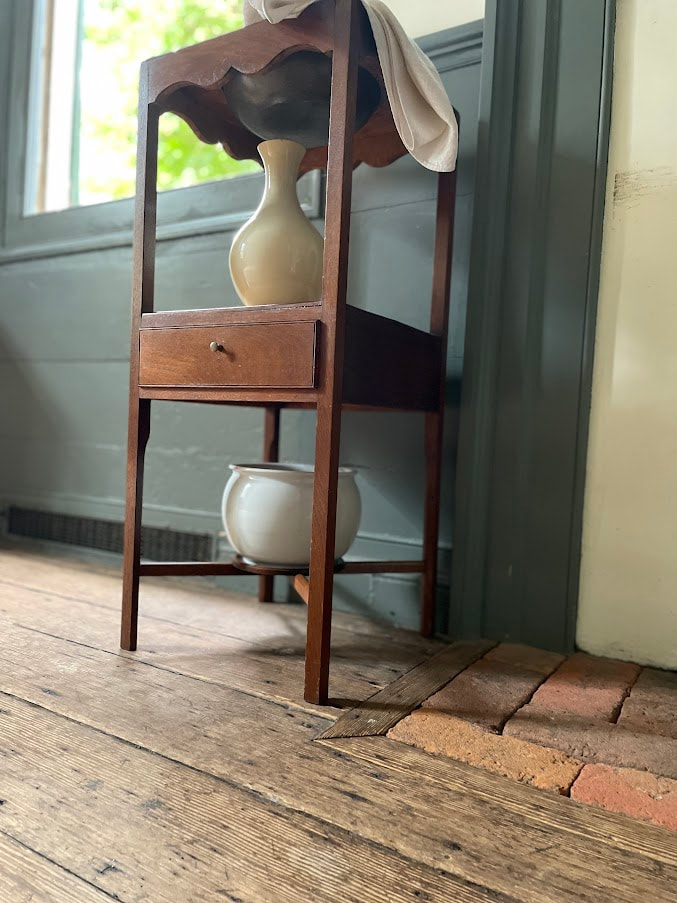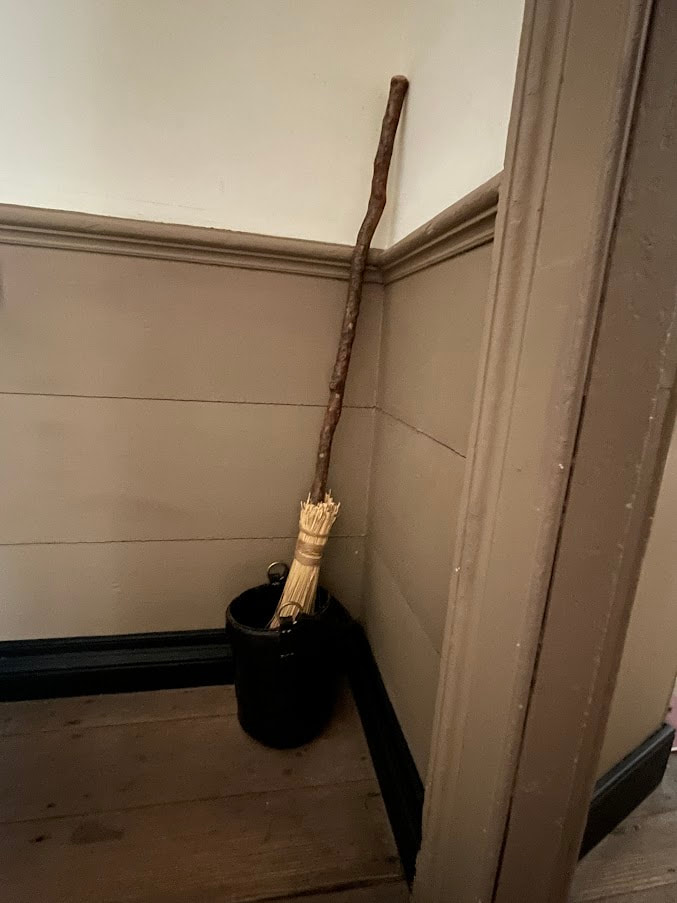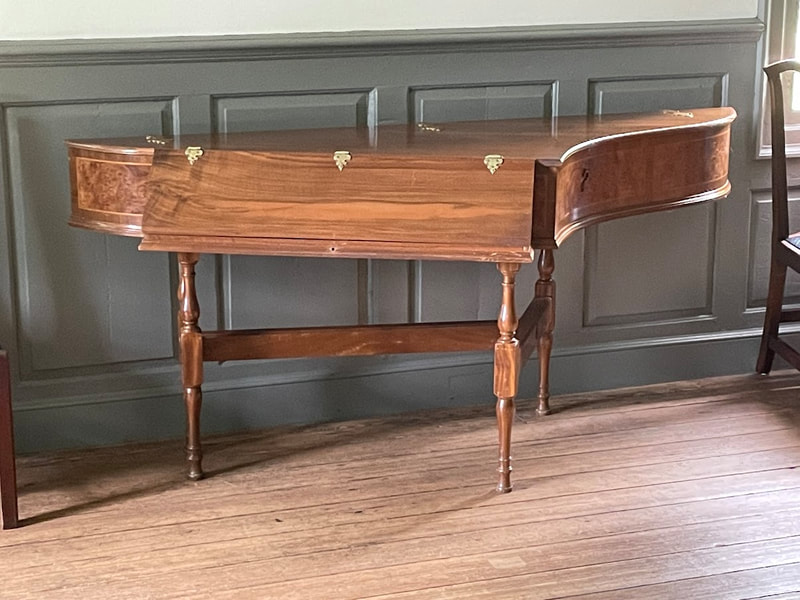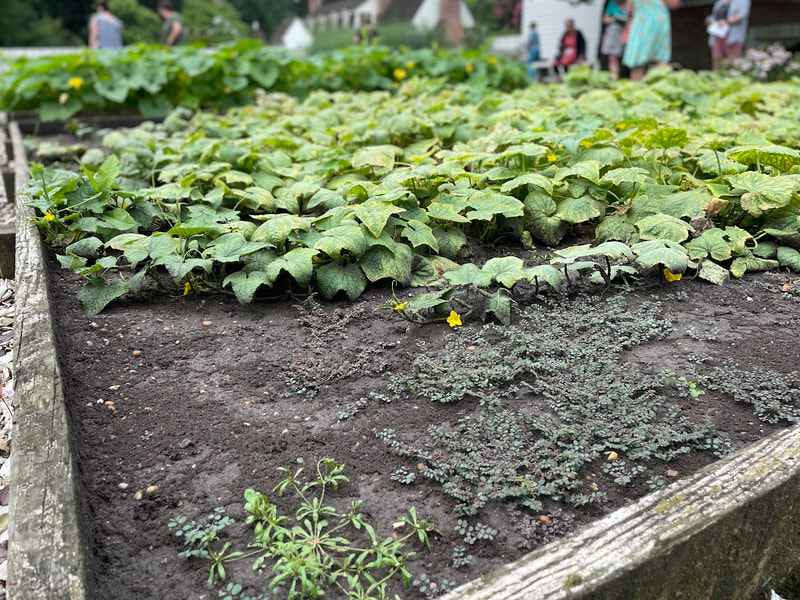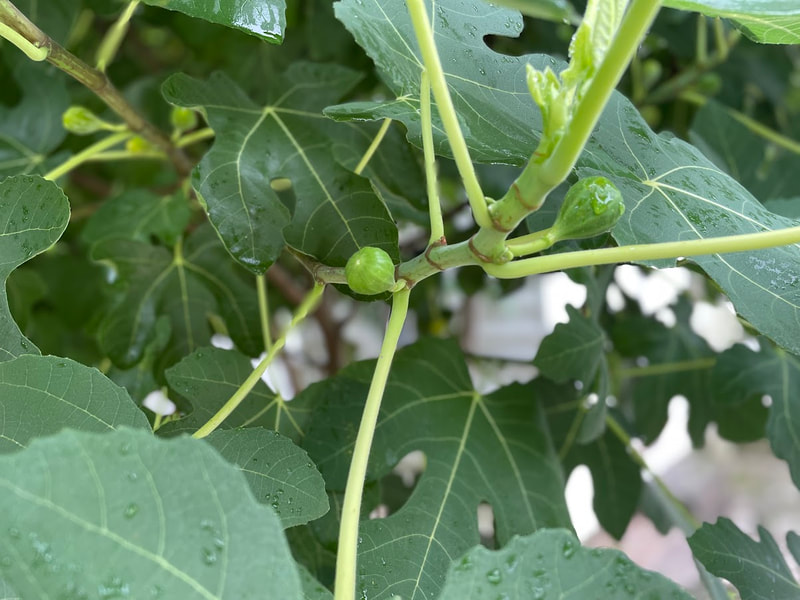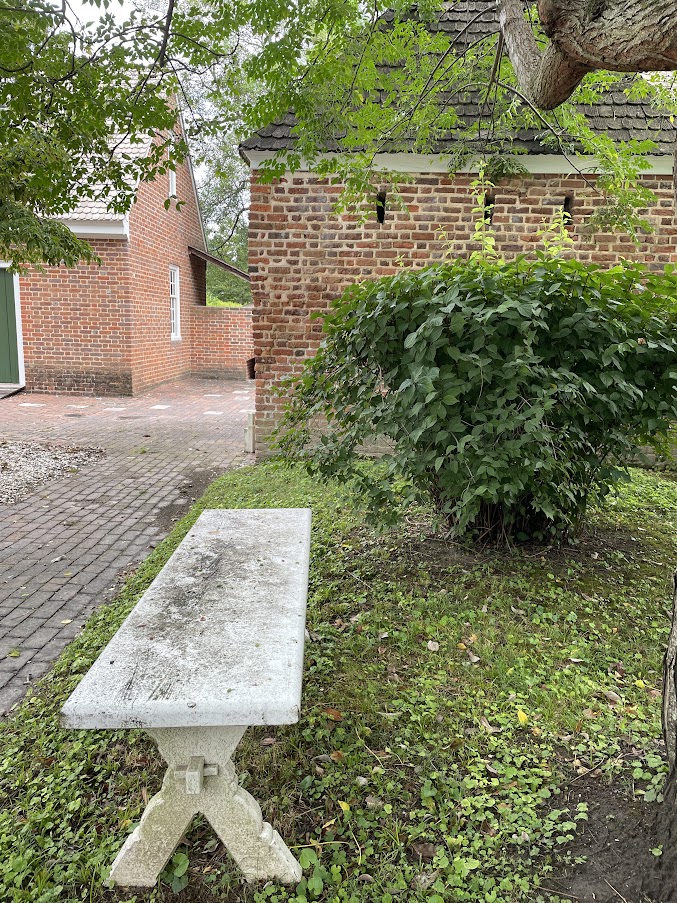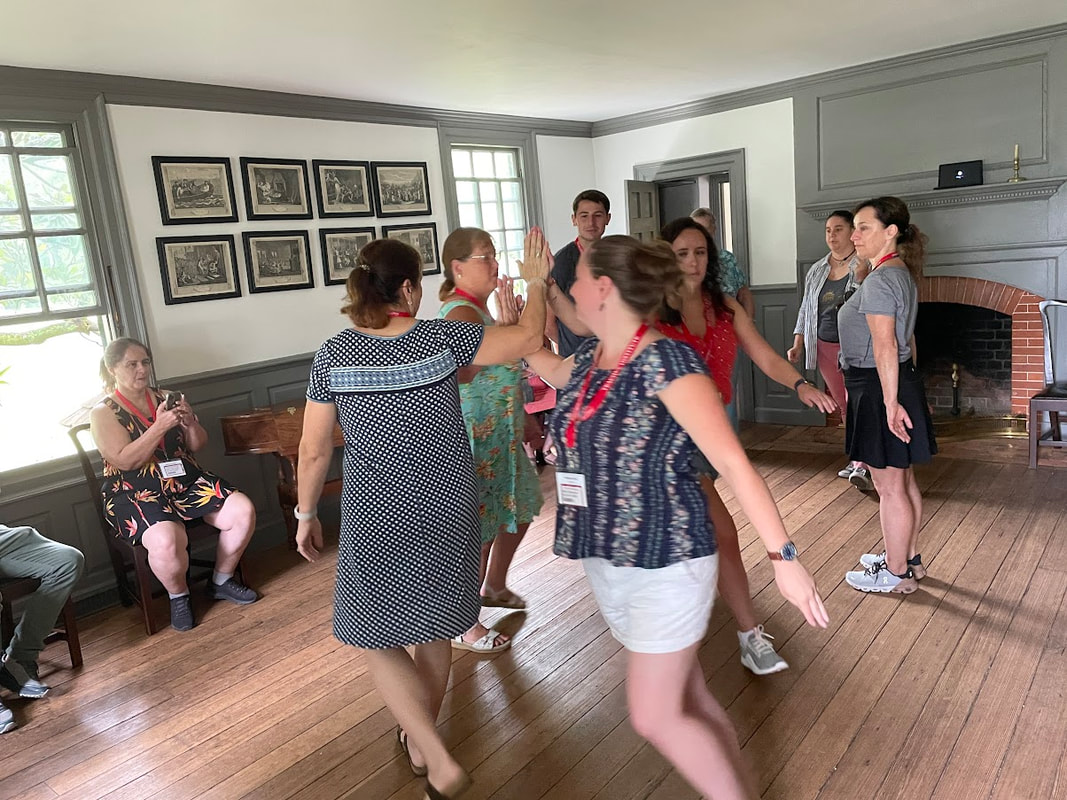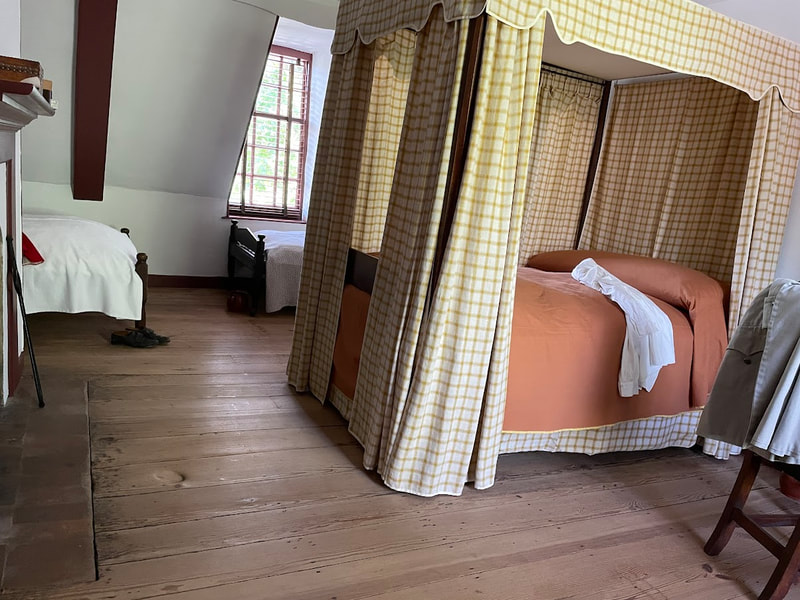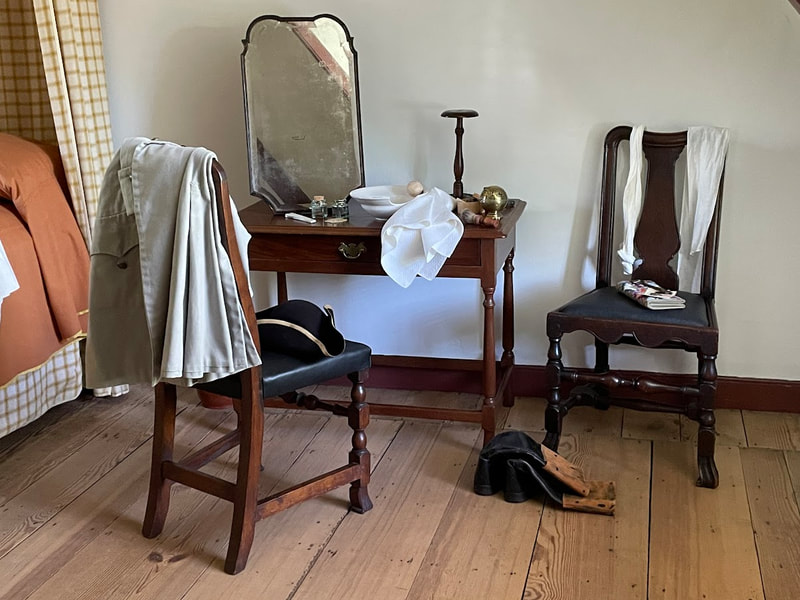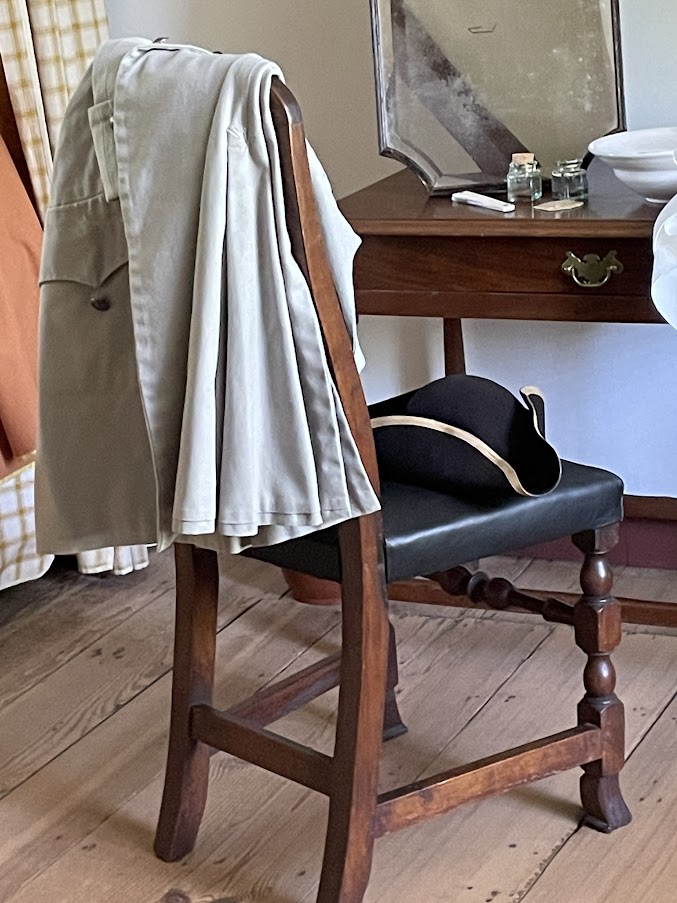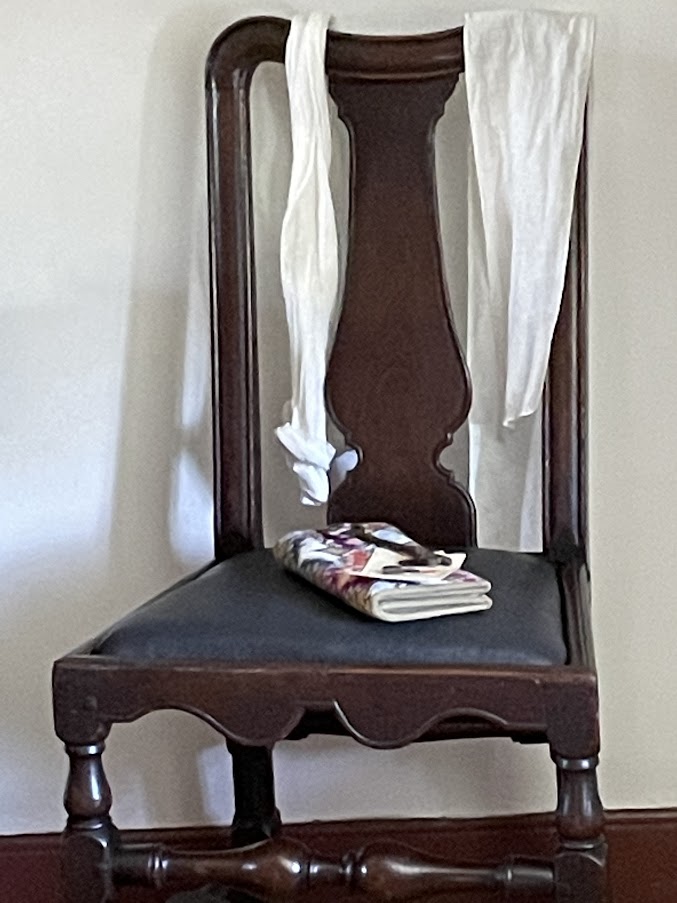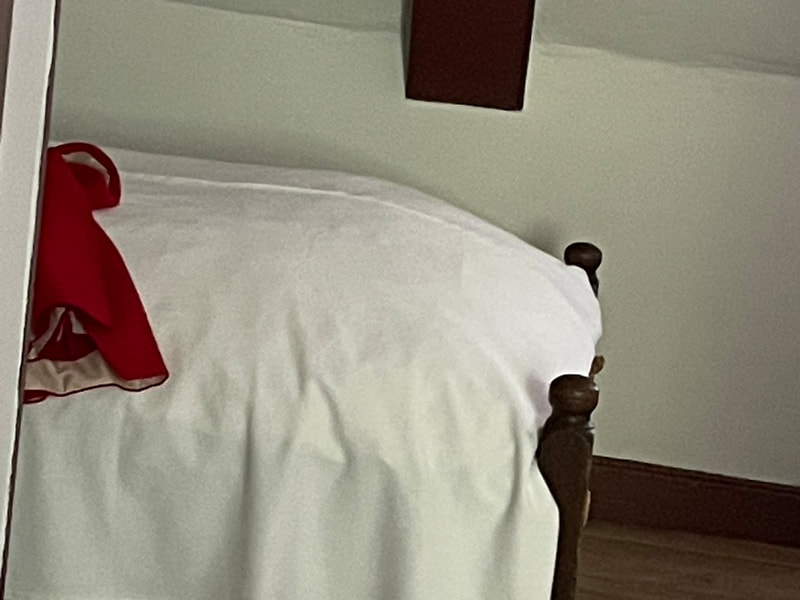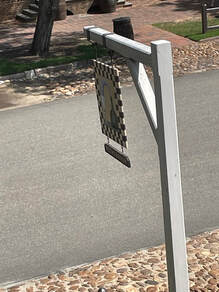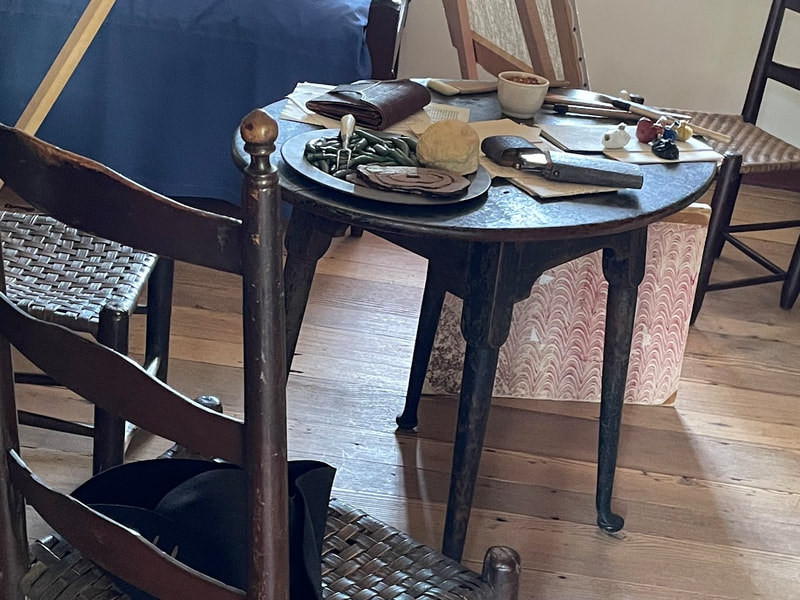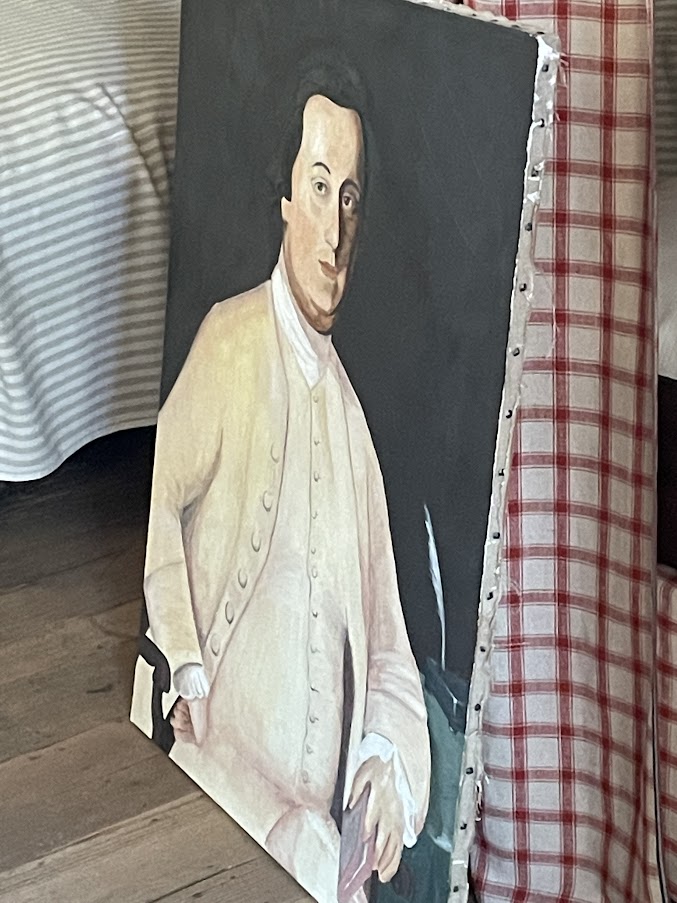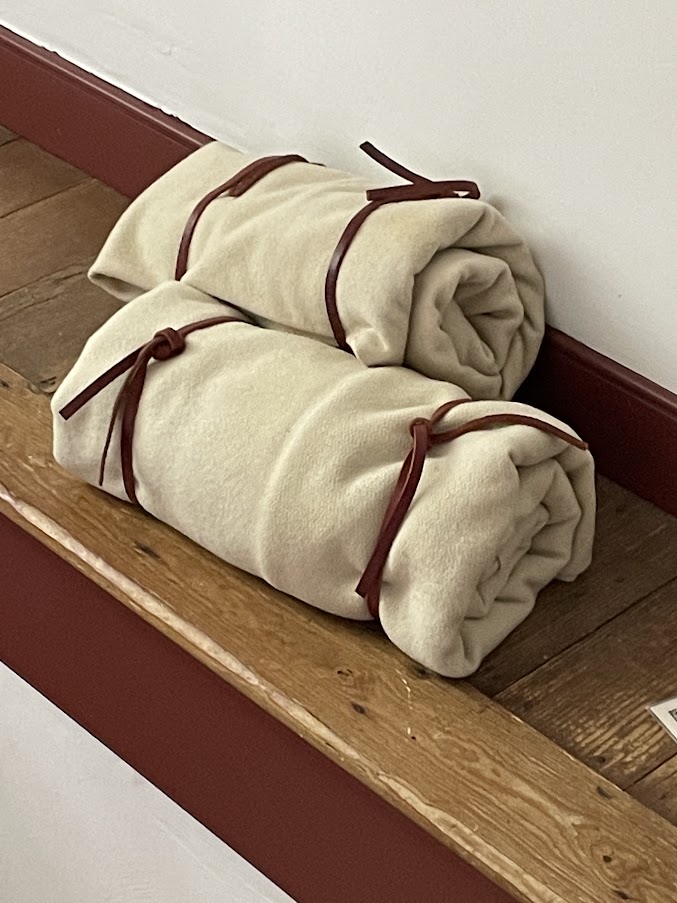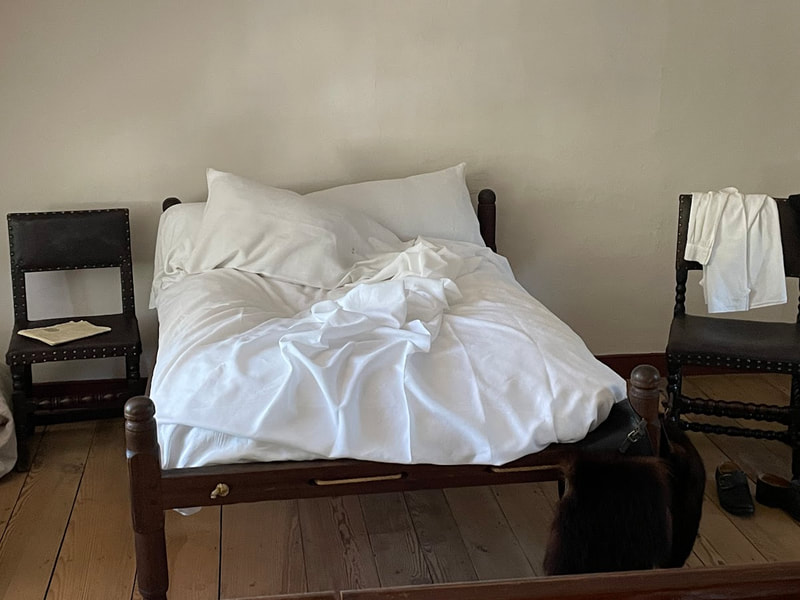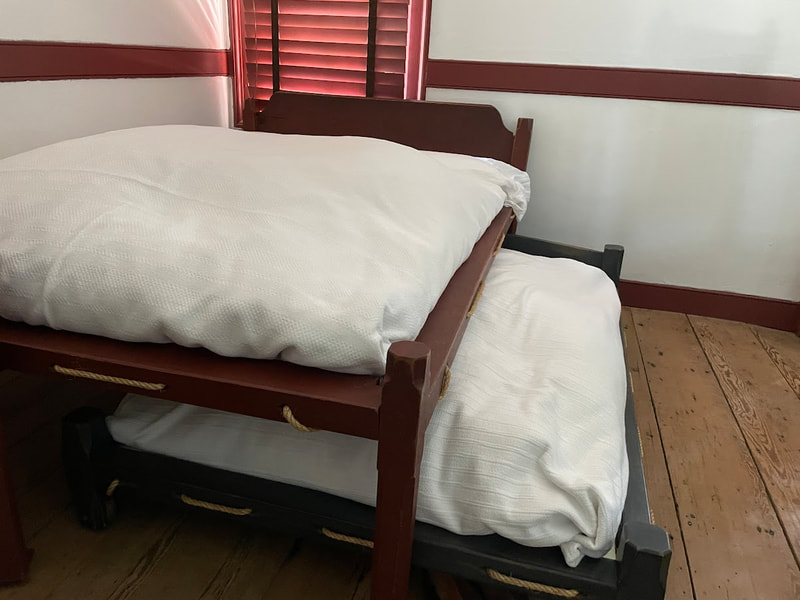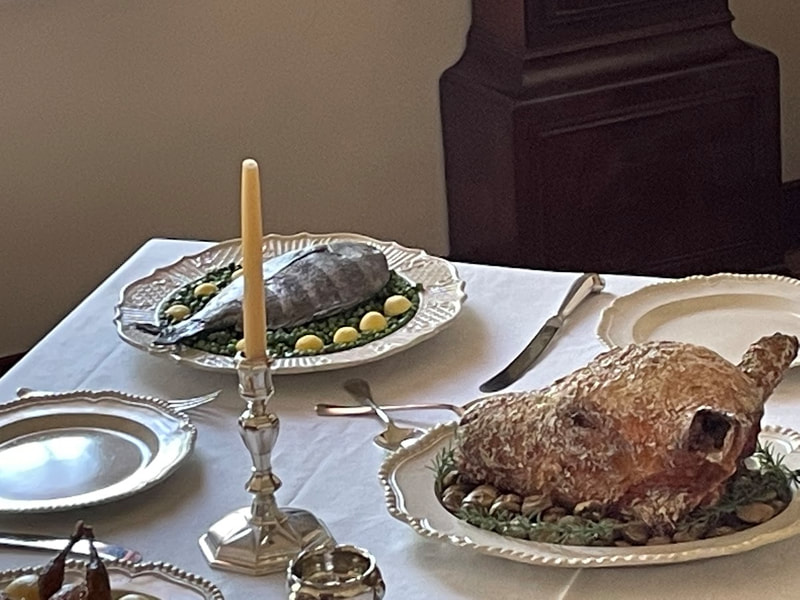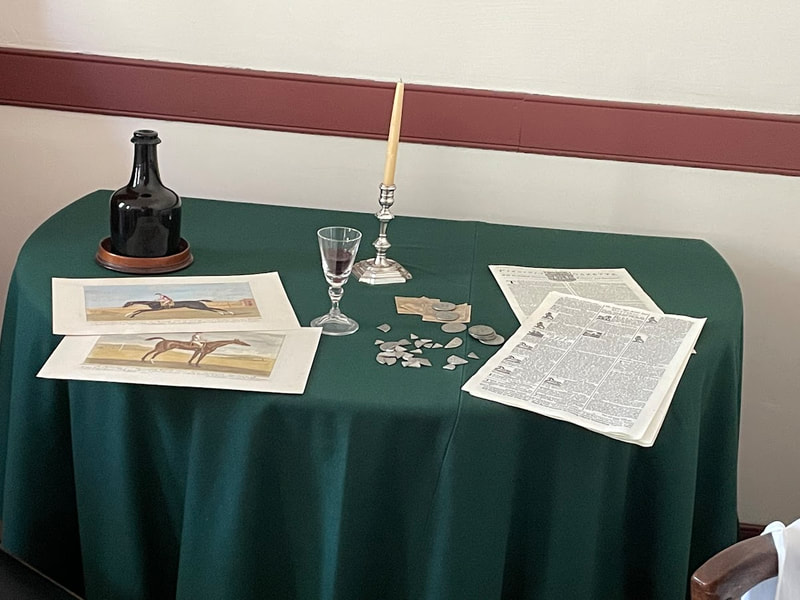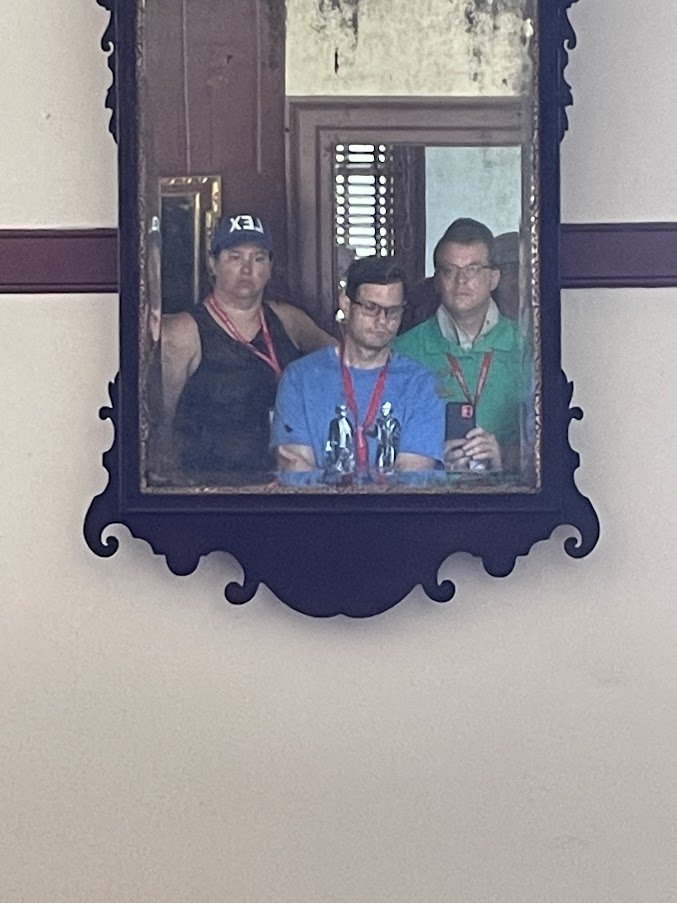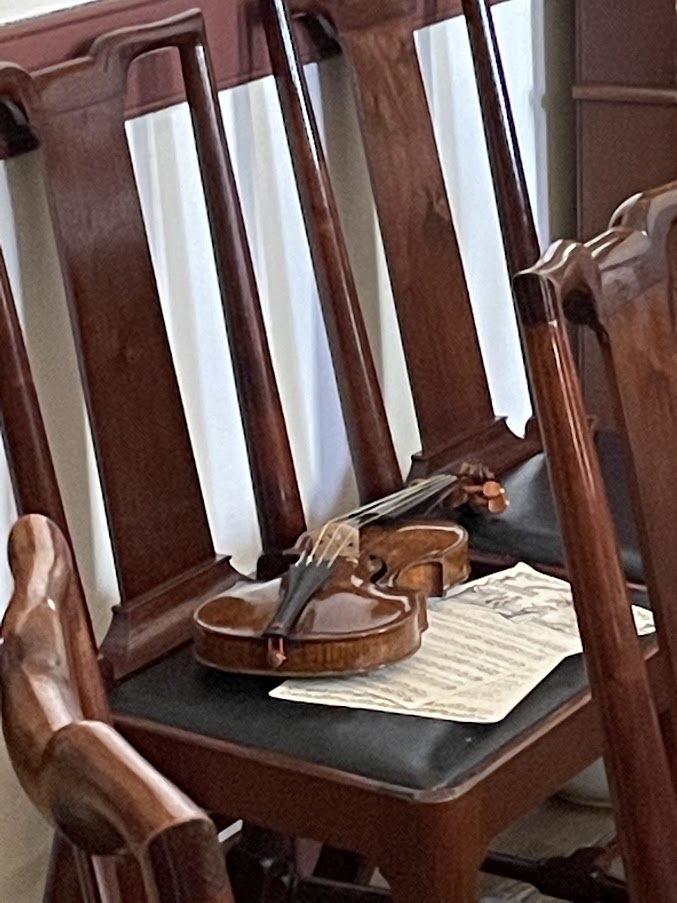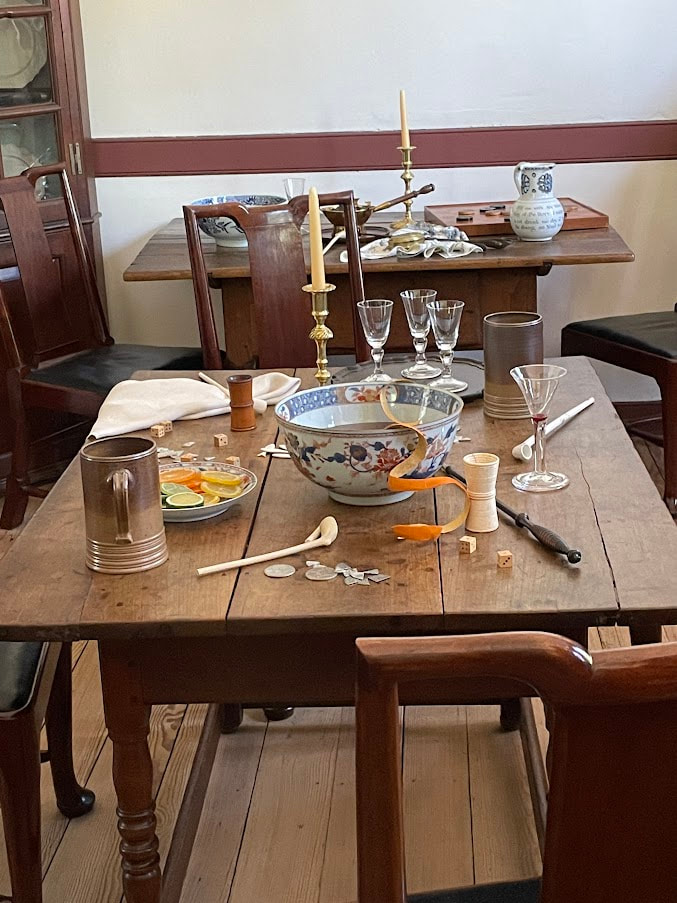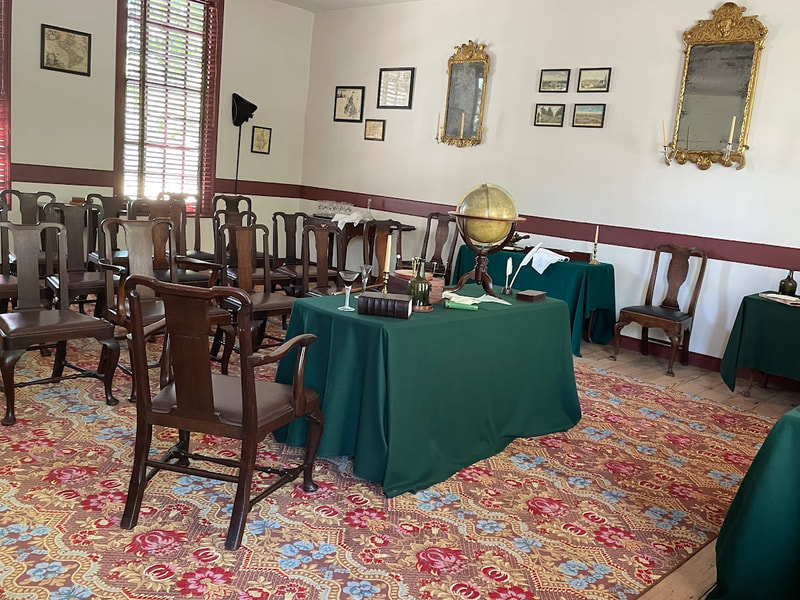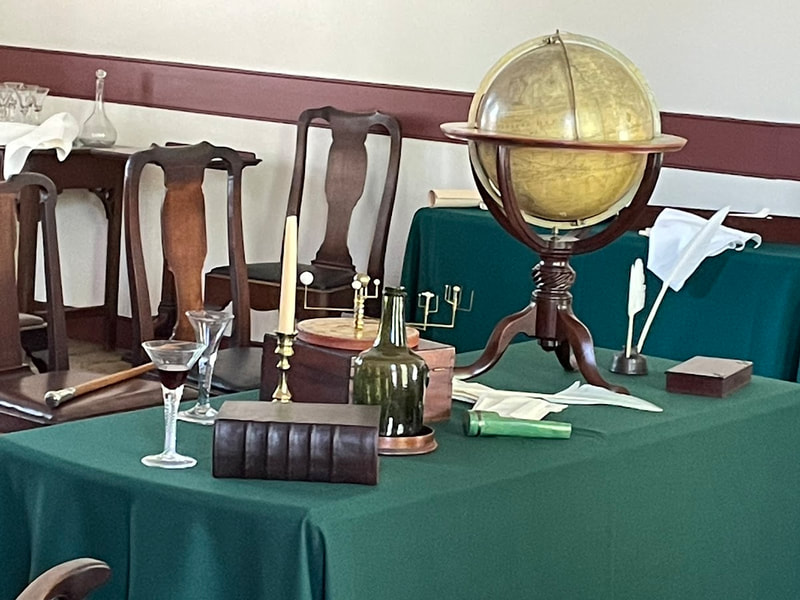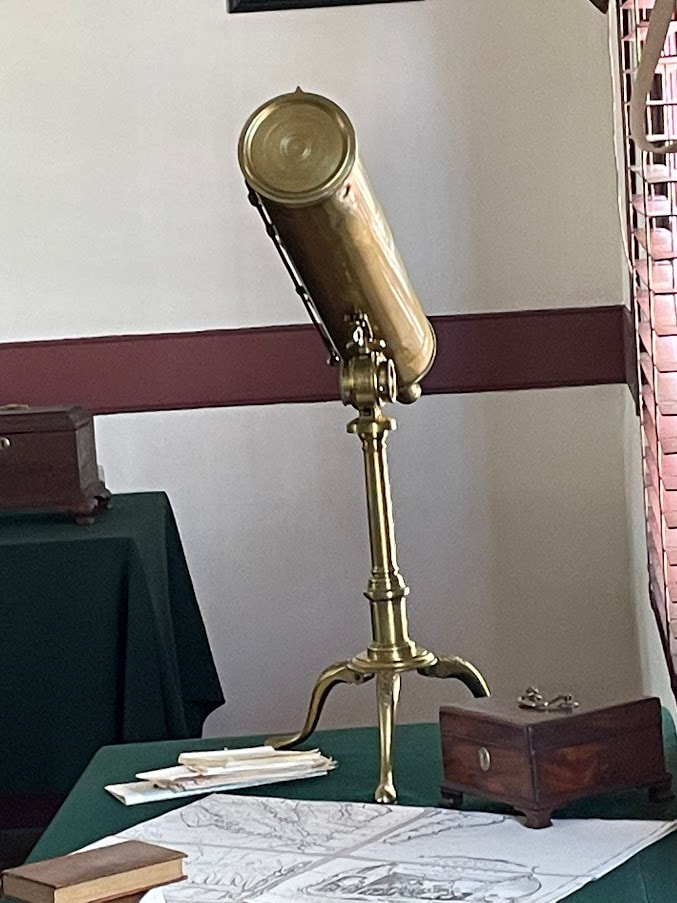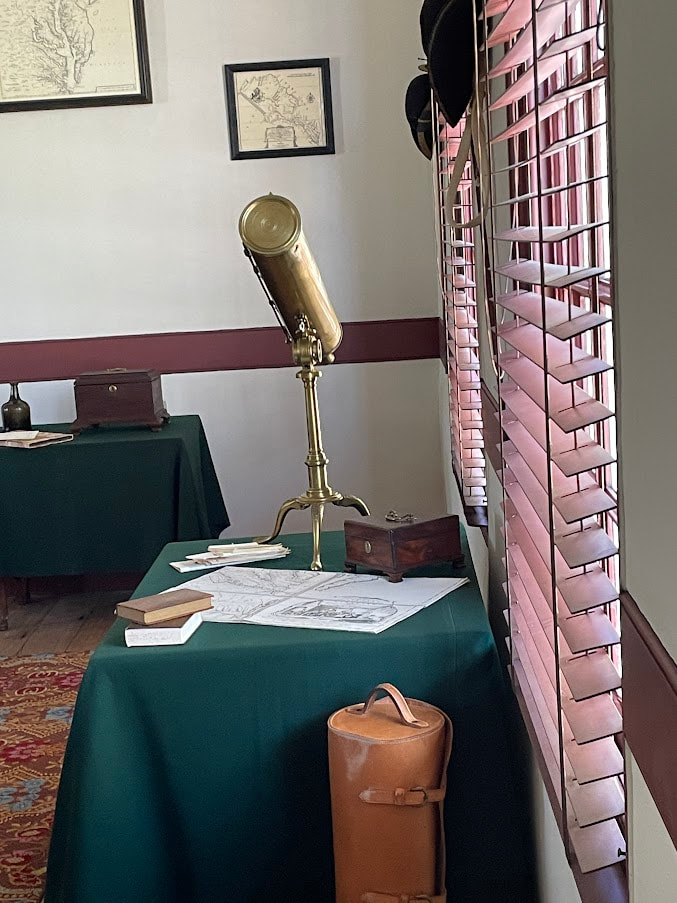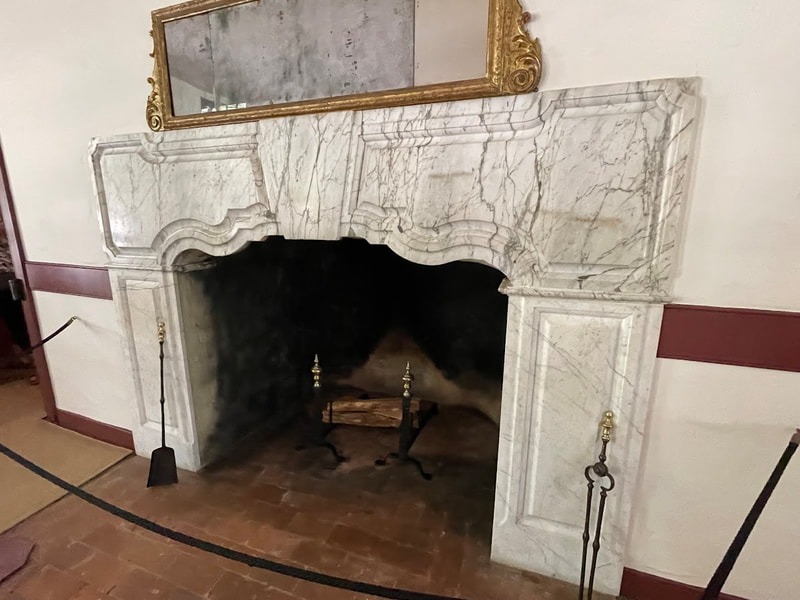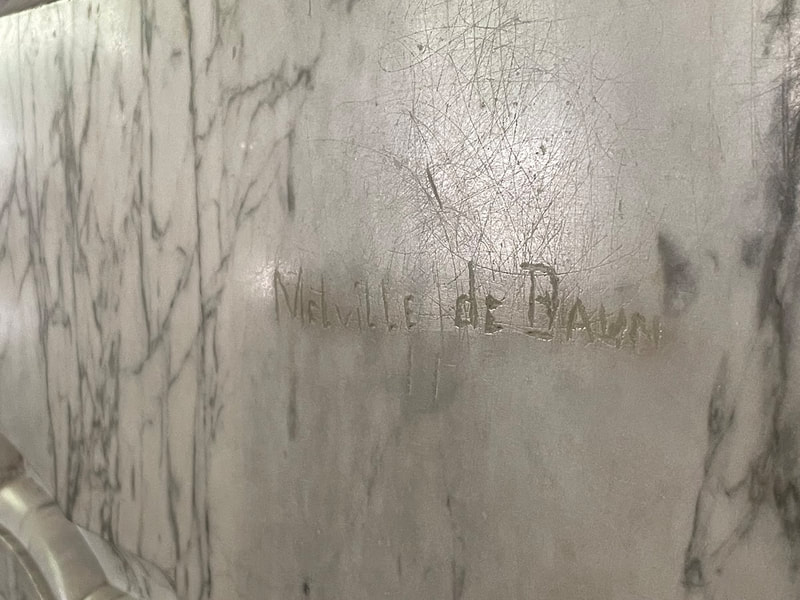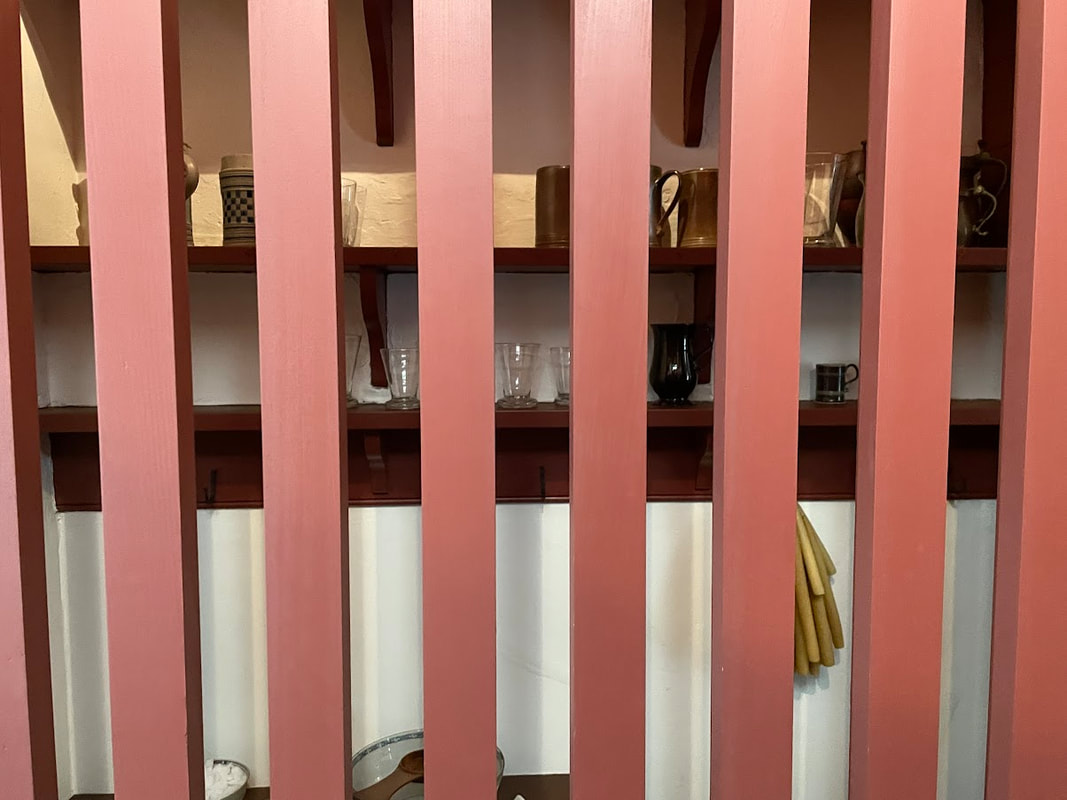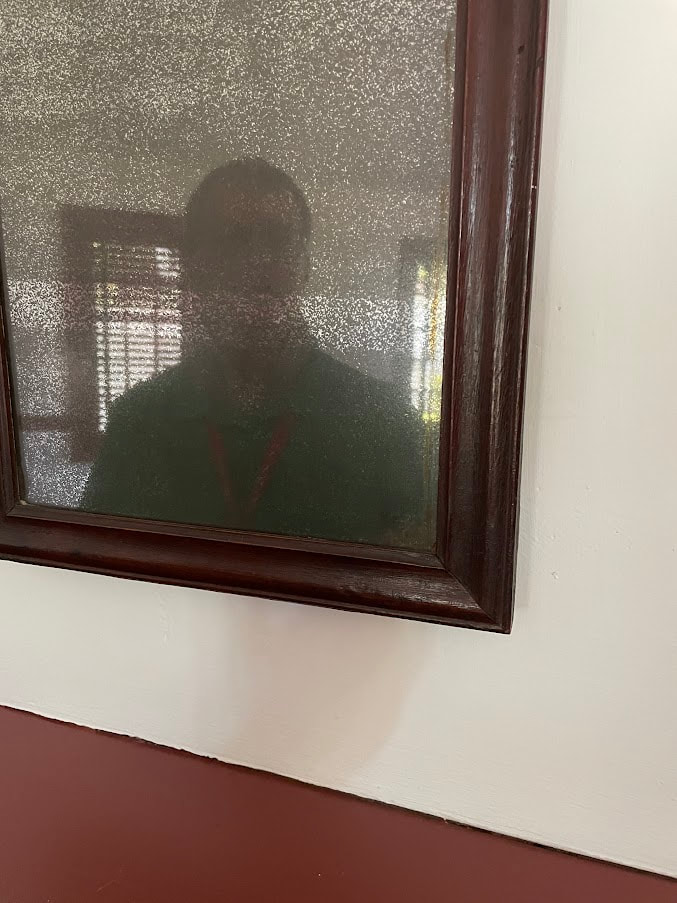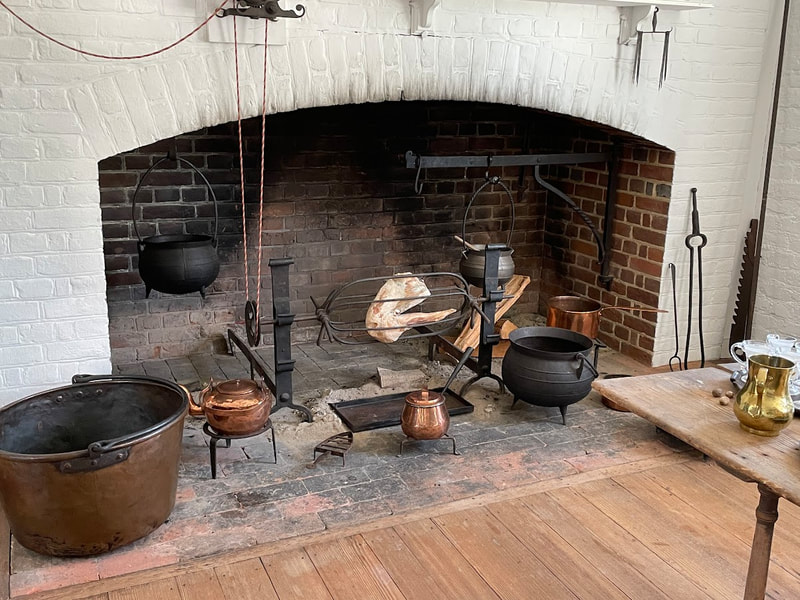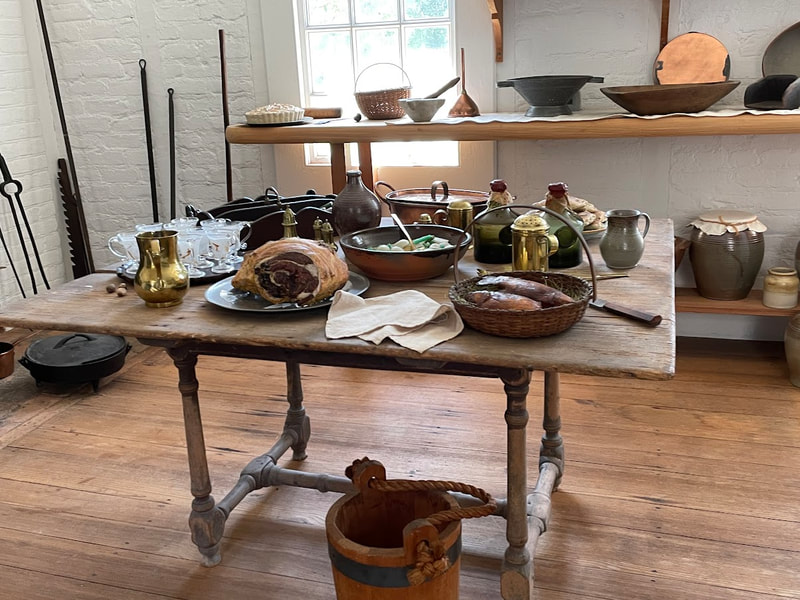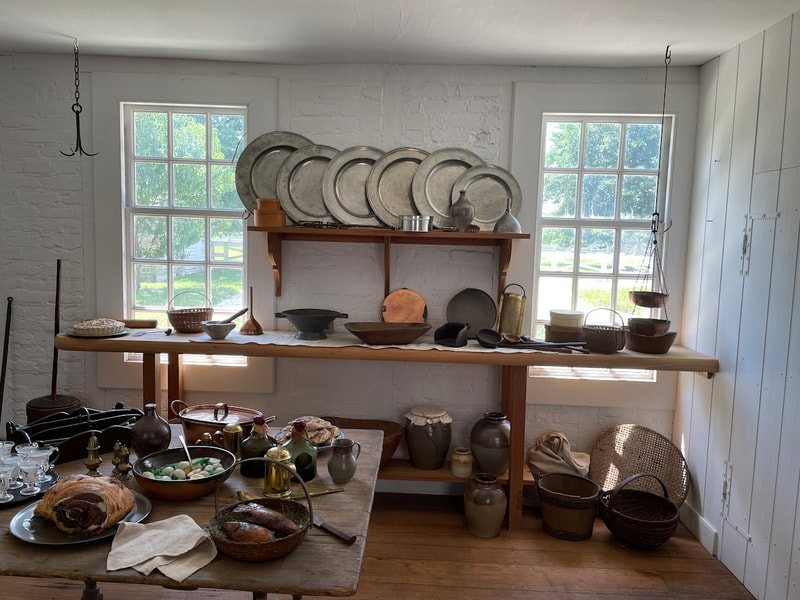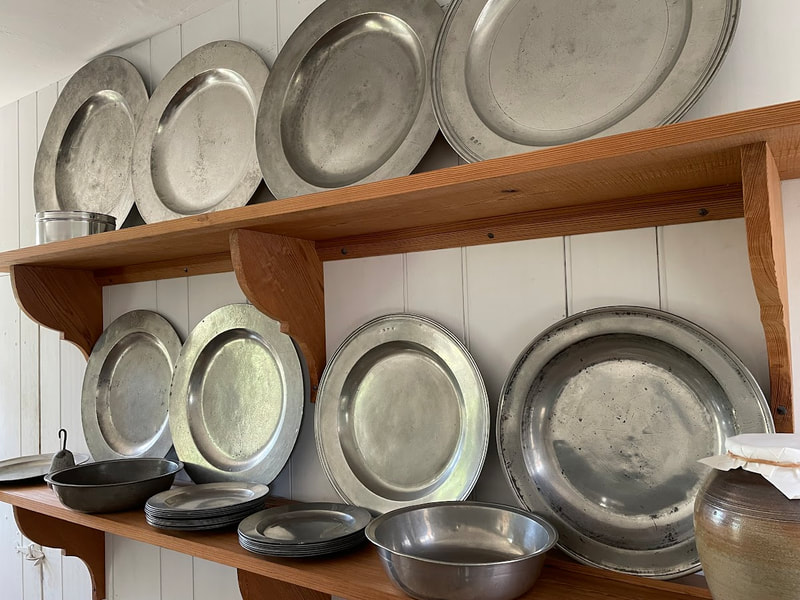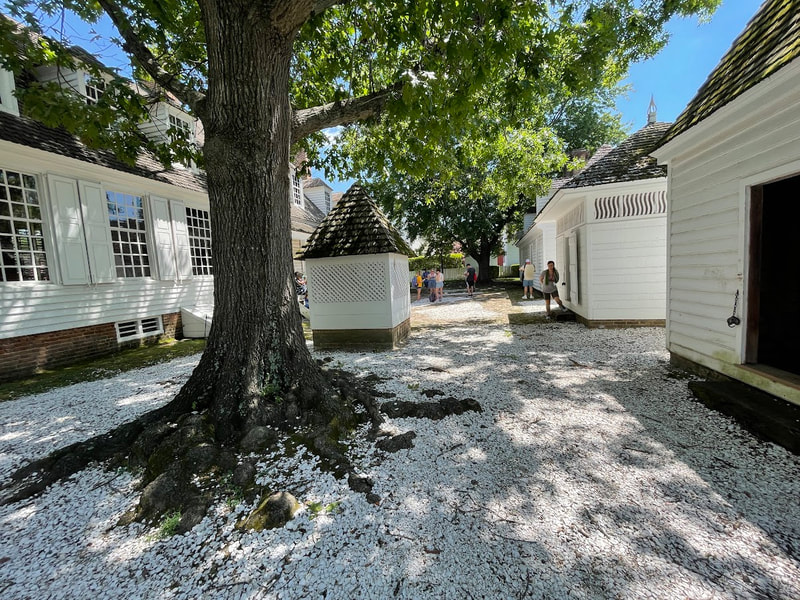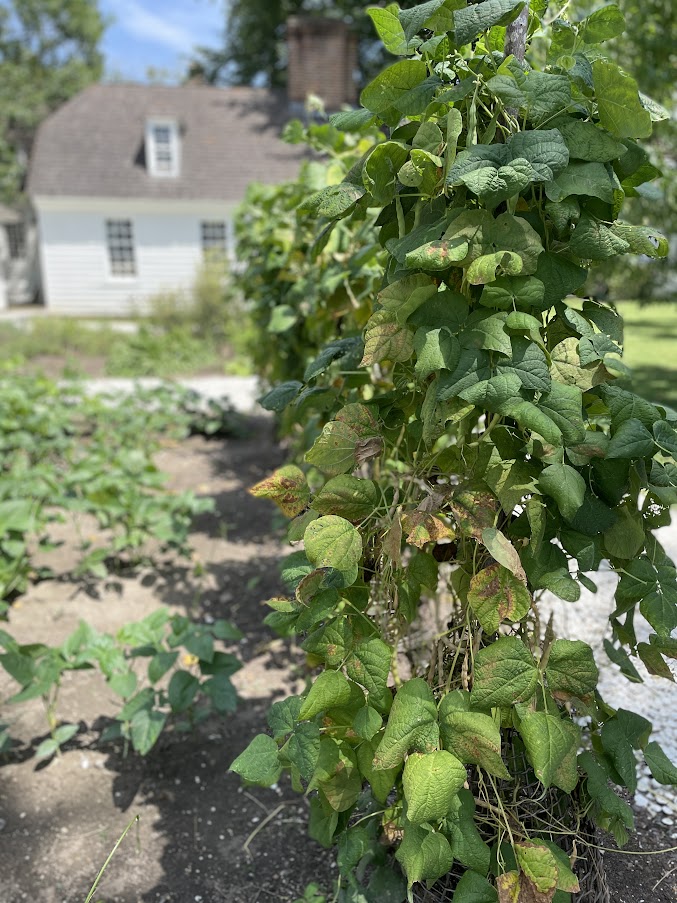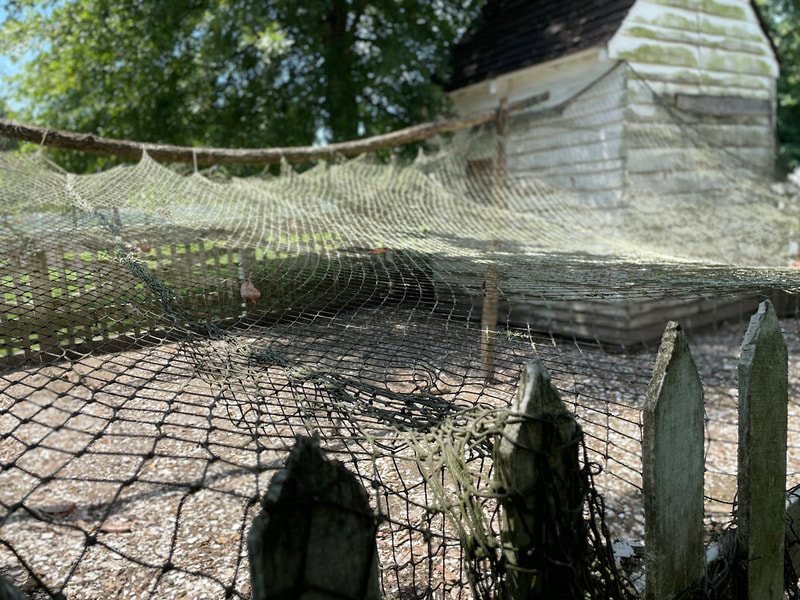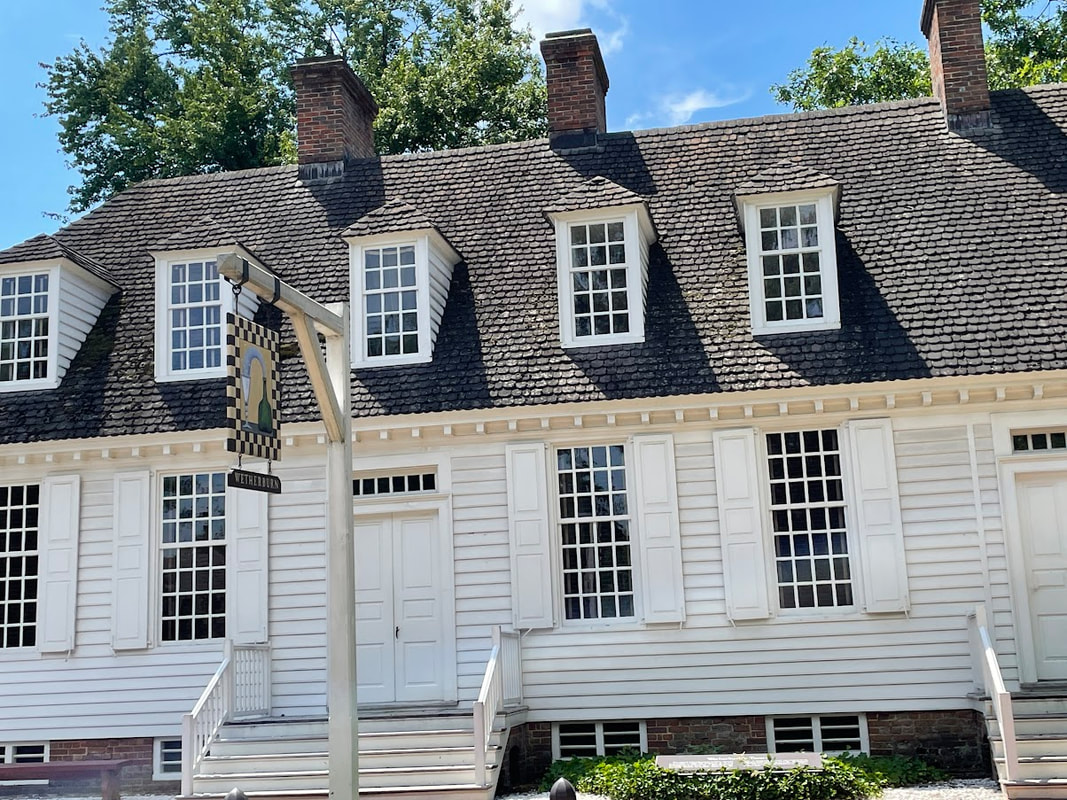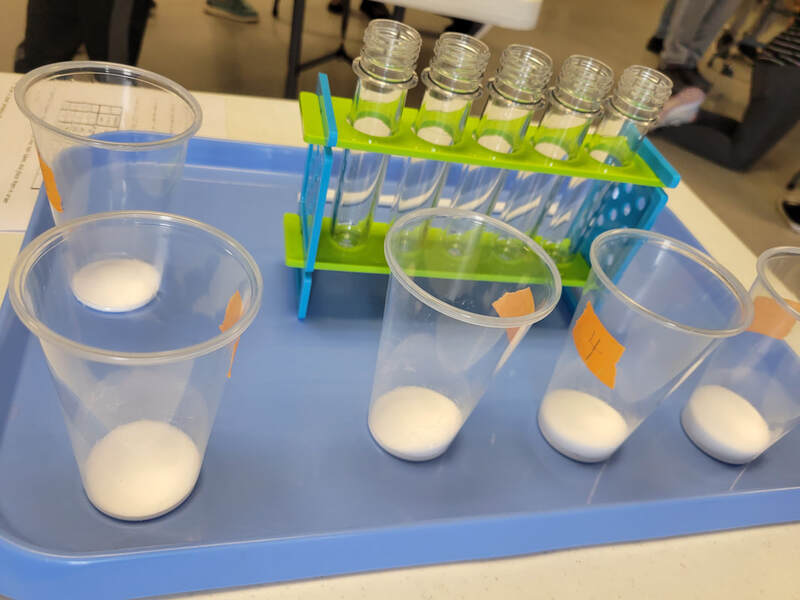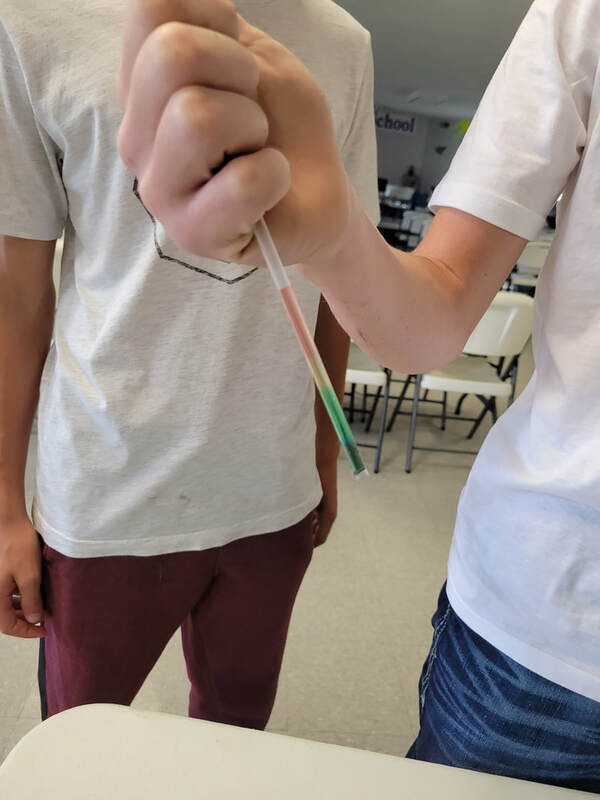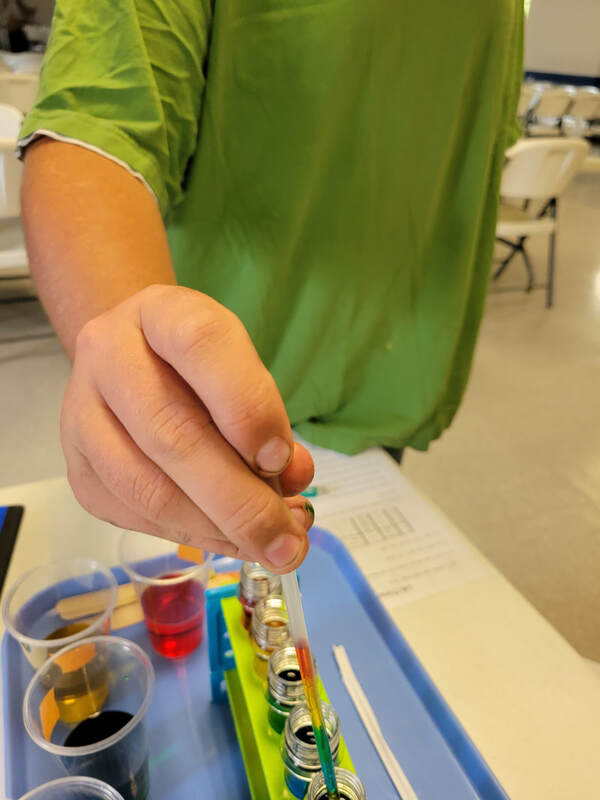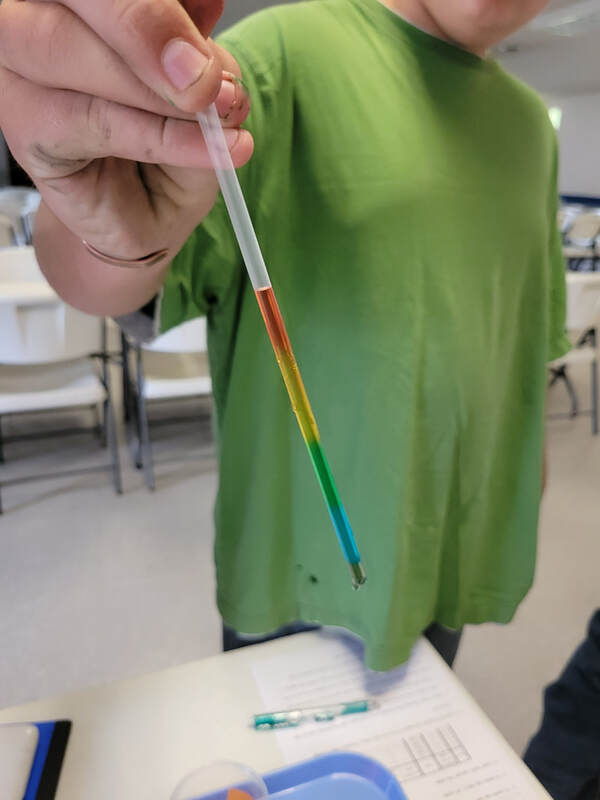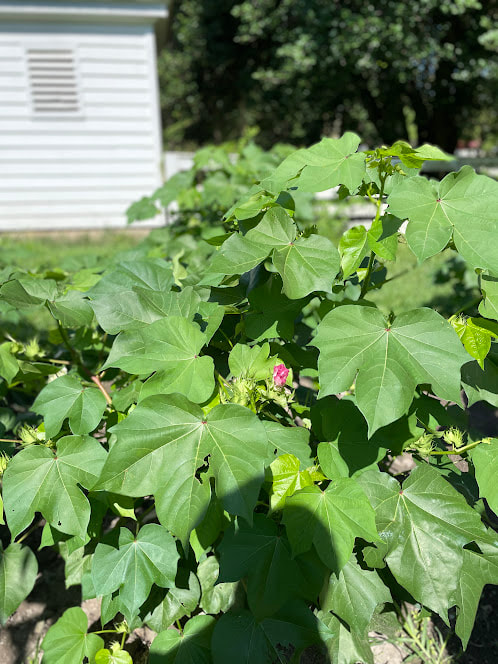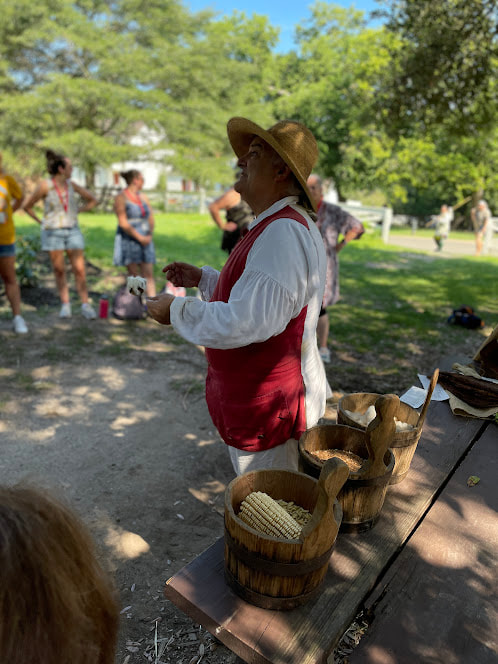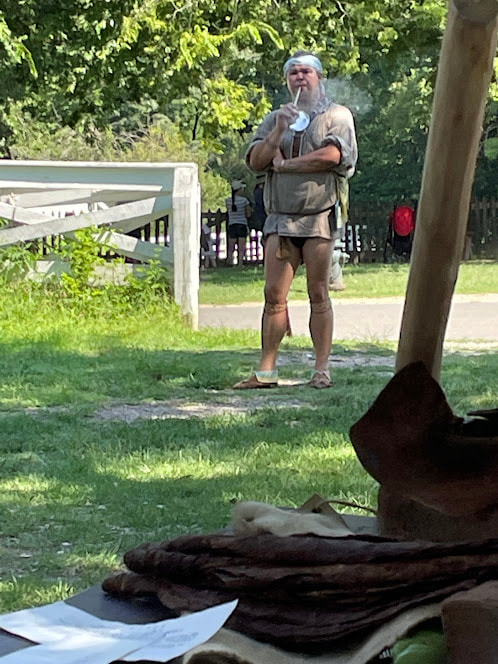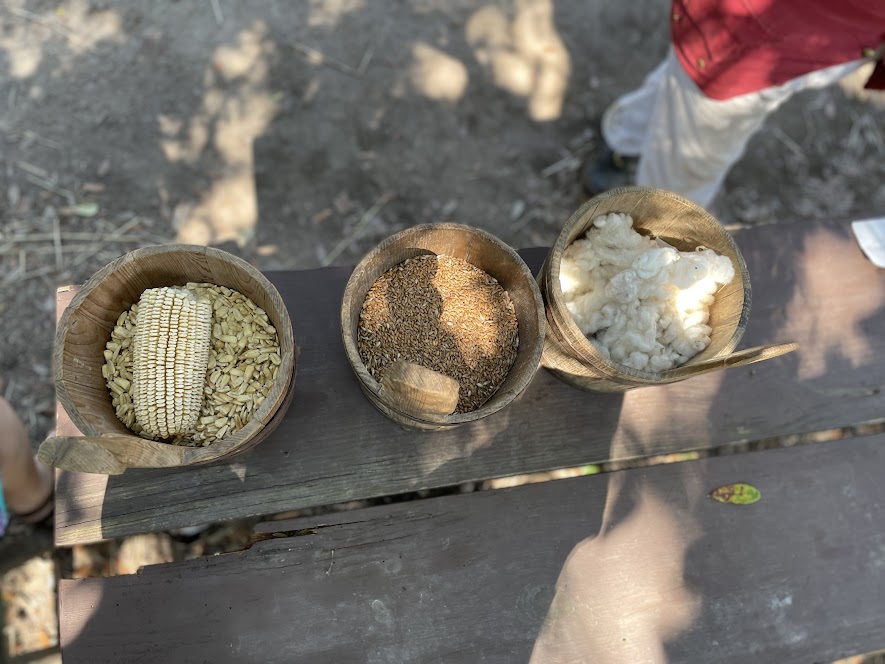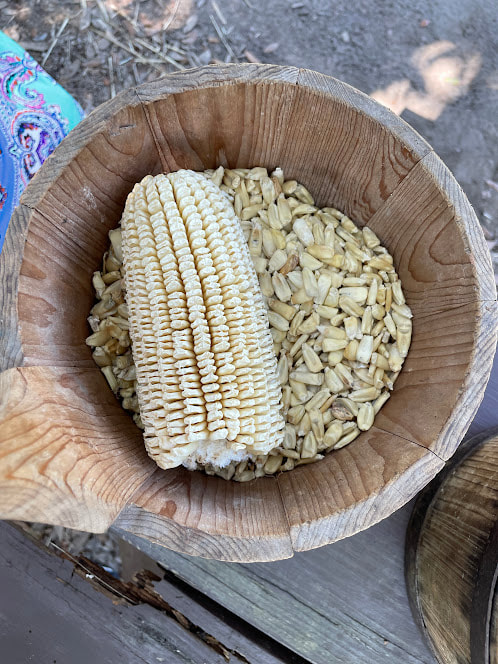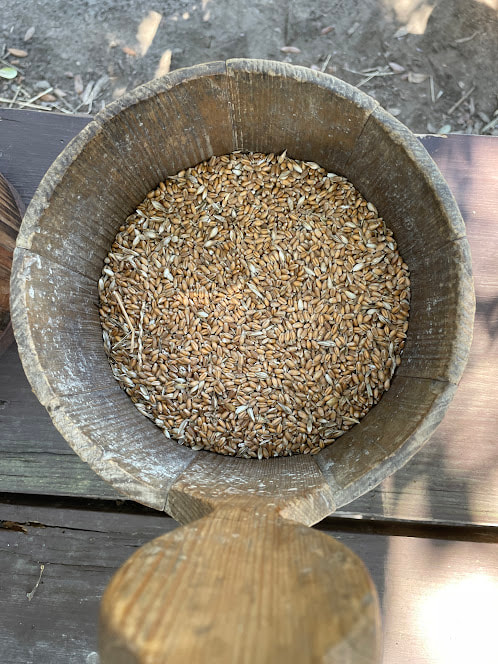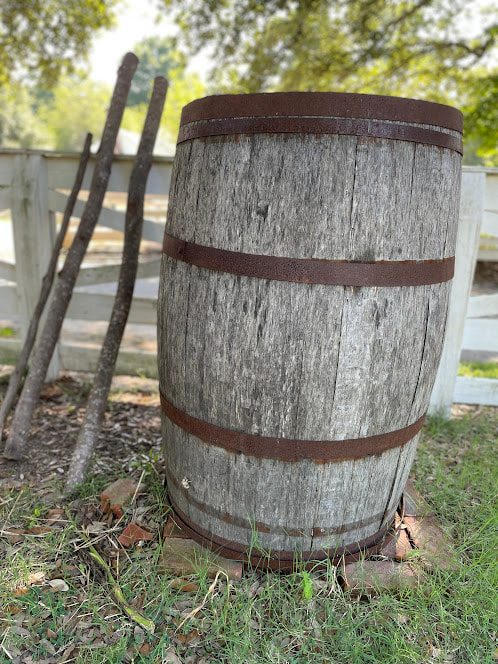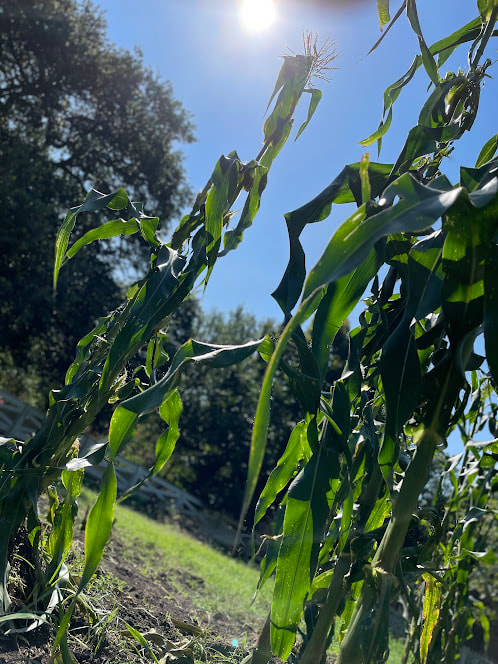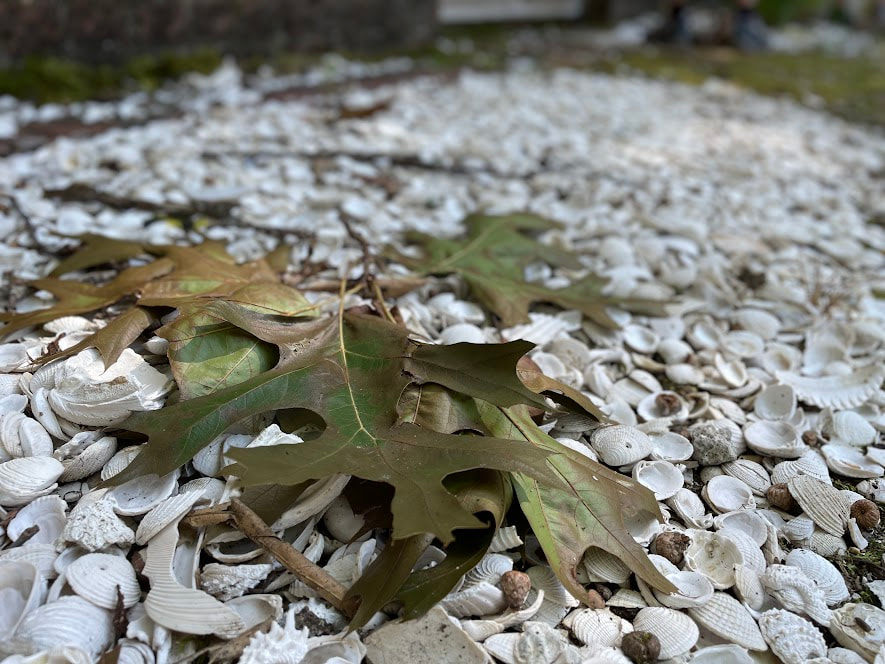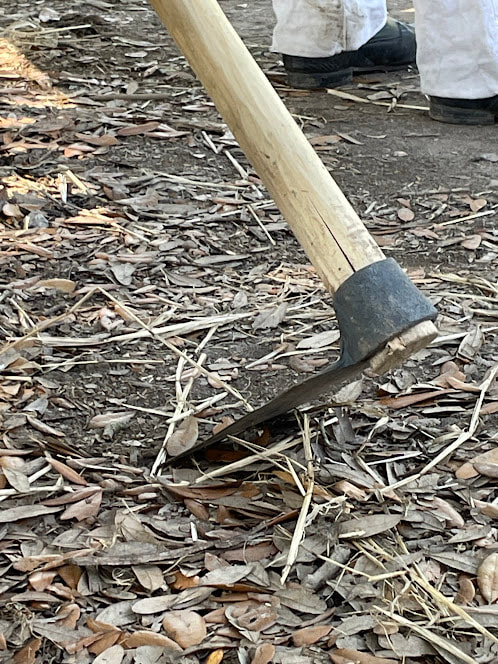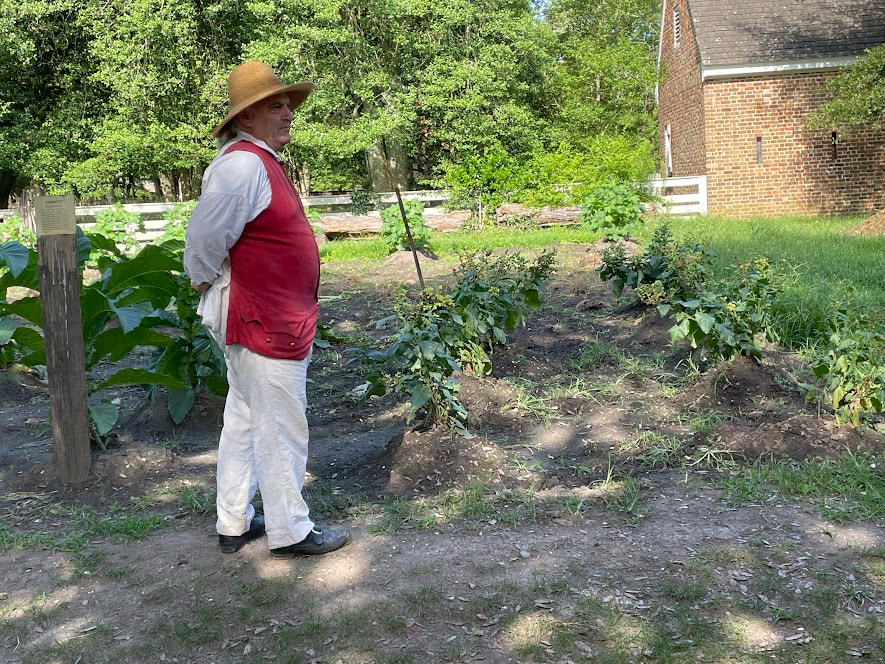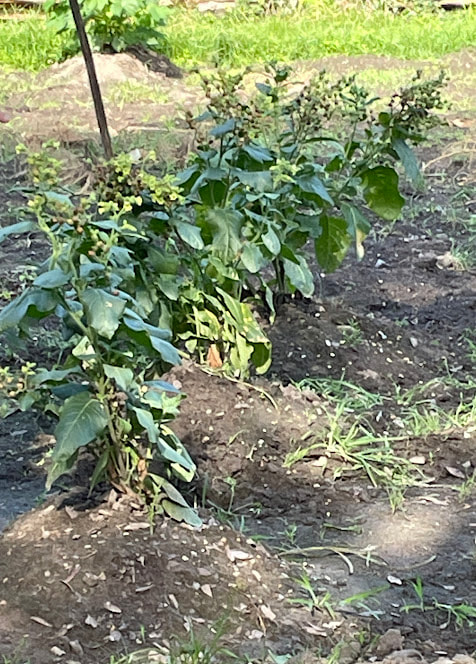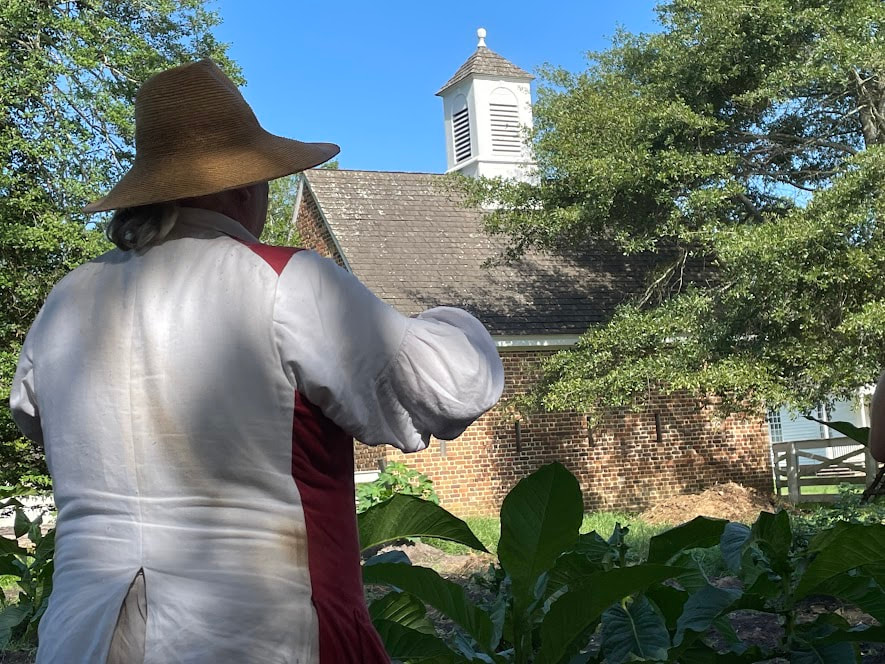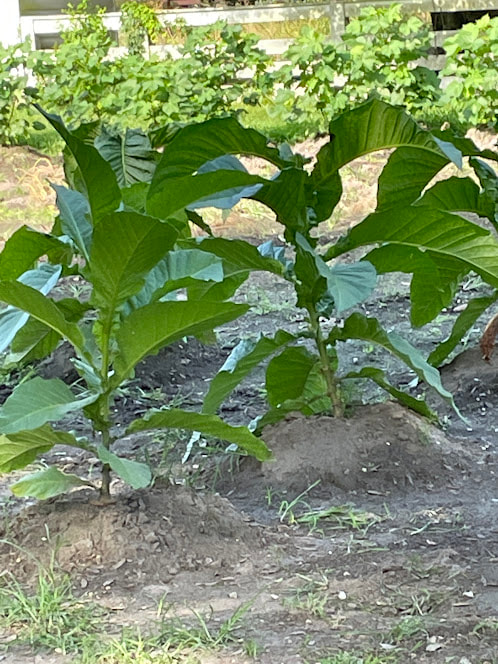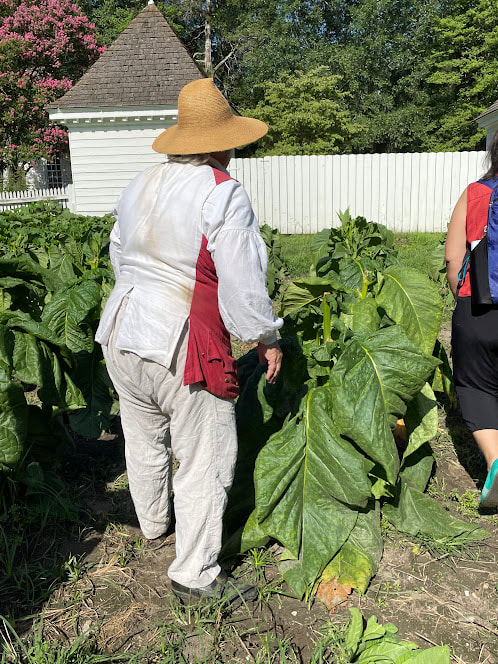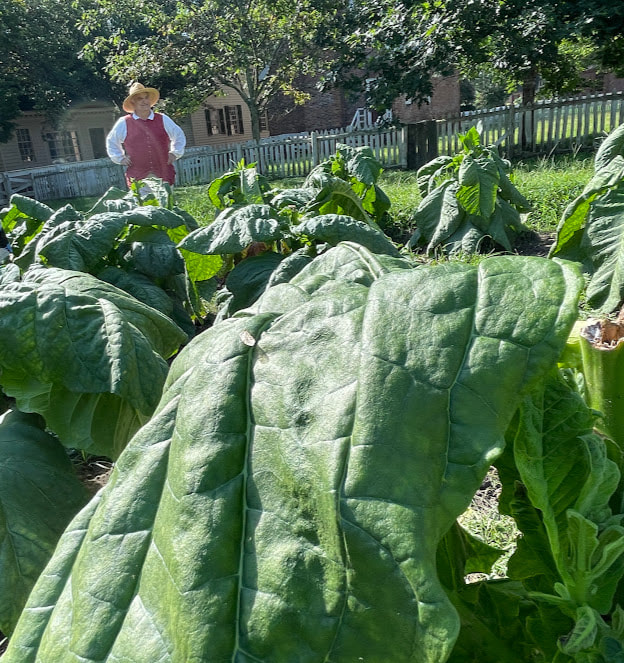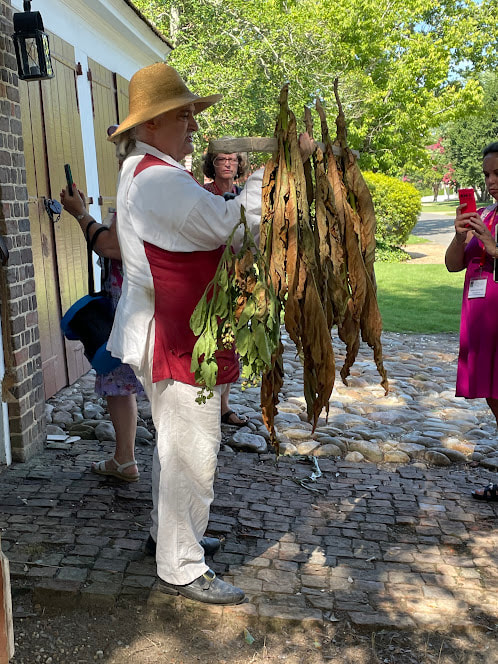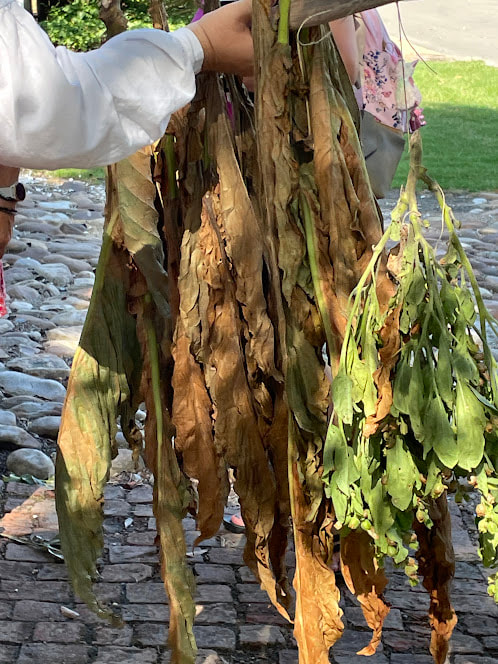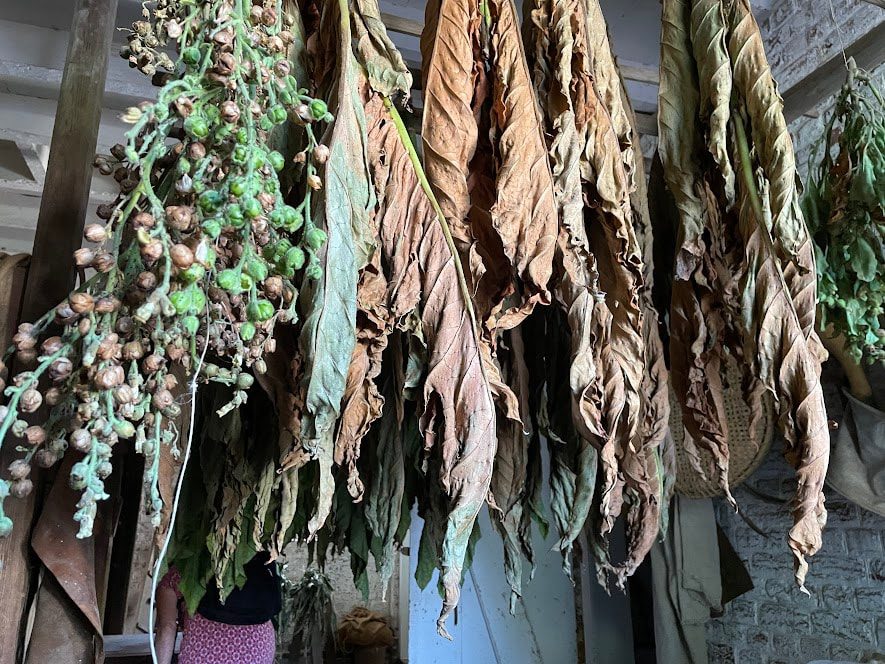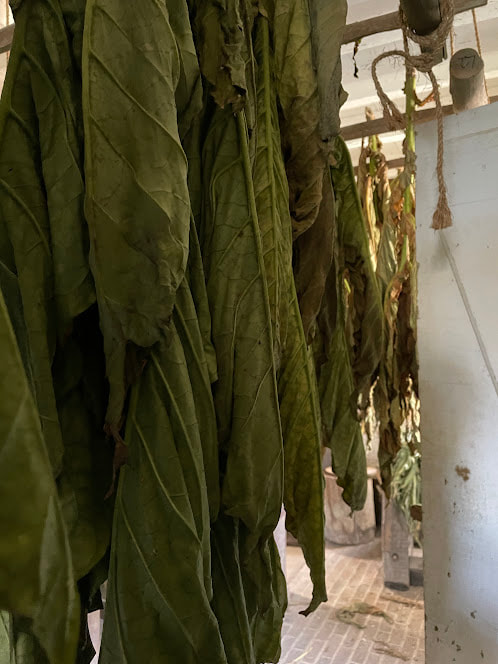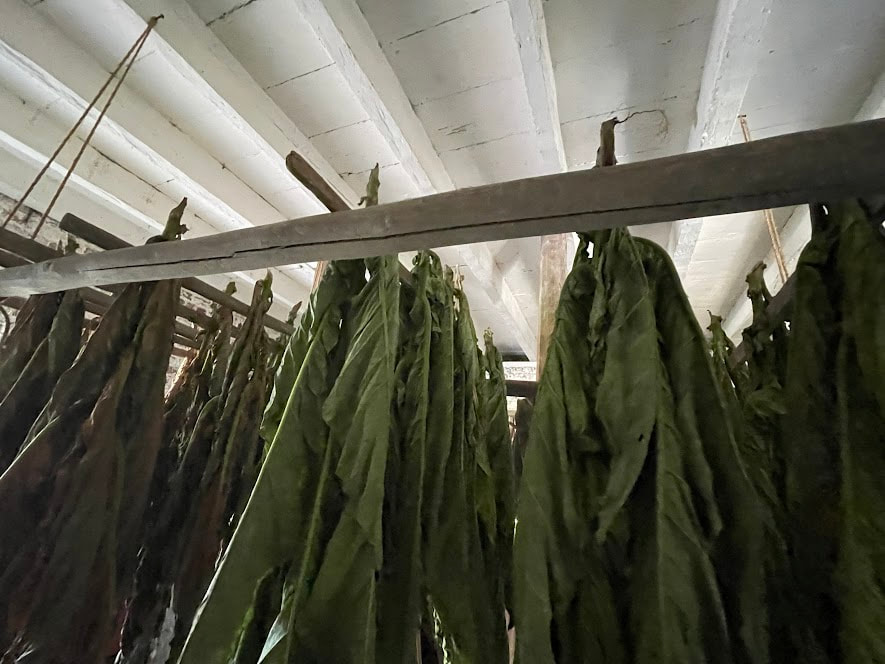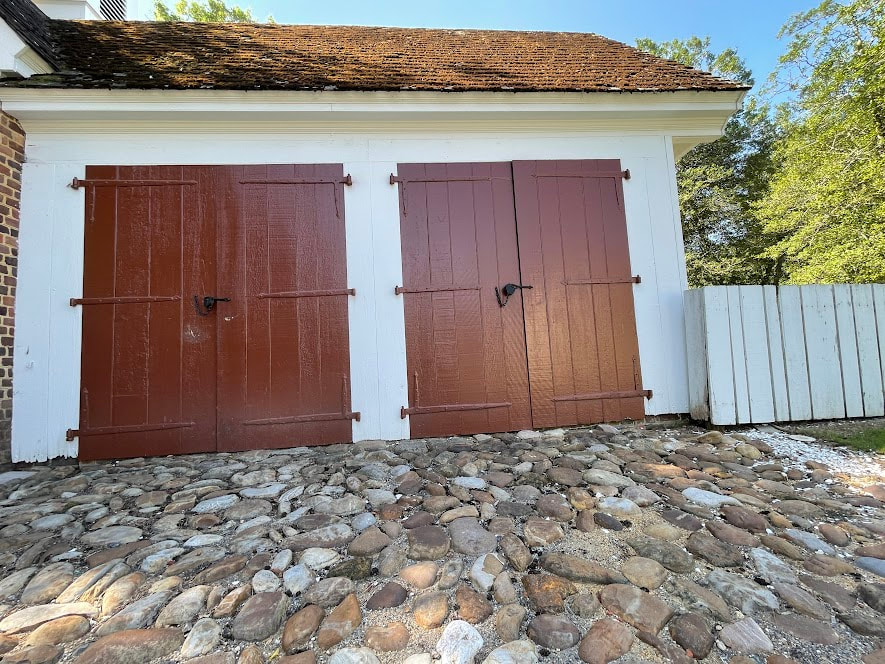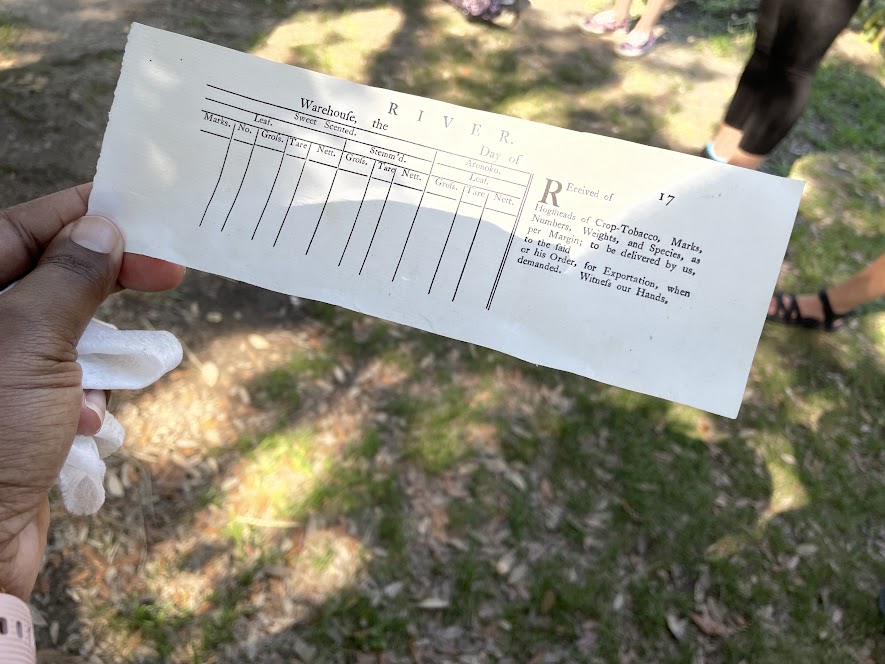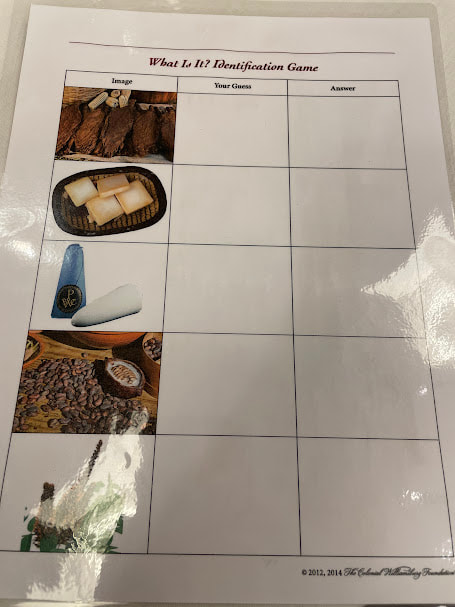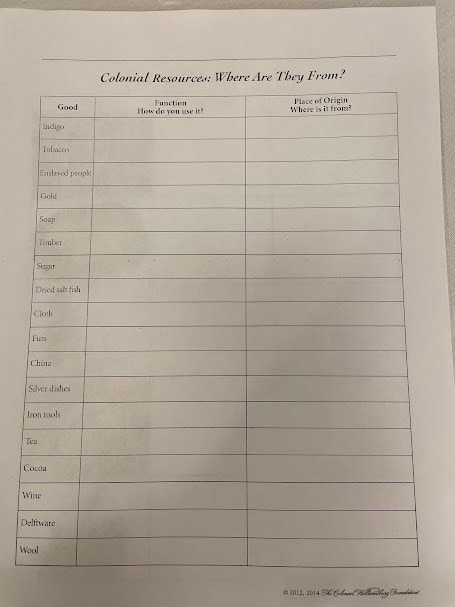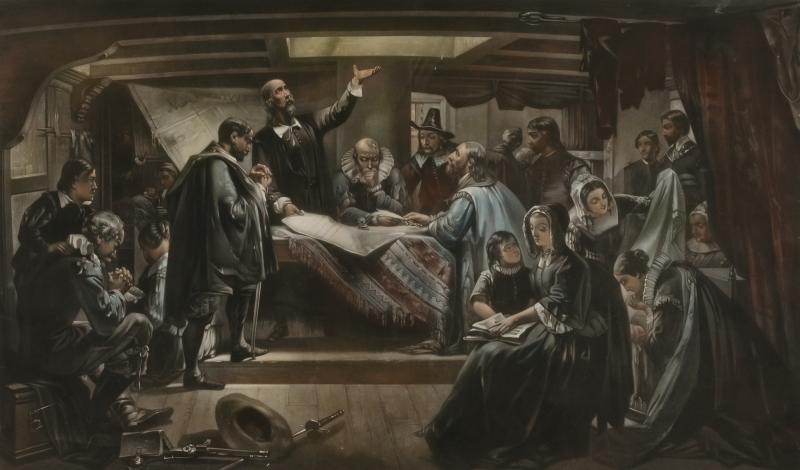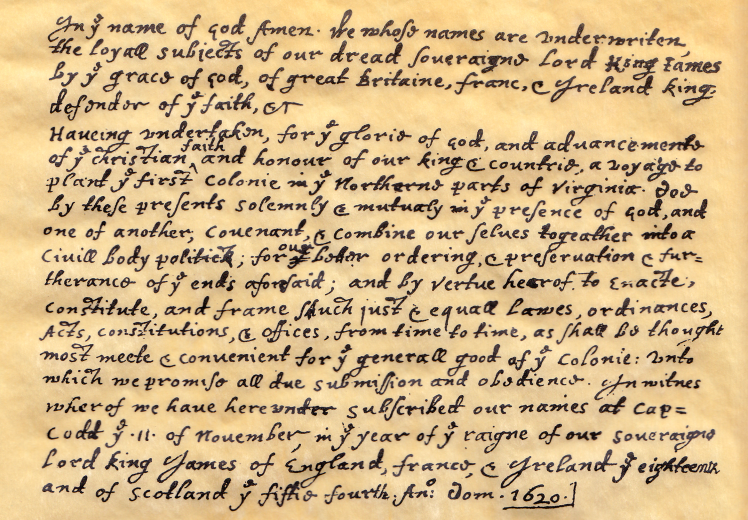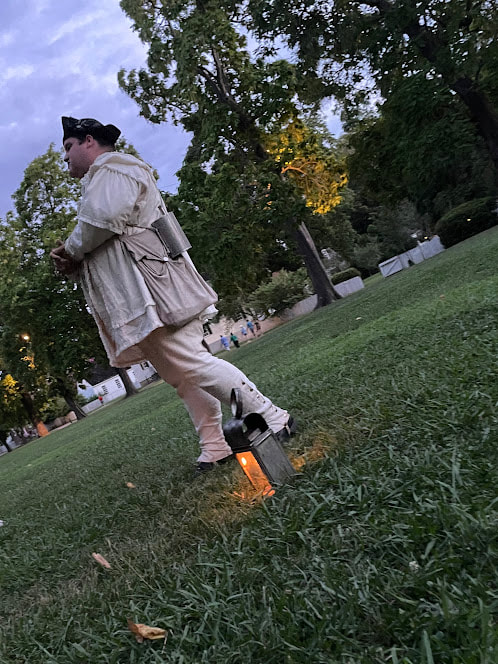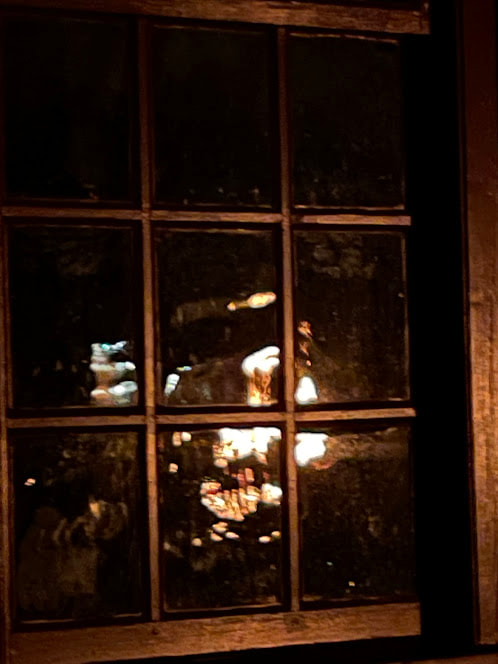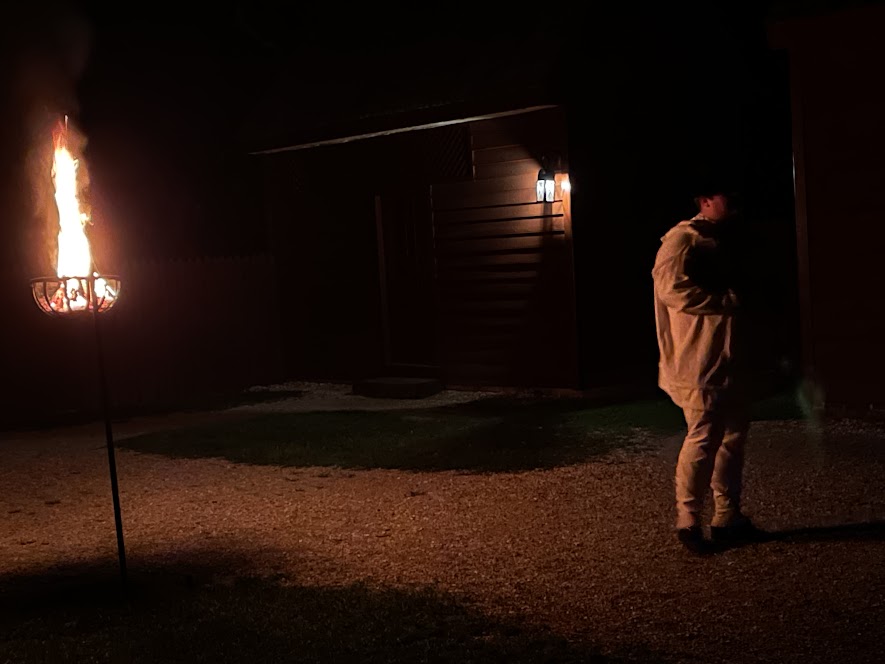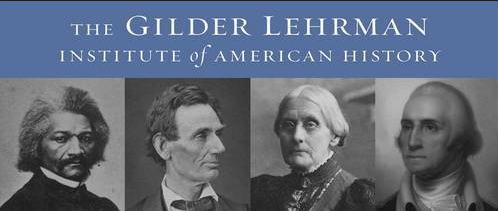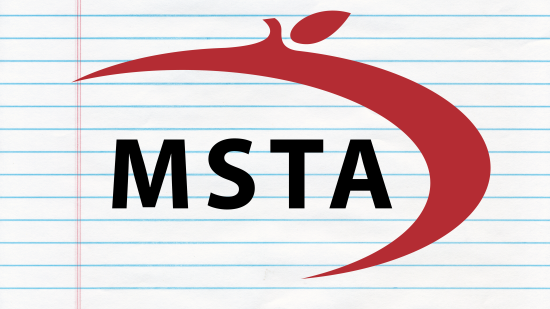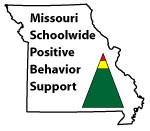|
Silversmithing is an interesting craft. It is something I would love to be able to perform myself, but I realize it takes a very steady hand to engrave the intricate designs onto the products. Silver sets were not only a symbol of status to visitors in a person's house, but the pieces could actually be spent or traded for merchandise or cash. One large bowl in the smith's place is valued at over $10,000. More practical and less precocious products are the ones being produced in the blacksmith's workshop. Piles of black coal are shoveled into the furnace to heat the metal. But don't let the blacksmith's perspiration and coal-smudged countenance fool you: he works hard and invests sore muscles to get his products to the common man. Whether your need is nails, horseshoes, or tools, the blacksmith has something interesting for most of the folks living in and around Colonial Williamsburg.
0 Comments
"Life is simpler when you plow around the stump."
(Unknown)
Some Questions:
Let's Think:
Only the priests could enter certain area of the temple, so Zechariah must have been quite respected individual to have been given this special role of burning incense for the people. The priest was an intermediary for the people and God. He must have taken his charge seriously and with much reverence to all parties involved. It is a serious matter to be responsible for the prayers and offerings of the people - to make sure they are presented appropriately to God. Not much really happens in these three verses, but perhaps Luke is still establishing the setting and characters of his account. The reader still wonders why this man is being selected for attention.
Inside, one is struck by the raw wood and metal. Color doesn't exist in the gaol - only the sepia tones of days gone by. Chains on the wall. Braced metal bars on the windows. Steel locks and shackles. Heavy doors. Large bolts and nails holding it all together. And steps rising to a hole with a removable lid (Do we wonder at the purpose?).
The following is the third lesson in a historical and faithful study beginning at 7:00 pm on Wednesdays. at the church of Christ in Carthage, Missouri, south of the Ford dealership PLEASE JOIN US! Washington's Culper Spy Ring
Bible Languages
Today, we are compelled to conduct background checks of our own on varying Bible translations. For what are we searching? Words, Thoughts, and PhrasesThe Big Questions Our focus for this study hinges on answering these two big questions. The goal is to get closer to the answers each week in our class. How did we we get the Bible? Is the Bible accurate and dependable? Guiding Questions In this lesson, we delve into more recent translations of the Bible with a discussion of Chapter 17 in How We Got the Bible.
While the authors of the Bible are Spirit-inspired, translators into different languages are not, and as such translations are subject to error. A wise student refers to multiple versions of the Bible seeks to understand the shortcomings and strengths of each version considered.
Tyndale - King James Tradition
Other Available Translations
Paraphrases
Any More? The third edition of the book we are using was copyrighted in 2003, and author passed from life in 2012, so newer presentations of Scripture (including the English Standard Version) have and will continue to be made available from booksellers. Still, our list is fairly complete, and our standards for selecting a version of the Bible remain steadfast. What are some of the variables in play when people, publishers, or groups decide a different or new translation is needed? Word-for-Word, LiterallyUnderstandably, we hope to know God's Words as God intended. It would seem that translating the original language into our language would be as simple as changing the Greek words to English words, period. However, there are nuances in the Greek that simple do not smoothly translate into the nuances of English. The late Hugo McCord (1911-2004) provides some commentary concerning a literal, word-for-word approach to translating the Bible. "Is a literal translation possible?" he asks. The thought of a word-for-word translation initially appears attractive, but right away the idea has to be discarded. Immediately, as one begins such, he retreats. For example, Matthew 1:18 would look like this: McCord introduces the need for paraphrasing (as he calls it), in which the translator changes the order of the words or yields to more of a thought-for-thought approach in order to salvage meaning from the text. Where McCord calls this a paraphrase, another translator terms as smoothing. McCord: All translations paraphrase... For this reason, a strict word-for-word approach is confusing and makes the Bible virtually unapproachable. As we will soon learn, at the other end of the scale, a paraphrase may mislead a student altogether. Vocabulary Issues
Compare and ContrastWe now shift gears away from the conservative, word-for-word approach to the more liberal paraphrase approach to the Bible. An online blogger built a short list of comparison verses between a paraphrase and the word-for-word and thought-for-thought versions of the Bible. Pondering this list of examples reveals some important issues for the Bible student who wants to read what God intends.
Application Question How important is it? Is it important to you that the Bible comes from reliable sources, or is it just a collection of wise sayings and advice for living? Many atheists agree that there is wisdom in the teachings of Jesus Christ, but they do not believe that Jesus is a Messiah, that He performed miracles, that He walked out of His own grave, or that He prepares a place where His faithful disciples will be rewarded for eternity. We contend that the Bible and everything it contains is supported by:
So how important is it to you that the Bible can be proven true? Do you believe there is irrefutable evidence to its validity? Is proof something that strengthens your personal faith in the existence of God? Should faith alone be enough to drive you to drive you to your knees? Is "blind" faith a stronger kind of faith? If so, then why did God provide so much evidence? Go forward with us - or in this case, back to the beginning - as we continue our study next time.
 There are references written that help us understand the Bible; there are talented men with a talent to connect portions of the Bible, showing it as the seamless Word of God; and there exist men who preach the truth of God’s Word with eloquence and sincerity. These men and books are apparatuses to help us comprehend any complexity that may exist in the Book of Books. However, there are men and women for whom the holy, inspired Book of God is not enough. For most of these, even though they haven’t read the Bible, the Bible is simply not enough. They look for signs that God is real. They continue to search for miracles, today. They watch for symbols of the Christ. Some search for archeological and scientific evidence (and isn’t it nice when these support the case for our beliefs?), but others look for modern prophecy, healings, and gifts, and for direct conversation with God. Television preachers have propagated this idea with their claims of God coming to them to give them a message outside the Word, changing the Message of the gospel to fit their own agendas; on the radio, callers conclude that if you become ill and don’t receive immediate healing, your faith is weak. Even in our own community, there are those who claim a special anointing, and to prove it they showcase their own talents for the congregation for applause. This is nothing new: in fact beliefs held by some are based in legends from the olden days. Some believe that the Bible doesn’t provide enough proof for its own infallibility, that nature and history are, in fact, superior to the Bible itself in proving the existence of God. Let’s ponder a few examples: Lion Cubs We know, from observation, that many animals are born with their eyes closed. One legend has it that lion cubs are actually born dead, but come to life on the third day when the daddy lion breathes life into them. Is this a sign from God to prove the story of Christ’s resurrection after His third day in the grave? Donkeys You’ll recall Jesus rode a donkey into Jerusalem. Some people have noticed a cross-shaped mark on the shoulders of donkeys, which they say, is a symbol that this is the breed that carried Jesus, that day. Nice story, but is it true? Robins It is said that a robin picked a thorn from the crown of thorns on Jesus’ head, during His crucifixion, and a spurt of blood dyed the bird’s breast red. The robin still sports a redbreast today. Some people have vivid imaginations to make up such tales. Dogwood Trees Of what kind of wood was the cross of Christ made? There is no reference to the wood itself in the Bible, but some people have made up their own answers to the question. One camp claims the trees growing in the American West, known as “quaking aspens” quake in shame because the cross was made from aspen wood. Some others believe the wood was from dogwood trees, the official Missouri state trees. They allege that in the past, dogwoods grew as tall as oak trees, but after the crucifixion, the trees never grew tall again. Now, the trees (out of shame, apparently) grow low to the ground with narrow, twisting branches that could never be made into the beams of a cross. Dogwood Blooms Some look to the blooms of the tree to strengthen their faith. The white flower has five petals, each tipped with red, allegedly illustrating the blood on the two feet, the two hands, and the head of Christ at His death on the cross. Redbud Blooms Supposedly, the blooms of the redbud tree are red either from shame or from blood. It is maintained that the blooms are red because it is from a redbud tree that Judas hanged himself after betraying Christ. In fact, Oklahoma’s state forestry officials had to convince ladies’ garden clubs this was not the tree of Judas before making it the official tree of the state, pointing to the fact that it grows in North America, and not in Israel. The list continues: people find they need these “signs” and “symbols” in order to keep their faith alive. Clearly, they do not realize that the Word of God is proof of itself. It is the record of miracles and prophecies that can’t be disputed. It is a record of scientific knowledge. If only we would study the facts, our faith will be more firmly established. If we only work to better realize the timeline of Biblical history, our faith will be strengthened. If we only spend time in the Word, wrestling with the Message, our faith will be supported and reinforced many times over. To establish and support my faith, I don’t need anything other that the Word of God. I love what Paul writes to Timothy in his second letter. He writes, in chapter 4: "I solemnly charge you in the presence of God and of Christ Jesus, who is to judge the living and the dead, and by His appearing and His kingdom: Preach the word; be ready in season and out of season; reprove, rebuke, exhort, with great patience and instruction. "For the time will come when they will not endure sound doctrine; but wanting to have their ears tickled, they will accumulate for themselves teachers in accordance to their own desires; and will turn away their ears from the truth, and will turn aside to myths. But you, be sober in all things, endure hardship, do the work of an evangelist, fulfill your ministry. For I am already being poured out as a drink offering, and the time of my departure has come. I have fought the good fight, I have finished the course, I have kept the faith…" (emphasis mine). We could not truthfully deny that what Paul says is true. These verses tell us that Paul was able to fight the good fight, finish the course, and keep the faith himself, because he did not pursue futile avenues of strength. Having his ears tickled was not his method of being ready in and out of season. Giving in to his own desires and not following the will of God was not how he remained sober, doing the work of evangelism. Turning to myths and legends was not how he endured hardship and fulfilled his ministry. In a nutshell, Paul practiced what he preached. On the one-year anniversary of the September 11 attacks on our nation, the Pick Three lottery numbers in New York were nine, one, and one. You may have been a part of the water cooler conversation about that coincidence. Are we to read into that happenstance that God is sending us a sign? Perhaps this was a sign that He, too, mourns the loss of life? Perchance He wants to remind us He is still with us even in stressful times? Maybe he wants us to do more gambling? We build our patriotism by looking on the symbols of the flag, and the Statue of Liberty, and that’s appropriate. It’s also appropriate for us to build out faith, by looking to the Bible, by looking to the proof of prophecy, by looking to the life, the cross, the tomb, and the ascension of Jesus Christ. Just the facts. 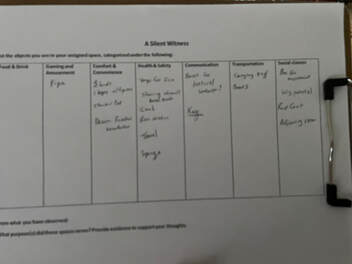 Well, here we go. This is the closest thing to a break-out room that Colonial Williamsburg offers. Later in the week, our teacher institute group was treated to a "History Mystery". We were led into the back side of a building and separated into groups to visit various rooms and hallways. Each group was provided with a clipboard with a prepared graphic organizer for notes. Our group - one from California, one from Kentucky, and one from Southwest Missouri - all took to an upstairs hallway where we had to look over a rail into a room. I used my phone to reach in and peak around corners, as well as to enlarge items that were too far away to see the details closer. There were multiple beds, a fireplace, and a dressing table. One bed, nicer than the other, was a four-poster. Clothes and toiletries were laid out in various locations, including a red coat on the bed in the left corner, just out of clear view.
In some locations sat fancy dishes, full meals presented on expensive platters. In other places, leftovers reflected cheaper tastes. A sign on the wall displayed prices. Apparently, wealthier guests could afford to keep a room reserved all year long, as well as nicer facilities. Poorer classes of people could probably afford a place on a bed, but not an entire bed, for a night. Other materials included astronomy equipment, a formal meeting room, in-progress card games, and bottles of ale. One fireplace hearth still showed signs of names carved into it by 18th Century guests.
Outside once again, I wandered further from our group to explore beyond the main building. Storage buildings, a small garden, and even a chicken enclosure, netted to avoid bird escapes, served to supply a working tavern.
Those powers of observation and prior knowledge are common to many areas of education. They are apparent in science, mathematics, and most certainly in literature and comprehension.
The Hoggatt Institute of Math and Science at Neosho Christian School was really busy, last week, experimenting with density. The first pictures below show students collecting different colors at different levels in a straw by using a variety of salt levels. Students were amazed with the results, and it was one of those times when the teacher could see the light come on above their heads as they realized their success. Earlier in the week, Mrs. Hoggatt did a demonstration of density using the following media, listed in the order of increasing density and pictured from top to bottom: The next step was to insert solid objects - bolts, a game die, popcorn kernels, beads, and a ping pong ball - to the mixture to see at which levels they would land. They settled where their densities determined they would.
One of the activities included in the day of "historic trades" included a visit to the farm where they grow tobacco, cotton, and corn. I reported about tobacco separately because of its centrality in supporting the growth of the area, but one also needs to feed and clothe one's family, so other crops are also vital to the support of the Virginia Colony - not to mention these crops were additions to the overseas trade, as well.
Most of us have no experience with growing tobacco. It is, in fact, an interesting process, and most people, generally speaking, love the aroma of a pipe with modern tobacco burning in its bowl. That's not the case, of course, with modern cigarettes and cigars, which only serve to burn our eyes and pollute our lungs.
The process of growing tobacco, on the other hand, is quite fascinating. The plant itself - the leaf, the stalk and all, is very sticky due to the tar being produced, and in handling them, the cultivator's hands become extremely sticky, as well. This would make for a very dirty day of working as everything would cling to the hands and clothing of the cultivator (We're talking about enslaved people, of course.). During the Colonial Williamsburg Teachers Institute, when we visited the farm, we were instructed that it was our job to pick the suckers off of the plants. I think most of us assumed the term suckers referred to the worms that might be crawling around, munching on the leaves of the plants. While we were to be on the lookout for caterpillars, suckers actually refer to something else altogether. The top portions of the tobacco plants are cut off at a certain point, tricking the plant. The plant, still makes enough nutrients for the entire plant, but with three feet cut off of the top, all of the nutrients are concentrated in the leaves remaining, making for a richer, more flavorful, harvest. At the same time, there are so many nutrients that the plant tries to use them to create new leaves. That's a no-no. These new leaves are called suckers, and as they form, they must be pinched off, keeping the nutrients focused into the larger, more desirable leaves. Eventually the leaves are harvested and hung in a warm, dry barn to dry. Later these are ground into flakes that can be used in habit of smoking.
What ensued was one of those conversations that makes most people uncomfortable. I, like others, was amazed that Colonial Williamsburg could ever be accused of unfairly misrepresenting Black people. In fact, Colonial Williamsburg usually leans to the left in advocating for today's social justice causes, but this worksheet was felt to be presented in a manner that some felt was racist and demeaning.
Now, if the truth be told, had the organizer of this worksheet left Enslaved People off of the worksheet completely, there would be another controversy over that. A solution could easily have been offered, and we could have moved past the controversy, but instead, we hashed and rehashed the complaint with no solution presented. I doubt this lesson will be in the teacher resources after this session, which is a shame. It really reflects the 18th Century opinion that Africans were considered property that could be bought and sold. I suppose the controversy comes in that we did not have the whole lesson before us, but only the worksheets as if we were students in a classroom. The lesson itself may have covered the idea that this was a list of assets or resources from an inventory, which would have included Enslaved People. While the practice of racial slavery is a shameful, ugly part of American history, it is not something we should shy away from. The continuing shame comes when we do not choose to have respectful conversations that offer solutions, but rather allow anger to dictate our behaviors. I will admit, it is not a page that I would use in its unmodified state. I would not want the paper to be taken home to parents who did not hear an entire, respectful lesson that contained the proper empathy and understanding of the lesson. The paper taken out of context could deliver the wrong message to families and cause the same type of controversy to "hit the fan" for me as a teacher. That could easily be avoided with a few changes to the approach. The following is a part of a historical and faithful study beginning at 7:00 pm on Wednesday evenings. at the church of Christ in Carthage, Missouri, south of the Ford dealership PLEASE JOIN US! "Religious Nutters"
The Mayflower Compact
The Big QuestionsOur focus for this study hinges on answering these two big questions. The goal is to get closer to the answers each week in our class. How did we we get the Bible? Is the Bible accurate and dependable? Timeline of the English BibleWe are familiar with the King James Authorized version of the modern English Bible from 1611, but many people would be surprised to hear that this version was really not the first. Timelines posted online can become quite tedious and distracting, so let's stick to our text. Neil Lightfoot, in Chapter 16 of How We Got the Bible, gives us a simple timeline that serves our general understanding. We'll get to that timeline, but first let's consider some questions:
Under the chapter title "The English Bible to 1611", Neil Lightfoot provides the following dates in How We Got the Bible. Let's dive into each as we review Chapter 16.
Eighty percent of the King James (Authorized) Bible is a preservation of the Tyndale translation from 1525. Lightfoot wrote, "William Tyndale is truly the father of the English Bible." These accounts may do little for your faith in the trustworthiness of the Bible. They do, however, show the lengths that people have gone through to get us to our point in history. Undoubtedly, throughout the ages - through the Renaissance, Reformation, Restoration, and Revival, the New Testament church did and does survive (in spite of the major historical record). Anticipatory, Guiding Questions In the next lesson, we will delve into more recent translations of the Bible with a discussion of Chapter 17 in How We Got the Bible.
Application Question How important is it? Is it important to you that the Bible comes from reliable sources, or is it just a collection of wise sayings and advice for living? Many atheists agree that there is wisdom in the teachings of Jesus Christ, but they do not believe that Jesus is a Messiah, that He performed miracles, that He walked out of His own grave, or that He prepares a place where His faithful disciples will be rewarded for eternity. We contend that the Bible and everything it contains is supported by:
So how important is it to you that the Bible can be proven true? Do you believe there is irrefutable evidence to its validity? Is proof something that strengthens your personal faith in the existence of God? Should faith alone be enough to drive you to drive you to your knees? Or is "blind" faith a stronger kind of faith? If so, then why did God provide so much evidence? Go forward with us - or in this case, back to the beginning - as we continue our study next time.
|
AnthemThe Hoggatteer Revolution
is an extensive, award-winning, inimitable, digital platform for Encouraging and Developing the Arts, Sciences, and honest Christianity in the beautiful, friendly LAND OF THE FREE AND THE HOME OF THE BRAVE This site is described as
"a fantastic site... chockablock full of interesting ideas, hilarious anecdotes, and useful resources." 
...to like, bookmark, pin,
tweet, and share about the site... and check in regularly for new material, posted often before DAWN'S EARLY LIGHT! History in ResidenceElementary Schools: Bring Mr. Hoggatt into your classroom for a week of engaging and rigorous history programming with your students. LEARN MORE BUILDING BETTER
|
||||||||||||||||||||||||||||||||||||||||||||||||||||||||||||||||||
